Transforming Knowledge

Centro Nacional de Alta Tecnología into Development

2022
Transforming Knowledge

Centro Nacional de Alta Tecnología into Development

2022
303 483
C755c Consejo Nacional de Rectores Centro Nac onal de Alta Tecnología
CENAT 2022 report : Transforming Knowledge into Dev elopment [Recurso electrón co] / Centro Nacional de A ta Tecnología – Datos electrón cos (1 archiv o : 220 mb) San José, C R : CONARE - OPES, 2023
ISSN 2215-6933
Formato pdf, (191 páginas )
1 INFORME DE LABORES 2 CIENCIA Y TECNOLOGÍA. 3 DESARROLLO CIENTÍFICO Y TECNOLÓGICO 4 CONSEJO NACIONAL DE RECTORES CENTRO NACIONAL DE ALTA TÉCNOLOGÍA 5 COSTA RICA. I. Título

Index 1 Presentation 2-13 CeNAT 14-28 Our Areas, Laboratories and Programs 29-43 National Nanotechnology Laboratory (LANOTEC) 44-62 CENIBiot Laboratory 63-78 National Advanced Computing Collaboratory (CNCA) 79-96 PRIAS Laboratory 97-115 Environmental Management Area 116-152 Institutional Results 153-159 Indicators of Institutional Work 160-169 FunCeNAT and Financial Results 170-184 Institutional Leadership 000
Acronyms
National Council of University Deans
Centro Nacional de Alta Tecnología
PRIAS Laboratory
National Nanotechnology Laboratory
National Advanced Computing Collaboratory
National Center for Biotechnological Innovations
Program for Creativity and Entrepreneurship in High Technology
University of Costa Rica
Costa Rica Institute of Technology
National University
State Distance Education University
National Technical University
Education Roaming
Costa Rican Metrology Laboratory
United States Agency for International Development
Central Bank of Costa Rica
Costa Rica Social Security Fund
National Council for Scientific and Technological Research
Costa Rican Institute of Electricity
National Institute for Learning (INA)
National Institute of Statistics and Census
Ministry of Agriculture and Livestock
Ministry of Science, Innovation, Technology and Telecommunications
Ministry of Environment and Energy
Ministry of Foreign Affairs and Culture
Special Fund for Higher Education
Agroforestry Systems
La Amistad International Park
University of the Republic of Uruguay
National Council for Scientific and Technical Research
University of Buenos Aires
National Atomic Energy Commission
Universidad del Valle, Colombia
National University of Engineering, Peru
Centre National de la Recherche Scientifique, France
University of Grenoble Alpes, France
Thermogravimetry
Fourier Transform Infrared
Scanning Electron Microscopy
Transmission Electron Microscopy
National Chamber of Pineapple Producers and Exporters
International Junior Science Olympiad
Latin American Congress of Students of Chemical Engineering and Related Majors
ACOMET Metals and Minerals S.L.
National Insurance Institute
Atomic Force Microscopy
Chemistry Camp
CONARE CeNAT PRIAS LANOTEC CNCA CENIBiot CREATEC UCR TEC UNA UNED UTN Edu-Roam LACOMET USAID BCCR CCSS CONICIT ICE INA INEC MAG MICITT MINAE RREE FEES SAF PILA UdelaR CONICET UBA CNEA Univalle UNI CNRS UGA TGA FTIR SEM TEM CANAPEP IJSO COLAEIQ ACOMET INS AFM QUIMICAM
National Marine-Coastal Science Station
International Chemistry Olympiad
NAVAL United States
Geological Survey
Inalve Food Industries
Florida Ice and Farm Company
LEAD University
National Aeronautics and Space Administration
National Oceanic and Atmospheric Administration
United States Geological Survey
European Space Agency
German Space Agency
ILSI Mesoamerica Association
Sciense, Technology, Engineering, Art and Mathemathics
Latin American Network of Young Leaders in Biotechnology
Cooperativa de Productores de Leche Dos Pinos R.L.
Innovation and Human Capital Program for Competitiveness
National Center for Food, Science and Technology
National Institute of Innovation and Transfer in Agricultural Technology
Spanish Agency for International Development Cooperation
Hamburg University of Technology, Germany
National Banana Corporation
Biotechnology
Specific Institutional Risk Assessment System
Annual Operational Plan
Natural Products Research Center
International Fund for Agricultural Development
Cooperativa de Caficultores y Servicios
Múltiples de Tarrazú R.L.
Pattern Recognition and Intelligent Systems
Laboratory
Information and Communications Technology
Superintendency of Telecommunications of Costa Rica
Wireless Internet Zones
Change in Use of Productive
Landscape Monitoring
German Corporation for International Cooperation
National Power and Light Company
National Monitoring System for Land Cover and Use and Ecosystems
State Phytosanitary Service
National Geographic Institute
State of the Nation Program
National Meteorological Institute
National Forest
Financing Fund
Organization for Economic Cooperation and Development
Global Partnership for Sustainable Development Data
World Bank
Central American Integration System
Global Environment Fund
United States Aircraft Insurance Group
National Civil Service Authority
Food and Agriculture Organization of the United Nations
Economic Commission for Latin America and the Caribbean
Interactive Platform for Tropical Climate Application
Industrial Sugar
Cane ChamberGuild of Health
Professionals
Farmers House
Organization of American States
National Association of Cattle Breeders
Ministry of Public Education
United Nations Educational, Scientific and Cultural Organization
ECMAR ICHO
ULEAD
NAVAL INALVE FIFCO
USGS
DLR
Mesoamérica
ALLBIOTECH DOS PINOS PINN CITA INTA AECID TUHH CORBANA BIOTECH SEVRI PAO CIPRONA FIDA COOPETARRAZU PRISLAB TIC SUTEL
NASA NOAA
ESA
ILSI
STEAM
Zii MOCUPP GIZ CNFL SIMOCUTE SFE IGN PEN IMN FONAFIFO OCDE GPSDD BM SICA GEF USAIG SERVIR FAO CEPAL PIACT LAICA CAPROSA CASAGRI OEA ANAGAN MEP UNESCO
CeNAT contributes to research and innovation for the benefit of the country
The 2022 Annual Report of Centro Nacional de Alta Tecnología is an exercise in accountability and transparency, which is based on best practices and is also framed as part of integral, transparent, and responsible management, as fundamental principles of our administrative, research, and knowledge transfer management.
The health crisis of COVID-19 forced us to rethink and adjust the way work and the provision of services were carried out. For this reason, the work in 2022 was still marked within this context, where a large part of the adaptive process was supported using technological infrastructure.
Eduardo Sibaja Arias

Director Centro Nacional de Alta Tecnología
CeNAT, as a program of Consejo Nacional de Rectores, has continued to responsibly fulfill its role of providing public value, through the articulation of the academic, business, and government sectors, thus contributing to research and innovation for the benefit of the country.
For this, it is essential to maintain a permanent reading of the environment and an efficient and effective allocation of resources, hand in hand with the defined strategic priorities. This 2022 CeNAT Annual Report integrates the actions, projects, and results of the laboratoriesLANOTEC, CENIBiot, PRIAS, and CNCA and the Environmental Management Area, with support from the administrative management of the Centro de Alta Tecnología Foundation (FunCeNAT). This document describes the generated contributions of public value, the projection towards the citizenry, the business ecosystem, and the governance institutionality.
One of the fundamental axes of the Center is the transfer of knowledge, described in the institutional results section of this document. For CeNAT, it is important to foster collaboration spaces to generate and facilitate knowledge transfer, through the development of socio-productive projects and training programs.
CeNAT capitalizes on more than 20 years of creation, which brings along with it challenges that entail analysis. The achieved goals drive us to set challenging objectives that continue to support the national development path, the strengthening of the well-being of the population, and its economic, social, and environmental sustainability.
1
Within the framework of institutional accountability and transparency, we present the 2022 Annual Report as a compendium of the entity's multidisciplinary management, which includes the work of the areas, laboratories, and programs of CeNAT, with the administrative management support of the Centro de Alta Tecnología Foundation (FunCeNAT).
This Report synthesizes the data, information, and results of the actions carried out in materials science and engineering, biotechnology, advanced computing, environmental management, and culture and society.

During these three years of the pandemic, it is essential to highlight the work of the personnel who maintained their commitment to quality and compliance with the different processes, while generating knowledge about science and technology at the service of the country.
The achieved goals drive us to set challenging objectives that continue to support the national development path by strengthening the population’s well-being and its economic, social, and environmental sustainability.
2
Background of CeNAT
In 1997, during the Figueres-Olsen national presidency, the initiative for the creation of a National High Technology Center in Costa Rica was raised, with the support of state universities, to attract investment in high technology. It was due to the role that the academy plays, as the main generator of research in Costa Rica.

In October 1997, the Government of the Republic presented to the Consejo Nacional de Rectores (CONARE) an initiative to use the formerly used building by the US Agency for International
Development (USAID) for the establishment of a national center in high technology, through which the academia would be linked with the Government and the productive sector, in areas of high impact linked to the attraction of foreign investment, for the benefit of national development. The proposal was based on experiences of countries such as Korea, Singapore, and Israel -the latter with the Technion or Israeli Technological Institute, located in Haifa.
3
The following year, on May 25, 1998, the Legislative Assembly enacted Law 7806, authorizing the transfer of the building to CONARE to create the Centro Nacional de Alta Tecnología and call it after Dr. Franklin Chang Díaz. Article 3 of that law would also provide for the creation of the Centro, de Alta Tecnología Foundation (FunCeNAT), whose purpose is to fulfill the legal duty of managing the resources required for the execution of the projects developed through CeNAT.

After the approval of the Law, CONARE, under the Coordination Agreement for State Higher University Education, in session number 5-99, on March 2, 1999, created CeNAT as a center for scientific and technological development, which would contribute to strengthening the research efforts of state universities.
The creation of CeNAT represented an inter-university encountering instance for the academy, the Government, and the productive sectors of the country. It encompasses different high technology fields, thus taking advantage of the opportunities that technological development offers to countries that, like Costa Rica, have invested significantly in the education of their population at all levels.
During its trajectory, CeNAT has consolidated a work platform based on the high technical-professional capacity of its staff in all areas and laboratories, its equipment, and its facilities, thus allowing it to promote various research and knowledge transfer projects, which drive the vision to transform knowledge into development.
4
Strategic Planning
One of CeNAT's essential characteristics is its continuous improvement and reinvention capacity in the new contexts and challenges that society has faced throughout its 23 years of existence.
The year 2022 was a difficult year, after going through two years of drastic changes when society was trying to return to a new normality. During the 2020-2022 period, the health crisis caused by the COVID-19 pandemic was faced, which caused the operational units of CeNAT and FunCeNAT to carry out an adaptation of reformulation and definition processes of
new operational actions, taking advantage of the capacity and ability of their staff for innovation. Also, a strength of the Center is its physical, instrumental, computer, and telematic infrastructure, as well as its innovative virtual and face-to-face lines of work, which ensure the integrity and efficiency of its workers and compliance with the research work.
5
Training, lectures, workshops, and virtual seminars were developed, as well as webinars, television, and radio news capsules, based on different platforms of great scope and impact, aimed at the different levels of society and productive sectors.
The year 2022 was characterized by the return to a new normality, without completely neglecting the virtual modality, always looking for new lines and modern and innovative tactics, for the development of institutional strategic objectives, and supporting the necessary social development to adjust to the changes generated in our environment.
This year, CeNAT has an updated philosophical framework of its main Strategic Plan and the Strategic Plans of its laboratories, including a mission, vision and development objective that guide the course of the institution during this five-year period. However, this philosophical framework should be updated and adjusted to the new reality during the year 2023, so that the 2024-2028 five-year work plan will be aligned with the National Plan for Higher Education.

USAID 6
CeNAT Centro Nacional de Alta Tecnología
Transforming knowledge into development
Mission of CeNAT
"We are an inter-university coordination body that facilitates and promotes the proper functioning and systemic development of scientific research in higher education, in various areas of high scientific-technological content, oriented to research, linkage, environmental development, and extension, within an innovation framework with the government, civil society, and the private sector” (as inspired by the constitutive deed of CeNAT).

Vision of CeNAT
"To be a leading innovative center that generates high-technology knowledge, products and services for the promotion of high-impact scientific-technological collaboration, promoting learning spaces, strengthening competitive development and knowledge exchange at the highest level, while enhancing the mechanisms that support inter-university and institutional coordination of excellence both at national and international levels".
In addition to its mission and vision statements, CeNAT incorporates the development goal into its philosophical framework, as a contribution by the Center to the development of the country.
Development Goal
“To conduct research activities that provide the country with science, technology, innovation, and strategic entrepreneurship for competitiveness and economic, social, and environmental development” (based on the constitutive deed of CeNAT).
Centro Nacional de Alta Tecnología
7
Objectives of CeNAT
The objectives come from the constitutive deed of CeNAT, which guides the work of the institution, its contribution and the areas that it should manage to address the impact of the scientific exercise.
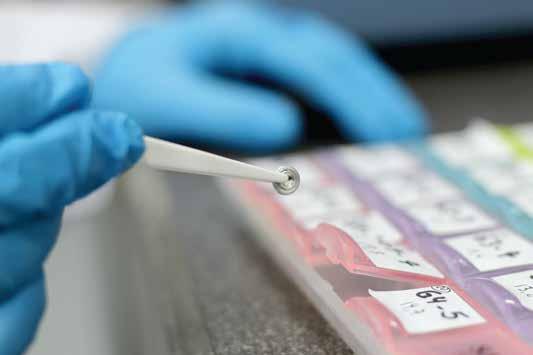
Main Objective
To conduct training and research activities that would provide the country with the necessary, relevant, and strategic technology for the competitive development of the different sectors of society in the economic, social and environmental areas.
Specific Objectives
The specific objectives describe the major categories that come from the constitutive deed towards their orientation to collaborate to the scientific development of the country.
8
Regarding Science Promotion
To promote the linkage of research activities to provide the country with the necessary, relevant, and strategic technology, for the competitive development of the different sectors of society in the economic, social and environmental areas.
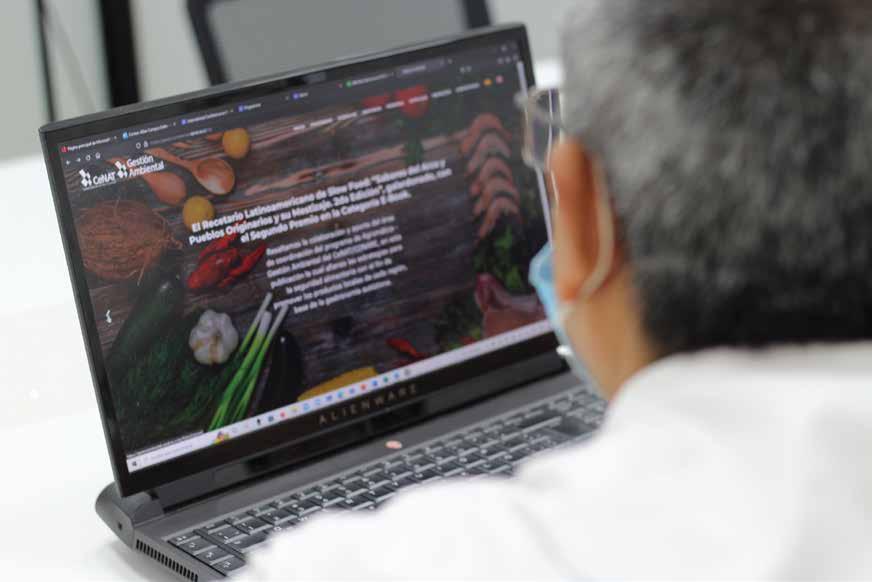
To carry out anything that represents social, cultural, and scientific wellbeing, according or pursuant to Article 1 of the Law on Foundations.
Regarding Information and Training
To promote the creation and to provide contributions to support thinking spaces, as well as to coordinate actions that support scientific and technological development and conformation of multidisciplinary teams of researchers with a high level of training and experience (high level of critical mass), especially at the graduate level.
To promote technology extension, through exhibitions, conferences, seminars, technology markets and training courses, among others.
9
Regarding Contribution to Postgraduate Specializations
To promote and support the implementation of academic research programs at the graduate level in coordination with state higher education university institutions.
Regarding Inter-Sectoral Linkage
To promote the coordination of public and private sectors involved in generation, training, transfer and application of high technology.
To encourage and promote the generation of businesses with high technological content and high added value for the country.
Regarding Contribution to the Country's Development
To conduct -with research purposesactivities for development, licensing, utilization of resources (know-how), donation or purchase of patents, inventions, industrial or utility models.
To publicize and sell publications arising from research; to assign, sell, transfer and grant licenses for use of its patents, industrial or utility models, as well as any other assets that belong to its intellectual property.

10
Institutional Values of CONARE - CeNAT
Teamwork
Discipline
Respect
Communication
Responsibility
Tolerance
Honesty and Loyalty
Commitment
Values and Principles Enforced at CeNAT
Our values comprise those indicated by CONARE; also, the values and principles that are enforced at CeNAT are presented below.

11
Values Enforced at CeNAT
Willingness
Ongoing learning attitude
Principles Enforced at CeNAT
Critical and self-critical position to address improvements in all research processes
Tolerance and flexibility in the processes that are developed
Continuous personal improvement attitude at the scientific level
Collaborative and integrated work in all processes.

Scientific rigor in the studies undertaken.
Work conducted within interdisciplinary complexity.
Effective communication.
Accountability in goals and times set for each task.
Commitment to impact generation on the actions undertaken.
to excellence in the work that is undertaken
Transparency in the exercise of research
12
CeNAT Strategic Lines
The strategic lines are present in the work of CeNAT. They are defined as cross-sectional lines of the substantive activities carried out by the laboratories and the Environmental Management Area.

These strategic lines highlight the importance of the collegiate work of each dependency that makes up the organization, where each action contributes to efficiency and projection.
The strategic lines and their definitions are identified below.
Knowledge Generation: It provides the country with knowledge on relevant and strategic high technology, for the competitive development of the different sectors of society in the economic, social, and environmental scopes.
Learning Transfer: It supports learning spaces from interuniversity coordination to articulate actions that support scientific and technological development and the formation of multidisciplinary groups of researchers with high scientific rigor.
Internationalization: It strengthens knowledge exchange at the highest national and international levels, both in the public and private sectors.
Institutional Management: It strengthens organizational management through mechanisms that support the sustainability of CeNAT promoting efficient and transparent accountability and the development of scientific relevance.
13
OUR
AREAS, LABORATORIES, AND PROGRAMS

Our Areas, Laboratories and Programs
Laboratories
National Nanotechnology Laboratory (LANOTEC)
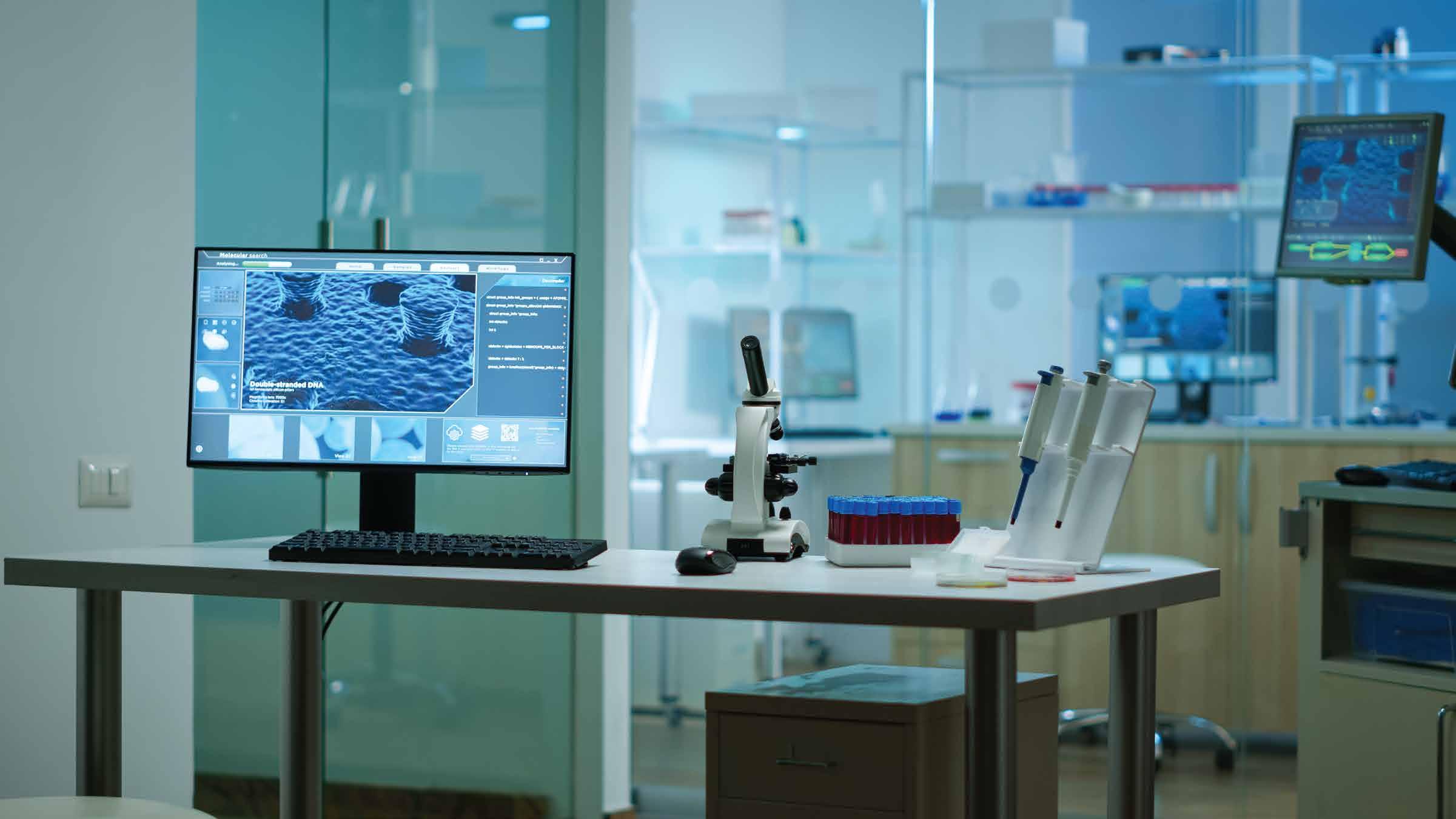
CENIBIOT Laboratory
National Collaboratory of Advanced Computing (CNCA)
PRIAS Laboratory
Areas
Materials Science and Engineering
Biotechnology
Advanced Computing
Manufacture
Environmental Management
Science, Culture and Society
Programas
Climate Observatory
Agromatics
CREATEC
CeNAT - CONARE Scholarships
CeNAT Teaching
15
Creation of Divisions
In accordance with agreement 5-99 of the Consejo Nacional de Rectores, CeNAT is comprised by the following areas:
I.
New Materials Area: It was constituted in 2004, by the National Nanotechnology Laboratory (LANOTEC).
II.
Biotechnology Area: Since 2013, this operational area is part of CENIBiot Laboratory.
III.
Advanced Computing Area: The National Advanced Computing Collaboratory (CNCA) is part of it, since 2009.
Manufacturing Area: There is no operating unit attached to it.
Science, Culture, and Society Area: This is a cross-sectional area that is managed directly by the Directorate of CeNAT. It encompasses the CeNAT Teaching, CREATEC and CeNAT-CONARE Scholarship programs.
Environmental Management Area (AGA): This area includes one laboratory and two programs:
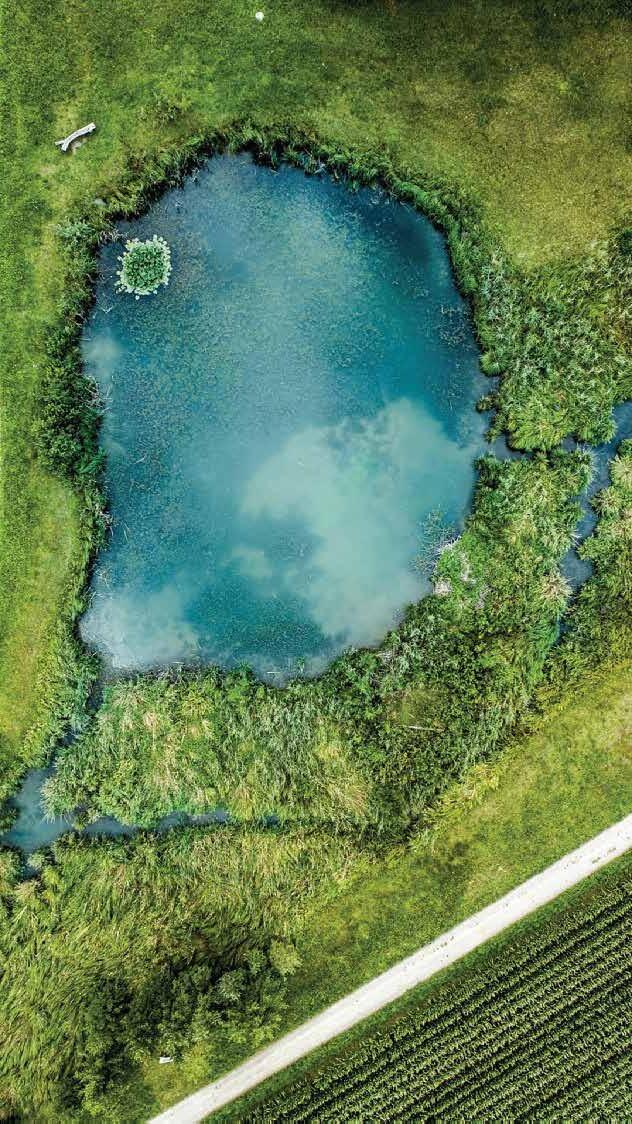
PRIAS Laboratory, since 2003.
Programs:
Variability and Climate Change Observatory, since 2010.
Agromatics, Food Safety, and Slow Food, since 2010.
IV.
V.
VI.
16
9 years
2013: CENIBiot Laboratory
12 years
2010: Variability and Climate Change Observatory
2010: Agromatics, Food Safety and Slow Food

13 years
2009: Advanced Computing Collaboratory (CNCA)
CeNAT 2022
18 years
2004: National Nanotechnology Laboratory (LANOTEC)
19 years
2003: PRIAS Laboratory
1998 (24 years)
17
Consejo Nacional de Rectores
Scientific Council comprised by CONARE Vice-Chancellors for Research
General Director of CeNAT
Science and Engineering of Materials
Biotechnology

Advanced Computing
Environmental Management
Science, Culture and Society
LANOTEC CENIBiot CNCA PRIAS
Knowledge Generation
Knowledge transfer
Internationalization
Sustainability
Knowledge Generation
Knowledge transfer
Internationalization Sustainability
Knowledge Generation
Knowledge transfer
Internationalization Sustainability
Agromatic Climate Observatory
Knowledge Generation
Knowledge transfer
Internationalization Sustainability
Knowledge Generation
Knowledge transfer
Internationalization Sustainability
Knowledge transfer
Internationalization Sustainability
18
Directorate of CeNAT
For CeNAT's Directorate, the year 2022 posed a new challenge: to come out of a drastic change that the pandemic led us to, to return to a new normality, which implied defining a line of work that would cover both environments, in a balanced way.

In terms of technical achievements, it was a very productive year for CeNAT in publications, research, and knowledge transfer, among others, contributing to the development of society.
The managing actions of CeNAT's Directorate are aligned to what was defined in the constitution deed of the Centro Nacional de Alta Tecnología, as follows: “To ensure the correct performance of CeNAT, following the guidelines dictated by CONARE and the strategic lines defined by the Scientific Council.”
The fundamental basis of the work of the Directorate is to watch over the strategic lines of the Center, such as:
Monitoring and execution of agreements and conventions of CeNAT.
Establishment of the operational tactics and goals to be developed by the organization.
Overseeing the Sciences, Culture, and Society areas, which integrate the following programs:
Continuous follow-up to the actions carried out by each area and program attached to CeNAT.
CeNAT-CONARE Scholarships 19
CENAT Teaching CREATEC
CeNAT Teaching
The Science, Culture and Society area oversees the CeNAT Teaching program, which envisages knowledge transfer activities.
CeNAT Teaching organizes lectures, workshops and conferences aimed at different sectors of society, government, and academia, taught by world-class national and international experts, and linked to activities and/or projects of CeNAT, in scientific and technological subjects. In 2022, CeNAT Teaching was not operational.
20
Relevant Lectures
During the period covered by this Annual Report, there was participation in relevant lectures, which are listed below:
LANOTEC
What are the answers from science for the reuse of recovered plastics? Ibero-American Night of NII 2022 Researchers, a worldwide event organized by Ibero-American States (OEI) and held virtually on September 29 and 30, 2022. It was taught by Dr. José Vega Baudrit.
Nanotechnology and LANOTEC: on the way to regulation in Costa Rica. Nanotechnology Conference in Costa Rica, organized by ACS Chapter UNA. The lecture was taught by Dr. José Vega Baudrit, on October 12, 2022.
“Characterization of ultrathin layers and nanometric patterns by AFM”. Participation at the "Membrane technologies for the treatment and recovery of water resources” workshop, organized by CSIC, UBA, and LANOTEC. October 10 to 14, 2022. Taught by Dr. José Vega Baudrit.

Validation of scientific resources. On November 3, 2022, Dr. José Vega Baudrit taught a lecture at the Ministry of Foreign Affairs and Worship, Session of the Workshop on Economic Diplomacy - CTI, organized by MREC, Monserrat Vargas.
“Solid-lipid nanoparticles to improve the antioxidant effect of bioactive molecules derived from Curcuma longa and Uncaria Tomentosa”, webinar. Discussion panel on Opportunities and challenges of the bioeconomy paths in the Russia-Ukraine scenario, with the conference “Biorefineries of waste”, organized by IICA, on July 08, 2022. It was taught by Dr. José Vega Baudrit.
21
Let's talk about microplastics, what does science tell us? The Nanoandes Network, Loja, Ecuador. Virtual meeting organized by Nanoandes 2022, where researchers Yendry Corrales Umaña and Melissa Camacho Elizondo discussed the topic: Biomimicry, on November 16, 2022.
"Nanomaterials in Medicine and 3D Applications" 1st International Seminar of the CYTES ENVABIO100 Network: Obtaining biodegradable films 100% from natural origin for the food industry, organized virtually by the Envabio Network of Cyted, November 14 to 16, 2022.
“New challenges for scientific research: the search for scientific evidence based on laboratory accreditation processes”, Nanotechnology Dissemination Workshop, Montevideo, Uruguay. Taught by Dr. José Vega Baudrit, from August 29 to September 1, 2022.

"Scientific evidence and myths about microplastics: analysis and innovation", Chemistry Congress, CQCR 2022. Taught by Sergio Paniagua Barrantes and Andrea Rivera Álvarez, on November 29, 30, and December 1, 2022.
CNCA
In silico Identification of miRNA as possible therapeutic targets for Micro Invasive Bladder Cancer (MIBC) treatment, by researcher Maripaz Montero, at the "4th IEEE International Conference on BioInspired Processing, BIP 2022".
Simulations and epidemiological data in Central America, by researcher Mariela Abdalah, at the "National Congress of Public Health CONSAP 2022".
22
V Biosynthesis of nano-metalloids in Pseudomona putida: Madrid Spain. Speaker: Max Chavarría Vargas.
CENIBiot
Biodiversity and bioeconomy come together to promote changes in sustainable agricultural production systems, WAITRO. South Africa. Emanuel Araya Valverde. August
https://www.acs.org/content/acs/en/meetings/
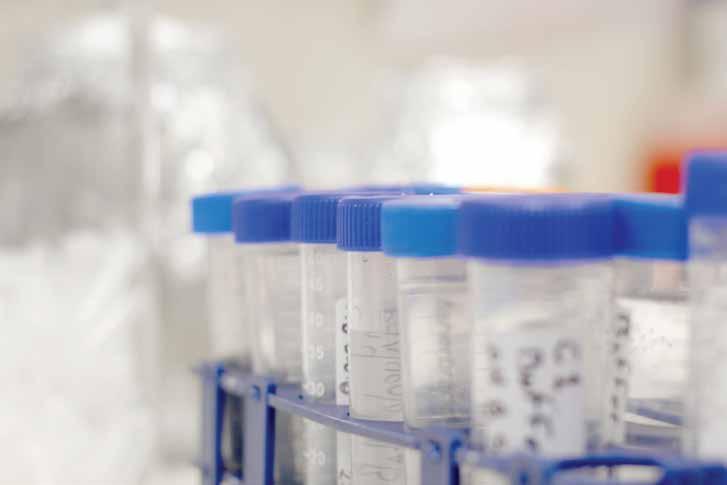
Environmental Management
Lecture at the Ibero-American Night of Researchers 2022. Organized by the Ministry of Science, Innovation, Technology, and Telecommunications (MICITT), September 2022. Taught by Dr. Patricia Sánchez Trejos.
Workshop on Differentiation Strategies for rural development to Uganda-Slow Food. Training taught by Dr. Patricia Sánchez from Agromatics, on food safety and Slow Food subjects. On April 25, 2022.
Lecture on "Identification, conservation, and valuation of local and cultural products, as a territorial promotion strategy through GIAHS / Globally Important Agricultural Heritage Systems), aimed at tourism" taught by Dr. Patricia Sánchez Trejos. May 27, 2022.
Presentation - "The GIAHS, as a heritage valuation strategy for the development of Tucurrique", taught at the XXXIII Latin American Congress of Sociology, ALAS Mexico 2022. This presentation was taught by Dr. Patricia Sánchez Trejos, coordinator of the Agromatics Program. August 2022.
Live lecture in Turkey at the 1st International Symposium on Traditional Foods and Sustainable Food Systems on Food Systems, GIAHs, and Blue Zones. Taught by Dr. Patricia Sánchez Trejos, on August 10, 2022.
23
CeNAT– CONARE Scholarship Program





overlapping scholarships with respect to the year 2021 and as a result of a rethinking of the strategies so that more contestants could meet the requirements. For this reason, the 2022 scholarships began in June of the same year and are projected to end in April 2023.
At the request of the State University for Distance Education (UNED) to adjust the dates to its school cycles, the 2023 scholarship contest began on November 28, 2022, and will run until May 7, 2023, with the purpose of starting execution in August 2023.
To achieve greater identification of the student body, five different promotional posters were designed, according to affinity with the different laboratories, in addition to four promotional videos. The posters are displayed below.

24
Table 1
Scholarships
allocated (by university and laboratory by year) from 2017 to 2022

Total number of
UCR UNA UNED ITCR UTN TOTAL / LAB UNIVERSITY Source: Information from the year 2022 provided by the Laboratories and Area of CeNAT.
2017 to 2022
and
CENAT - CONARE 2017 2017 SCHOLARSHIPS NUMBER - UNIVERSITY - LABORATORY LANOTEC CENIBIOT ENVIRONMENTAL MANAGEMENT CNCA PRIAS TOTAL / UNIVERSITY 1 1 0 2 0 4 2017 3 2 0 1 0 6 2018 1 0 0 2 0 3 2019 5 1 0 2 0 8 2020 23 4 1 9 0 37 Subtotal 21 3 0 4 0 28 Subtotal 5 3 5 2 0 15 Subtotal 14 1 0 6 0 21 Subtotal 2 0 0 0 0 2 2017 1 0 0 3 0 4 2018 5 0 0 1 0 6 2019 2 1 0 0 0 3 2020 0 1 1 0 0 2 2017 1 1 0 0 0 2 2018 1 1 2 0 0 4 2019 0 0 1 1 0 2 2020 4 0 0 2 0 6 2017 5 1 0 1 0 7 2018 4 0 0 0 0 4 2019 4 0 0 1 0 5 2020 7 0 1 1 0 9 2021 2 1 0 0 0 3 2021 2 0 0 2 0 4 2021 1 0 1 0 0 2 2021 6 6 3 9 0 24 Subtotal 0 2 2 0 0 4 2017 0 2 0 1 0 3 2018 1 1 1 2 0 5 2019 0 0 0 1 0 1 2020 2 0 0 3 0 5 2021
CeNAT-CONARE scholarships
by laboratory
area
7 4 3 4 0 18 2017 10 6 0 6 0 22 2018 12 2 3 5 0 22 2019 11 2 1 5 0 19 2020 14 1 2 6 0 23 2021 2022 6 0 0 1 0 7 2 1 0 0 0 3 2022 2 0 0 1 0 3 2022 2 0 0 0 0 2 2022 3 1 0 2 0 6 2021 15 2 0 4 0 21 2022 UCR UNA UNED TEC UTN TOTAL / LAB UNIVERSITY Source: Information on the year 2022 provided by the Laboratories and Area of CeNAT. ALLOCATION OF SCHOLARSHIPS 2017 - 2022 CNCA 14 1 0 6 0 21 CENIBiot 21 3 0 4 0 28 LANOTEC 23 4 1 9 0 37 PRIAS 6 6 3 9 0 24 Total / University Environmental Management 5 3 5 2 0 15 LANOTEC 37 CENIBiot 28 Environmental Management 15 CNCA 21 PRIAS 24 69 17 9 30 0 125 25
INDIVIDUALIZATION OF THE ALLOCATED SCHOLARSHIPS
Maria Valeria Rojas Chinchilla
“Evaluation of the crosslinking capacity of proanthocyanidins from Cas fruits (Psidium friedrichsthalianum) on collagen matrices for tissue regeneration”.
Sheila Jiménez Mesén
Evaluation of inducers and fermentation conditions on the activity of cellulolytic enzymes produced with the fungus Penicillium oxalicum, using banana rachis.
David Redondo
Celia Miranda Oporta
Paola Sánchez
Redesign of the temperature control system of a chemical compounds extraction plant.
Development of Biomimetic Bone Structures Using Bioprinting Method by Extrusion of Volatile Solvents.
Synthesis and characterization of carbon quantum dots by the microwave-assisted pyrolysis method from citrus and non-citrus juices.
Jean Guerrero Piña
Estefanie Tatiana Grant Rogers
Design, manufacture, and performance evaluation of graphene oxide membranes for biogas biorefining.
Evaluation of the technical and environmental pre-feasibility of the synthesis of a copper-based pigment recovered from the cooling system of waste laptop computers.
Keylan Simmons Coto
Ricardo Quesada Grosso
Development of a TiO2 photocatalyst on (FTO) to implement in the degradation of persistent pollutants in aqueous media.
Development of two types of nanoparticles that carry natural extracts of polyphenols obtained from a natural extract of a native plant from Costa Rica.
Ana Carlota Reyes Ferrufino
Biochemical and histological characterization of the darkening phenomenon during the initial in-vitro sprouting of bamboo nodal explants (Guadua amplexifolia J. Persl.).
No. Student Proposal University Area/Laboratory
Table 2
UCR UCR TEC UCR UCR TEC UCR UCR UCR UCR CENIBiot CENBiot CENIBiot LANOTEC LANOTEC LANOTEC LANOTEC LANOTEC LANOTEC LANOTEC 1 2 3 4 5 6 7 8 9 10 26
Eduardo Aguilar Bejarano
Cheminformatic Approaches for the Quantitative Prediction of Tautomerism in Bioactive Molecules.
Carlos Pasquier Jaramillo
Fabiola Solano
Risk classifier for individuals susceptible to COVID-19.
Remote sensing for the evaluation of some water quality parameters: Tortuguero River.
Michael Emilio Quesada Valverde
Andrea Hidalgo Piedra
Shirley Méndez Cordonero
Comprehensive inventory and asessment of geosites for the promotion of a tourist route in Coto brus, Costa Rica.
Neotectonics of the Jaris fault in the transtensive segment of Corralar, Central region of Costa Rica.
Generation of cartographic and geostatistical material on the dynamics of land cover change in the Peñas Blancas National Wildlife Refuge.
Hanzel León González Róger Andrés Hernández Jiménez
Andrea Rivera Álvarez
Diversity index based on the use of geospatial tools to identify vulnerable areas in the Guácimo-Tortuguero Biological Corridor.
Influence of the intensity and amount of precipitation on the deposition of atmospheric nitrogen in the tropical cloud forest in Monteverde, Costa Rica.
Development of a clean, photovoltaic, and wind powered system from peripherals (computers, refrigerators, compressors, and others) of a mobile laboratory, an electrical prototype, Mission Antarctica 2022 – 2025.
Fiorella Calderón
Design of a Prototype Mobile Research Center powered with clean energy for the scientific expedition to Antarctica in January 2022-2025.
Karina Ramírez Monge
Development of two innovative prototype products from Coyol nut oil and expeller for the sustainable development of a community in Abangares.
NUMBER OF CENAT-CONARE 2022 SCHOLARSHIP PROJECTS BY LABORATORY AND AREA
UCR UCR TEC UCR UCR UNA TEC UCR UCR TEC UCR CNCA CNCA PRIAS PRIAS PRIAS PRIAS PRIAS PRIAS Environmental Management Environmental Management Environmental Management 11 12 13 14 15 16 17 18 19 20 21 LANOTEC 7 CENIBiot 3 Environmental Management 3 CNCA 2 PRIAS 6
No. Student Proposal University Area/Laboratory 27
Summary
All the approved proposals have a high impact both in the generation of new knowledge (through articles, graduation papers, generation of new products, etc.), and in issues related to clean energy, generation of new products, and prevention of natural disasters, among others.
It should be noted that a new schedule is being tested for the 2023 scholarship contest, at the request of UNED, to try to reach a larger population from all universities. In the same way, new communication strategies are being worked on for this purpose.

28
LANOTEC NATIONAL NANOTECHNOLOGY LABORATORY

LANOTEC

(CeNAT-CONARE) 2022 Scientific publicationsDissemination DISTRIBUTION OF THE GOAL INDICATORS Public Private Total 27 11 38 Knowledge transfer activities 27 3 30 Research projects 11 14 25 Attention to students Agreements 1 1 2 56 10 66 30
LANOTEC Annual Operational Plan
Introduction
The National Nanotechnology Laboratory (LANOTEC) is attached to the National High Technology Center (CeNAT). It was officially inaugurated on October 18, 2004, and began its activities as a research center in 2006, with the appointment of its current director.
Currently, LANOTEC is widely recognized in the region for maintaining a technological leadership at the Central American and the Caribbean levels. A recent publication lists it as one of the three centers in the region with a wide potential in technologies associated with microtechnology, nanotechnology, and materials science, among others.
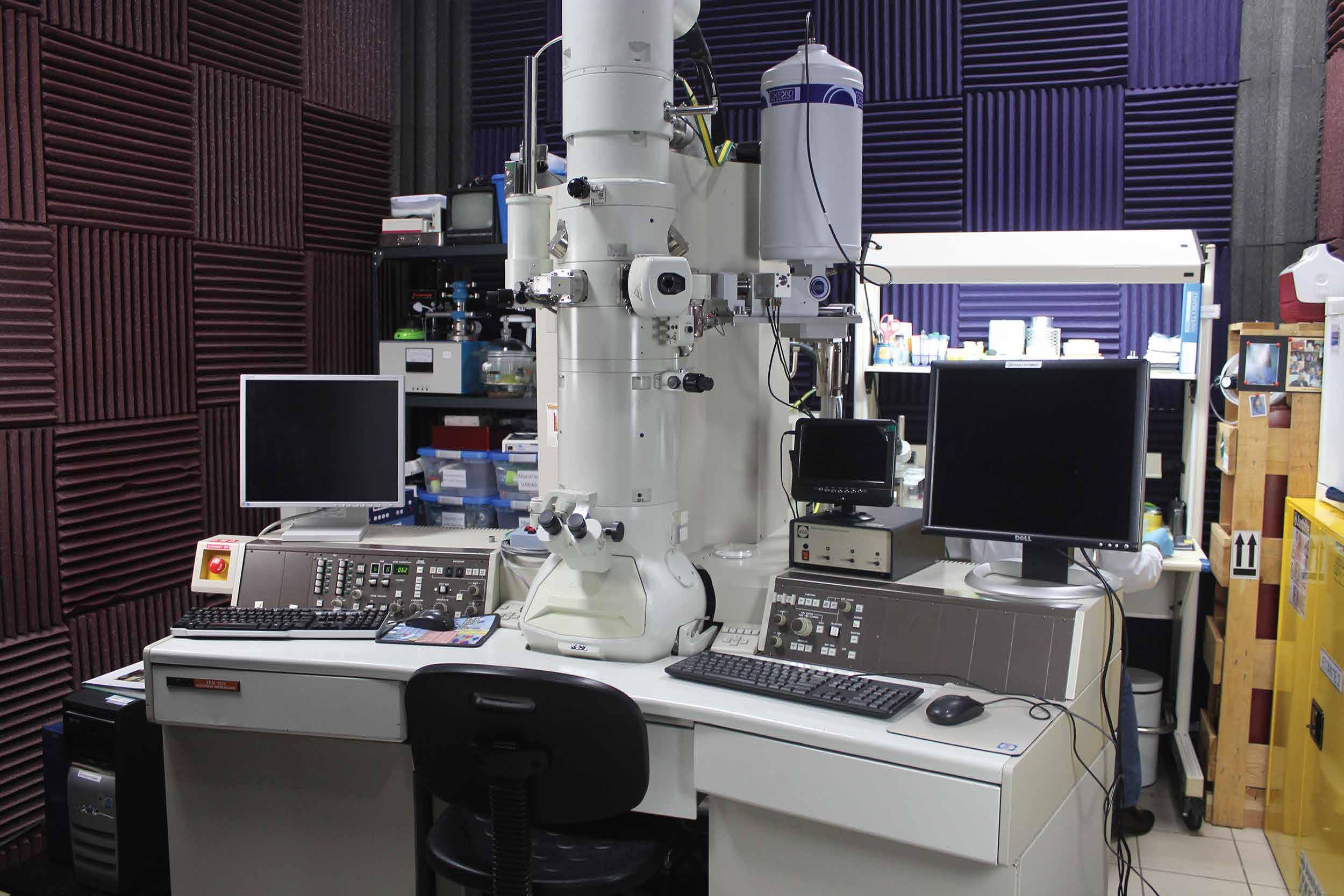
In addition, it has a strategic vision oriented towards supporting the scientific vocations of children and young people to consolidate the national efforts towards the areas of STEM and gender issues.
Currently, LANOTEC achieves a greater impact in the activities carried out around the areas of scientific research, innovation-entrepreneurship, and support to companies in the health sector, specifically in medical devices and pharmacy, under the ISO 17025 standard certification process, as well as teaching and extension.
31
Development Goal
To generate scientific value from nanobiotechnology to process and product innovation initiatives that impact economic development and the Sustainable Development Goals of Costa Rica.
Mission Statement
We are a research laboratory for the use of nanobiotechnology that has specialized professionals who carry out studies with the highest scientific standards in the framework of innovation and development for the public, private, and social sectors of the Region.
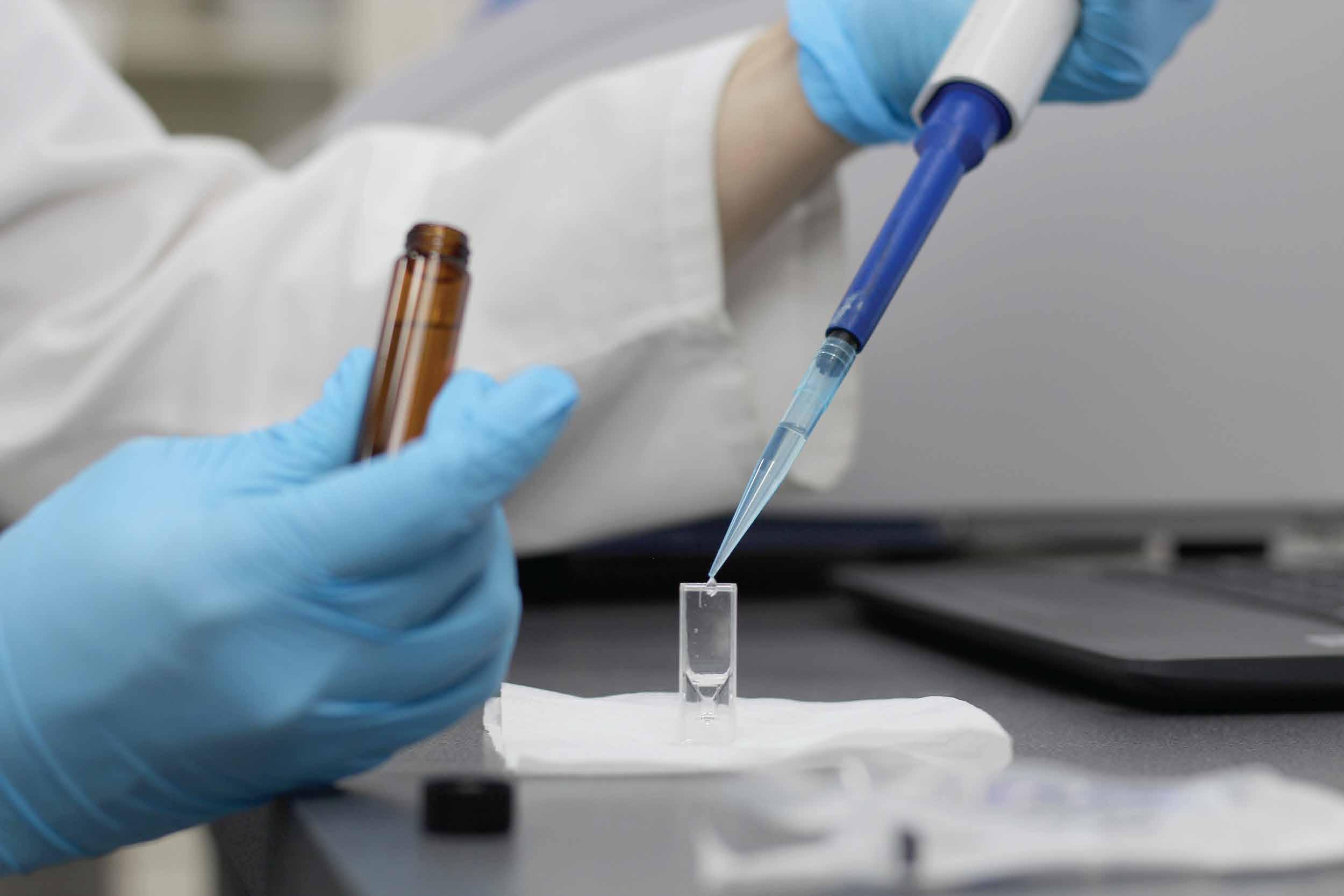
Vision Statement
We aim to be a self-sustaining research laboratory with high economic impact both nationally and internationally, which contributes to knowledge generation in nanobiotechnology, being a leader in strengthening competitive development and intersectoral articulation.
32
With the work carried out in the different areas, the following is sought:
Values
Collaborative management in the projects that are undertaken.
Socialization of scientific information.
Responsible project management.
Commitment to the processes and products that are undertaken.

Principles
Efficient use of time.
Efficient use of technological infrastructure.
Accountable administrative management of research projects.
Generation of ideas for process improvements.
Innovation and development
Use of nanotechnology
33
Nanobiotechnology
Objectives
To conduct research in the areas of micro and nanotechnology, focused on nanostructures, microsensors, and advanced materials, with potential applications on energy, environment, health, and information technologies.
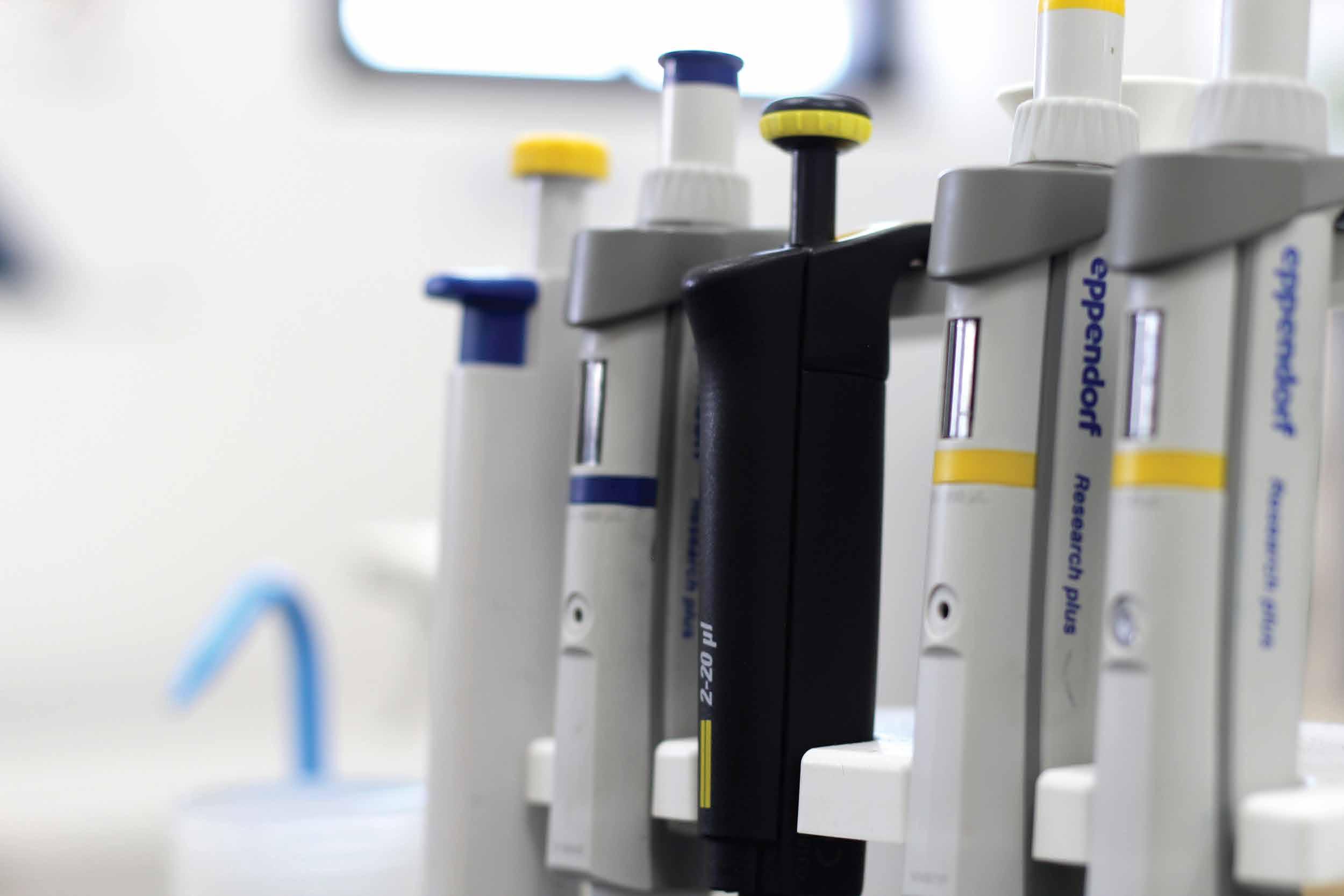
To serve as a nanotechnology training center-laboratory in collaboration with government institutions, stakeholder companies, and state education academic programs.
To establish strategic alliances with high-tech industries (both national and foreign) for the development of specialized services and products that contribute to the productive sector of the country.
34
Strategic Nodes
Innovation and entrepreneurship
ISO 17025 accreditation
Scienti c research
Extension and teaching, scienti c vocations
Art (Nanoart, conceptual art, art, and sports)
ISO 17025 accreditation (in process)
Outreach and Teaching
Innovation and entrepreneurship
Scienti c research
Art (nanoart, conceptual art)
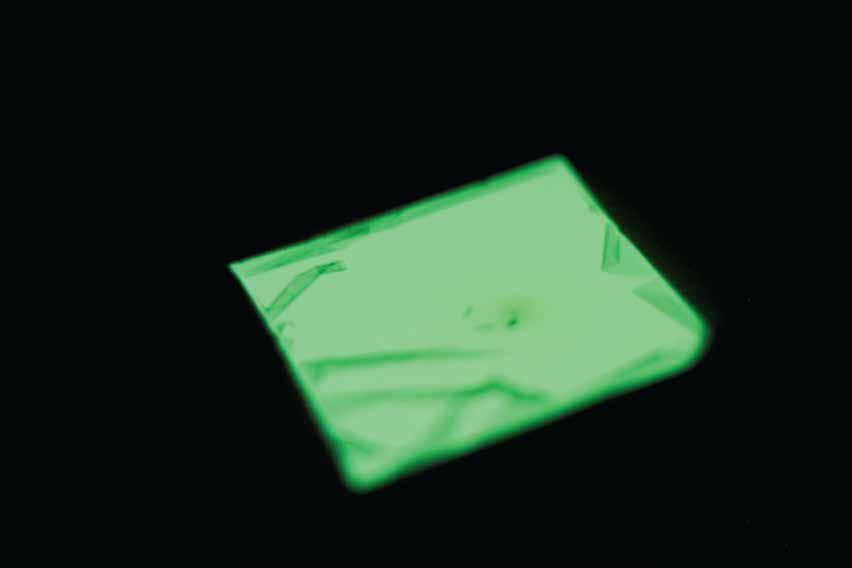
35


Impact Indicators Publications Indexed 31 38 Non-indexed 4 Specialized 3 Knowledge transfers 11 Q1 Q2 Q3 Q4 Specialized Non-indexed TOTAL 14 6 1 1 3 2 27 Public Private 4 2 2 12 11 Revaluation of by-products of the Costa Rican pineapple agro-industry to obtain nano and micromaterials of commercial interest. Nanotechnology in Costa Rica: LANOTEC and its tools for the development of R+D+i. Bioinspired nanomaterials for potential biomedical applications. Lecture – “Obtaining nanomaterials of industrial interest from the recovery of agro-industrial waste”. Lectures, workshops, presentations taught internationally 36
Lecture – “Impact of environmentally relevant concentrations of silver nanoparticles on the soil microbial community”.
Discussion panel – “Opportunities and challenges of the bioeconomy paths in the Russia-Ukraine scenario”.
II Nanotechnology Dissemination Workshop, Montevideo, Uruguay.
NII 2022 Ibero-American Night Meeting of Researchers.
Workshop - “Membrane technologies for the treatment and recovery of water”.
Lecture about advances in biorefinery, use of

16 Talks, workshops, presentations taught nationwide
Circular Economy in coordination with ACIPLAST.

Artificial intelligence and data science. Clusters in Costa Rica.
Nanotechnology within the

People benefited 650
37

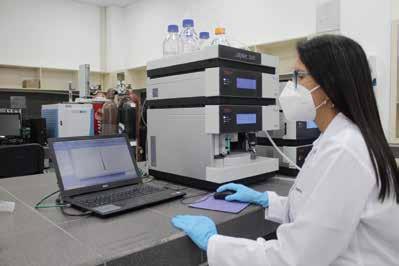
Research Projects Public: 11 FEES CONARE Funds Internal (OPERATIONAL LANOTEC) National Linkages International Linkages 2 2 7 2 5 Private: 14 CONICIT Funds and 2 MICITT Funds Private funds Privately Funded Projects Scientific vocations 4 6 4 Projects in negotiation Korea 2023 Proquinal, Phase III Proquinal Fungi TRISAN Attention to Students Scholarships 13 Accompaniments in thesis 20 Interns 1 Volunteers 2 National interns 15 Professional practices 15 TOTAL 66 TOTAL 25 38
Linkages
National Academic Sector:
University of Costa Rica
National University
State University for Distance Education
Costa Rica Institute of Technology
ULatina
Ulacit
Invenio
International University of the Americas (UIA)
International companies:
Philips Morris
Purdy Motor Group
Confluent
Boston Scientific
Allergan
Smith & Nephew
Microvention
Proquinal
CooperVisión
Establishment Lab
Bayer
Ilsi Mesoamerica
International Universities or Institutes:
Adolphe Merkle Institute, Switzerland
University of the Republic of Uruguay
Private Northern University, Peru
Max Planck Institute, Germany
Fraunhofer Institute, Germany
Bar Ilan University, Israel
University of Belgrade, Serbia
National companies:
Stein Laboratories
Calox Laboratories
Lisan Laboratories

Florida Ice & Farm Corp.
Asoproa
Ecoinsumos
Agreements
National 1
International 1 UIA
Politecnico di Torino
TOTAL 2
39
Summary of Projects
FEES PROJECTS
Project
Role of neutrophils and its complement in the modulation of the immune response against important bacterial infections in Costa Rica.
inter-university collaboration, and the training of new researchers. It improves the general understanding of two bacterial infections of high importance in animal and human public health at the national level.
Obtaining biodegradable films with antimicrobial activity from agro-industrial and marine waste.
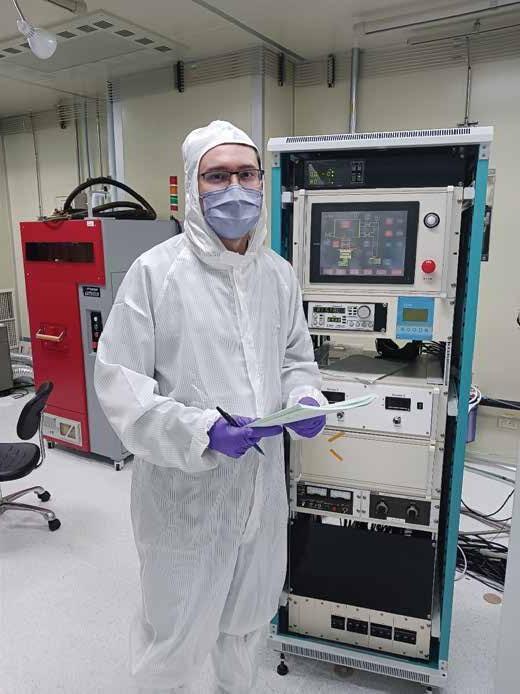
CONARE-FUNDED PROJECTS
The goal of this proposal is to develop biodegradable chitosan films, with antimicrobial activity, from agro-industrial and marine waste.
Progress Project
Costa Rican Chemistry Olympiad and Costa Rican Olympiad of Sciences (OLCOQUIM-OLCOCI).
The purpose of this project is to promote scientific vocations and environmental management in students who participate in the Costa Rican Chemistry and Science Olympiads, within the general framework of the ODES.
Understanding of the velvet worm anti-adhesive sin mechanism as a model for biodegradable and low protein adsorption coatings (Max Planck).
This project aims to generate fundamental knowledge about the non-stick properties of velvet worm skin and its mechanisms to design sustainable non-stick coatings, within the concept of biomimicry.
1 2
3 4 40
LANOTEC OPERATION PROJECTS (INTERNAL PROJECTS)
Progress Project
CSIC- Arsenic-free - new nano-structured multifunctional materials to remove arsenic in groundwater.
ARSENIC-FREE proposes to contribute to human development through the implementation of an international collaborative development based on science and technology. The project consists of the manufacture, characterization and scaling of a membrane composed of electrospun nanofibers that contain nanoparticles with a high Arsenic capture-power. Due to the adsorption mechanism and its low cost, the membrane does not require electricity to act, and therefore, it can be used both in developed urban centers and in vulnerable communities without access to electricity or safe water.
Structural elucidation of Irbesartan Form A using Rietveld and Le Bail methods.
Work is being done in collaboration with the Laboratory of Applied Crystallography of the National University of San Martín, Argentina. Experimental powder X-ray diffraction data of Irbesartan form A have been used. Rietveld and Le Bail methods have been applied to these data using the FullProf Suite software. Not very promising results have been obtained so far; therefore, work is being done on the manually determined calculations of all the hkl reflections of the structure, based on the record of this structure reported in PDF4/Organics.
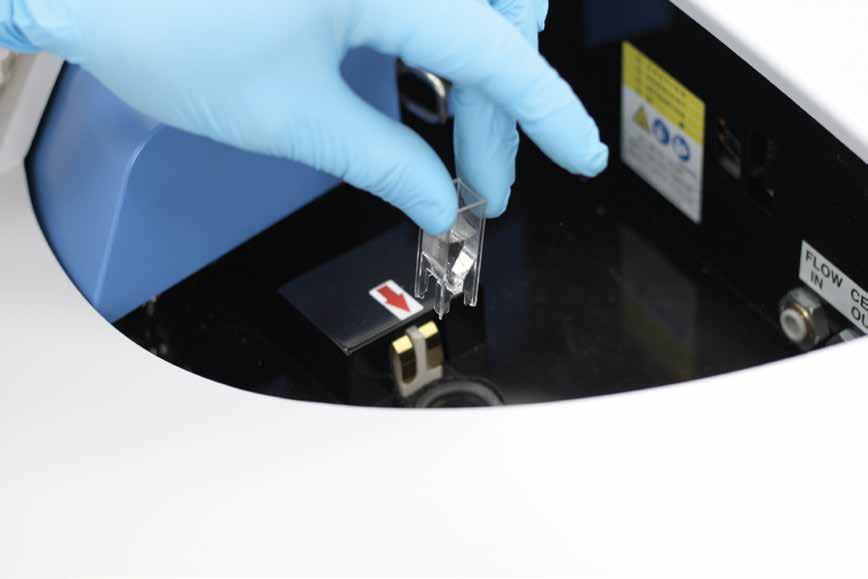
Nano-phytomedicines for the prevention and treatment of COVID-19: Solid-lipid nanosystems and in-silico and in-vitro study of natural inhibitory candidates of the SARS-CoV-2 virus.
Development and implementation of tools for understanding nanotechnology from practice: making the invisible visible 2021-2023.
Crystal polymorphism in nanomaterials and soft systems: basic aspects and technological relevance.
Collaboration project with UCR, which aims to publish the scientific paperDesign of Hybrid Polymeric-Lipid Nanoparticles Using Curcumin as a Model: Preparation, Characterization, and In Vitro Evaluation of Demethoxycurcumin and Bisdemethoxycurcumin-Loaded Nanoparticles.
The objective is to train educators and teenagers in bio-nanotechnology through talks and practices using easy-to-understand language. Bilateral Costa Rica-Uruguay Project. The scheduled workshops on the dissemination of nanotechnology were developed, both in Costa Rica and in Uruguay. Additionally, the respective recordings were made for the video editing related to the experimental part with respect to nanobiotechnology.
This is a macro project that addresses various topics. LANOTEC participates specifically in the line "Polymorphism in compounds of pharmaceutical interest: influence of crystallite size", whose objective is to study the influence of crystallite size on the retention of the most suitable polymorphs of the selected molecules (saquinavir and curcumin) for their bioavailability. Crystal size reduction processes with equipment available in the pharmaceutical industry will be considered. Based on the results obtained, it can be extended to other molecules of pharmacological interest.
Identification of vascular basement membrane and surrounding extracellular matrix proteins to which snake venom metalloproteinases bind by electron immunomicroscopic studies.
Development of medical device a prototype that allows the approach of minimally invasive neurological pathologies.
Study of the distribution and colocalization of different types of hemorrhagic metalloproteinases from snake venoms with proteins of the vascular basement membrane and surrounding extracellular matrix in murine muscle tissue by means of electron immunomicroscopic tests to identify the component to which these toxins bind.
The objective of this project is to develop minimally invasive access mechanisms and artifacts that facilitate the development of complex neurological operations by 3D printing from the LANOTEC FabLab, in conjunction with Dr. Miguel Esquivel from Hospital México.
5 6 7 8 9 10 11 41
PRIVATE FUNDED PROJECTS
Progress Project
Promotion of Challenge Fair science vocation.
Encouraging a rapprochement with the country's academic centers and supporting the development of science events (fairs), to encourage the development of science vocations in the country. This project depends on the interest of the organizers of the National Science and Technology Fairs, as well as the National Engineering Fair.
Bio-inspired and low-cost 3D printing of hydrogels with biomedical applications.
This proposal involves developing a bioinspired nanocarrier system that responds to mechanical stimuli, such as the shear forces found in cheap and widely available syringe needles. Using this mechanical force to cause a simple and benign chemical reaction within a bio-based and biodegradable hydrogel that leads to gelation of the hydrogel. Finally, applying this principle to 3D printing of hydrogels by using print setups in Simple and affordable 3D, e.g., a syringe needle in a robot. These objectives will be addressed according to the experience of the partners involved, i.e., velvet worm, hydrogel formulation and instrument development in Costa Rica, 3D printing, synthesis and characterization of nanocarriers and development of materials sensitive to stimuli in Switzerland.

H2020– Automated functional screening of IgGs for diagnostics of neurodegenerative diseases (AUTOIgG).
Development of experimental cell models and procedures with immunoglobulins (IgGs) from patient sera as diagnostic and prognostic technologies related to neurodegenerative diseases, ND (particularly based on amyotrophic lateral sclerosis - ALS research). Additionally, the definition of the labeling characteristics of the standardized in vitro approach for ND diagnostic protocols, and the design of a small-scale platform based on automated fluorescence microscopy.
Production and characterization of bacteria-repellent microcontact printed substrates and bactericidal nanostructured surfaces.
Evaluation of the impact of cigarette smoke vs THS on indoor air quality.
Evaluation of the antimicrobial activity of vinyl fabrics produced by the “Proquinal Argento” company, phase II.
Material characterization
Study of bactericity and repellency, and development of a synthesis methodology of carbon quantum dots and their use in bioimaging. This ended at the beginning of 2023.
The impact on air quality in an outdoor space, produced by the smoke emitted by smoking conventional cigarettes, was evaluated against the aerosol generated by the THS device.
The main objective of this project is to evaluate the antimicrobial characteristics of vinyl fabrics in terms of bacterial adhesion and antimicrobial activity of two types of fabrics: LACA PH and LACA Spectra. For this, the morphology and roughness will be evaluated using the AFM and SEM. In addition, microbiological tests will be carried out using two bacteria, one Gram - and one Gram + bacterium, following the JIS Z 2801.44 test method. The protocols used in phase I will be followed.
Collaboration project with UCR for sample processing and analysis.
12 13 14 15 16 17 18 42
Development of nanoparticle carriers of natural polyphenols to control grain contamination by mycotoxins.
Evaluation of the physicochemical characteristics of the abaca produced in the Horquetas, Sarapiquí area and the development of a purification methodology for the fibers obtained by the Costa Rican extraction process. Abaca fiber project.
BAC credit cards.
Development of nanoparticle carriers of natural polyphenols to control grain contamination by mycotoxins.
The main objective of the project is to evaluate the morphological characteristics and silica content present in the abaca of Costa Rica. In addition, to compare with the data reported for the crops from the Philippines and Ecuador, and to determine if the silica content is higher than that reported in other countries; to identify if there is a significant variation that may justify a partial removal process. It is proposed to study the structure of the internal and external plant, both mature and green, to understand their morphological and physicochemical differences.
Evaluate samples of credit and/or debit cards from the BAC company that are made up of 2 commercial polymers.
OTHER PUBLIC FUNDS
FI-55B-19: Revaluation of coffee brush as an alternative adsorbent material to activated carbon in the removal of bromacil from water sources.
FI-0006-20: Nano-phytopharmaceuticals for the prevention and treatment of COVID-19: Scaling of solid-lipid nanosystems and in-silico and in-vitro studies of inhibitor candidates of the SARS-CoV-2 virus.
PINN Cheesemakers: Generation of agro-industrial capacities and creation of a comprehensive unit (physical-chemical, organoleptic, and microbiological characterization) to improve the production process of Turrialba cheese with Designation of Origin.
ECO-INPUTS - PINN: Development of two agro-nutritional formulations to improve agricultural soils, to ensure their efficient use in agriculture, and to reduce environmental impact.
This project involves scaling up the solid-lipid nano-formulation processes of curcumin and piperine and their complex materials for their application to other molecules of natural origin with structural similarity, elucidated from in silico and in vitro inhibition studies of the SARS-CoV-2 virus and COVID-19 treatment.
Generation of agro-industrial capacities and creation of a comprehensive unit (a quality control laboratory to carry out physical-chemical, organoleptic, and microbiological characterization) to improve the production process of Turrialba cheese with Designation of Origin.
This project focuses on the manufacture of agricultural inputs oriented towards soil improvement and crop nutrition; as well as to develop new alternatives that allow to improve in an integral and sustainable way the agricultural production systems of our country.
Progress Project PRIVATE FUNDED PROJECTS
19 20 21
Obtain new low-cost adsorbent materials from coffee biomass as an alternative to activated carbon in the removal of bromacil from water sources.
22 23 24 25 Progress Project 43
CENIBiot Laboratory
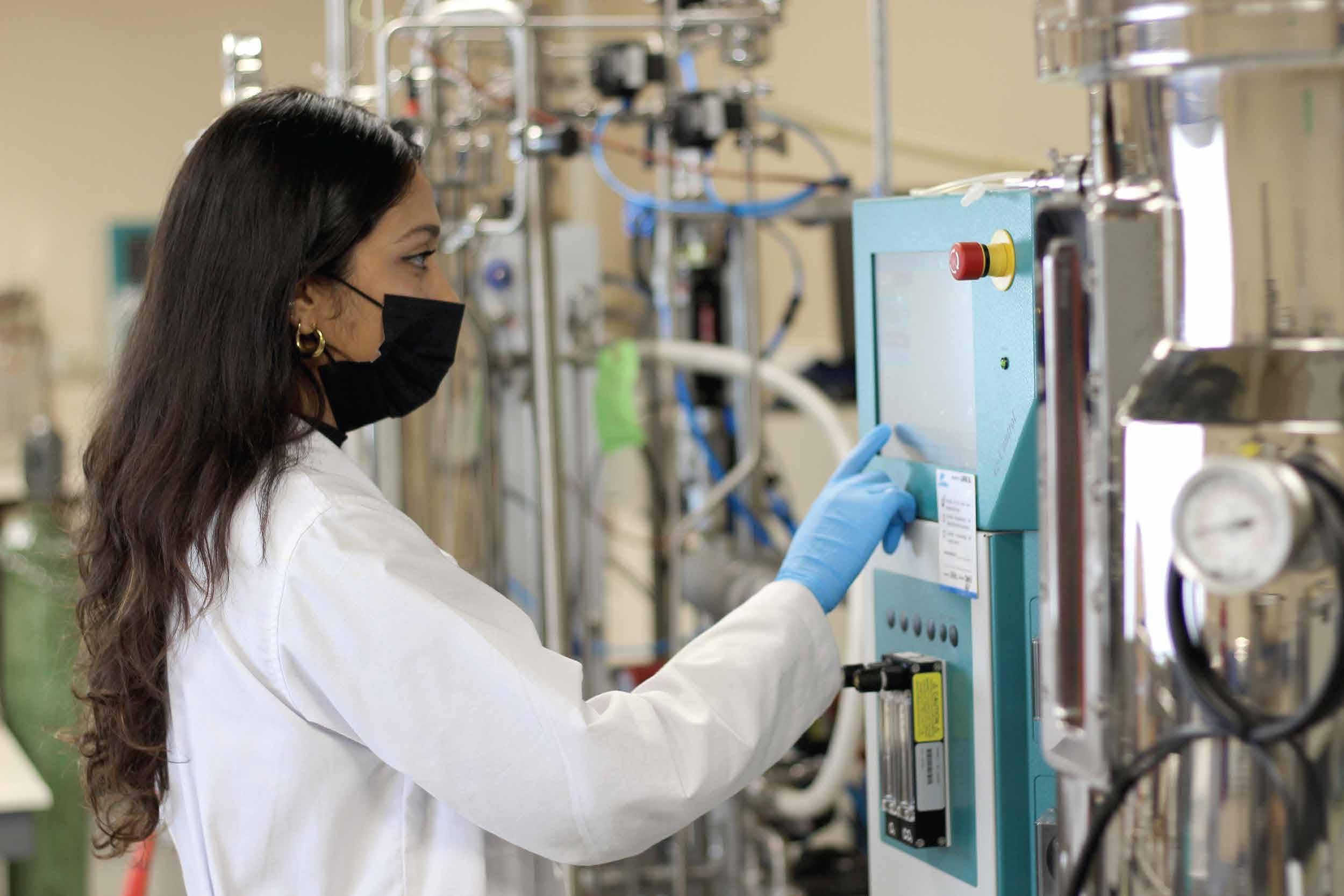
CENIBiot

CENIBiot Annual Operating Plan (CeNAT-CONARE) 2022 Scientific publicationsDissemination DISTRIBUTION OF GOALS INDICATORS Public Private Total 15 0 15 Knowledge transfer activities 8 5 13 Research Projects 16 17 33 Attention to Students 72 13 85 Agreements 3 0 3 45
Introduction
The National Center for Biotechnological Innovations (CENIBiot) is an interuniversity Laboratory for research, development, innovation, and scaling up in biotechnology, attached to Centro Nacional de Alta Tecnología (CeNAT), with the financial support and oversight by the Consejo Nacional de Rectores (CONARE).
It contributes to the generation of innovative biotechnological solutions and strategic partnerships between the academic, business, and government sectors, through support for entrepreneurship, technology transfer and university-business linkage. This way it seeks to achieve its vision of being a "world-class interuniversity center in biotechnological innovation".

The development objective at CENIBiot is to generate biotechnological research that contributes to the development of Costa Rica, through projects with scientific and innovation impact, that empower society in the economic, social, and environmental fields, through the exchange of knowledge, services in science, and support to entrepreneurship.
CENIBiot promotes internationalization as a strategy to achieve competitiveness, attract external resources, and continuous updating. Its operation mode is based on promoting openness and accessibility to the installed capacity. Academics, innovation managers, public policy makers, and businessmen converge in this innovation hub.
The main strategic actions developed by CENIBiot (CeNAT-CONARE) in 2022 include the main goals based on the opening, linking, and internationalization actions proposed on the 2019-2024 CENIBiot and CeNAT Strategic Plan, as well as the implementation and continuity of the proposals raised in:
The
Improvement and Implementation Plan of CENIBiot's 2019-2024 Strategic Plan
The 2021-2025 National Plan for Higher Education (PLANES) of CONARE
The 2022-2027 National Plan for Science, Technology, and Innovation of the Ministry of Science, Technology, and Telecommunications (MICITT).
46
Strategic Actions
Executed in 2022
With the execution of CENIBiot's Operational funds (CENIBiotCeNAT), the maturation of projects aimed at generating innovative biotechnological solutions has been promoted, as well as the strategic linkage of the different sectors, through technology transfer and university-company linkage. Maturity is not only evident in productivity sustained over time, but also in the significant increase in the impact of scientific publications, among which a publication in Nature Microbiology and a cover in the journal Environmental Microbiology stand out.
With the execution of CENIBiot's private funds (CENIBiot - CeNAT), for the first time on record, agreements were reached with companies for the execution of projects that effectively consider the scaling up of bioprocesses to produce plants of commercial interest for international markets, scaling up in stirred tank up to 50 liters, and producing botanical extracts of high quality and purity for international markets. We can affirm that, finally, thanks to a sustained, rigorous, and planned effort of many years, CENIBiot is scaling up in all fields where opportunity has been envisaged, thus contributing to national development with solutions that, by design, other relevant national stakeholders can't do so. These projects add to dozens of sales of biotechnology services, but with a greater scope. This represents a leap in the potential positive impact for the productive sectors of traditionally empirical industries that are beginning to recognize the importance of rigorous scientific research in their innovation processes.

47
Development Goal
To generate biotechnological research that contributes to the Sustainable Development Goals for Costa Rica, through scientific projects and impact innovation that contribute to society in the economic, social, and environmental fields, through the exchange of knowledge, services in science, and alliances with the business sector.
Mission Statement
We seek to be a biotechnological research and development laboratory that works with high scientific standards and where higher education in Costa Rica, public and private sectors converge to accelerate scientific and technological innovation.


Vision Statement
We are a self-sustaining laboratory with high scientific, economic, and social impact at the national and international level that strengthens competitive development through scientific rigor and intersectoral articulation.
48
Values
Human team care.
Ongoing learning attitude.
Attitude of amazement at the findings and achievements obtained.
Collaborative management in the projects that are undertaken.
Principles
Supportive and efficient use of scientific equipment.
Accountable administrative management of research projects.
Willingness for constant improvement of the projects that are undertaken.
Operating Structure:
Use of Microorganisms
Innovation and Impact
Chemical Genetics
Biological Assays
Bioprocesses
Synthetic Biology
Use of Phototrophic Organisms

49
To achieve an e ective consolidation of linkages and strategic alliances with the academia, the business sector, and the government.
To position CENIBiot as a specialized center in industrial bioprocesses, for both scienti c and business development.
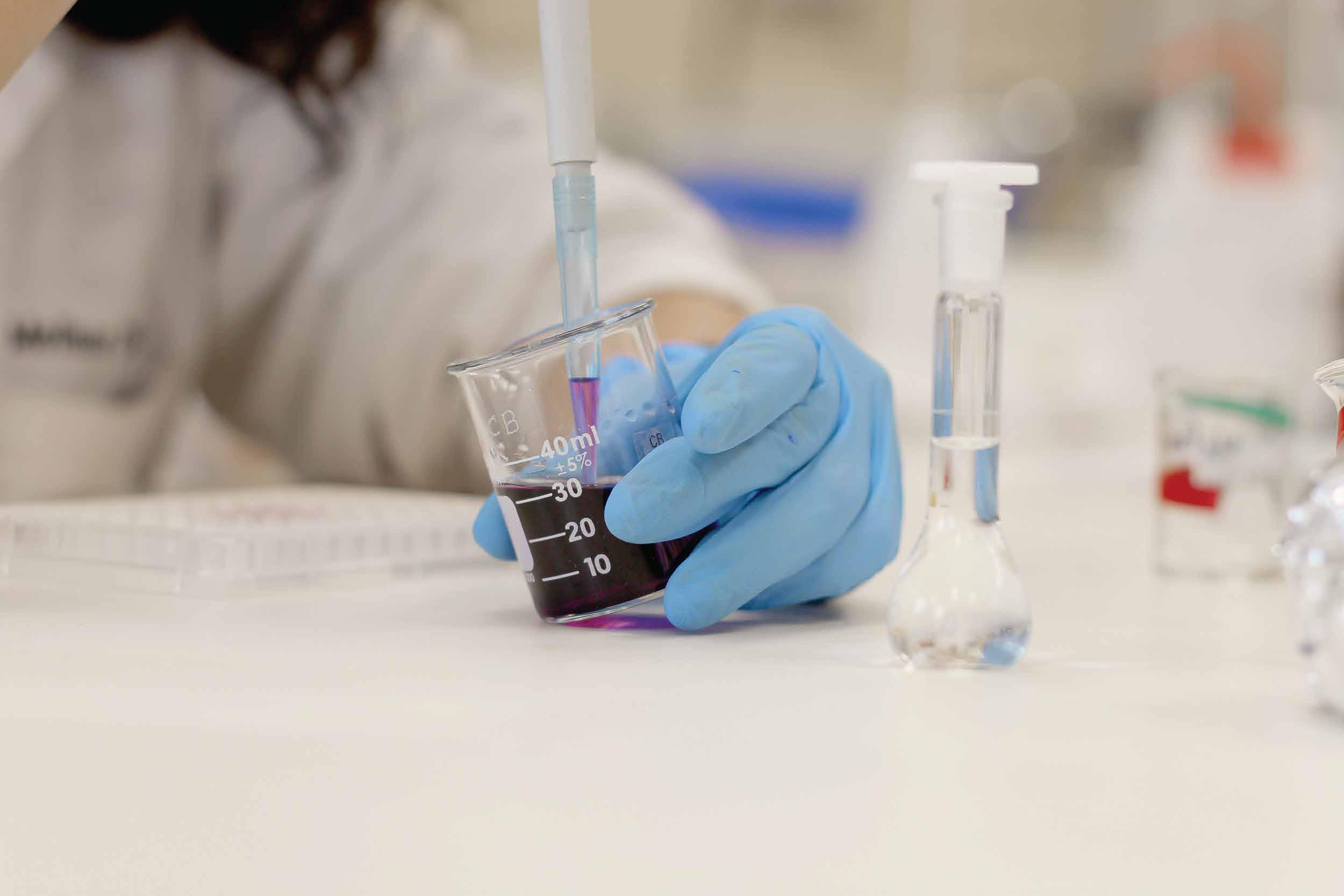
Strategic Objectives
To have a structured and optimized quality management system.
To improve the professional development of the human capital of CENIBiot.
50
Strategic Nodes
Research in Health Biotechnology


Research in Bioprospecting
Research in Molecular Biology
Research in Phototropic Organisms
Research in Bioprocesses.
51
Impact Indicators
Publications
Indexed 15
Knowledge transfers
National (Received): 7
Courses, Workshops, Symposia:
TC-001-2022 Lecture: Case study for practice in RStudio
TC-002-2022 Lecture: The Ascomycota in: “Agroecology of fungi in Coffee, Organization for Tropical Studies”, Las Cruces Biological Station. June 2022.
TC-003-2022 Lecture: The Basidiomycota. In: “Agroecology of fungi in Coffee, Organization for Tropical Studies”, Las Cruces Biological Station. June 2022.
TC-004-2022 Antibiotic-producing Micrococcales govern the microbiome that inhabits the fur of twoand three-toed sloths: Poster accepted at the International Society for Microbial Ecology (ISME) in Switzerland Lausanne.
TC-005-2022 Bacterial fermentation practical course. TC-008-2022 Fermentation monitoring variables using a bioreactor.
Other: TC-010-2022 A external expert reviewer for a UCR project.

52
International (Taught): 6
Courses, workshops, symposiums:
TC-006-2022 In vitro cultivation of plants using both a traditional system and Temporary Immersion systems.
TC-007-2022 Biosynthesis of nano-metalloids in Pseudomona putida.
TC-012-2022 Poster: Biodiversity and bioeconomy come together to promote changes in sustainable agricultural production systems.
TC-013-2022 Course: Bacterial and Viral Metagenomics: concepts, tools, and future perspectives.
TC-011-2022 Course: Fundamentals, operation, and scaling up of bioreactors.
TC-009-202 Introductory course on the use of Bioreactors

People benefited 393 TOTAL 13 53
Research Projects
TOTAL 33
Private 17
16
Public 2
FEES
FP-011-2022 Development of a food product from microalgae biomass of Arthrospira maxima with high nutritional value (FEES).
FP-015-2022 Contamination of Costa Rican corn by toxigenic Fusarium species (FEES).
Interns 14
Private Projects in negotiation:
Base CampResearch
Pelón de la Bajura Ingenio el Viejo PRONUVO
Flora Nueva Nippon Paper CORBANA
CONICIT FUNDS: (Incentive Funds) 3
FP-023-2022 - Application of nanobiotechnology for the development of carrier-in a-carrier transport systems for the transfection of nucleic acids.
FP-028-2022 Formulation of a biofungicide based on peptides extracted from Trichoderma asperellum and evaluation of its ecotoxicity and safety.
FP-029-2022 Bioles as a source of inspiration for the generation of new native microbial biostimulants for agricultural innovation in Costa Rica.
Other Funds 14

54
Articulations
National Academic Sector:
UCR
UNA
TEC
UNED
International companies:
Nippon Papper Papylia CR
Boston Scientific
Thrive Natural Care
Cambrium
Mammoth Biosciences
Standard Fruit Company
Attention to Students
International Universities or Institutes:
International Pharmacy Students Federation (IPSF)
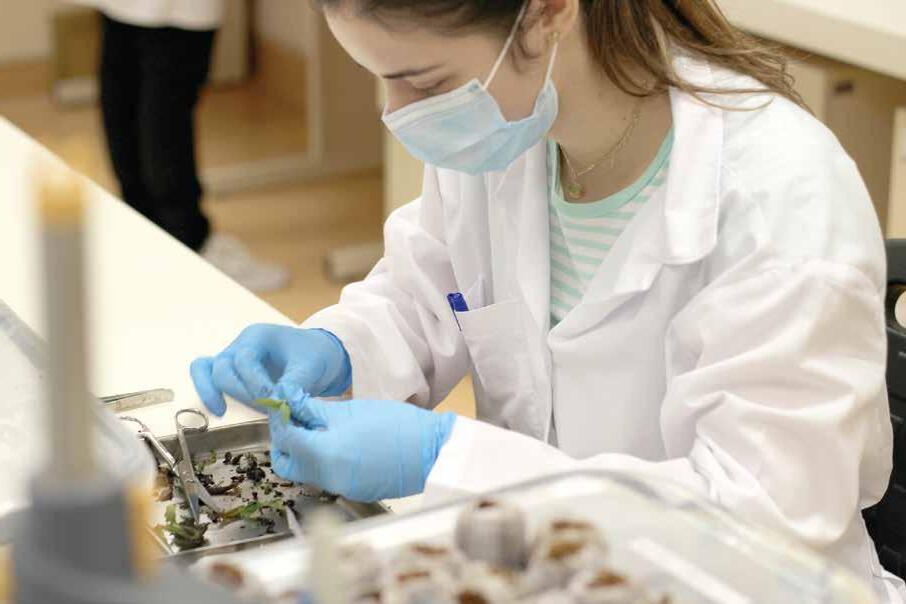
Universidad de Salamanca
Hamburg University of Technology
University of Wisonsin-Madison
Instituto tecnológico de Monterrey
Centro Nacional de Bioechología de España
Leibnitz University Hannover
University California-San Diego
WAITRO
University of Lausanne
Consiglio Nazionale delle Ricerche
Scholarships Accompaniment in thesis Volunteers Professional practices TOTAL 8 9 52 16 85
55
National companies:
Association of Craft Brewers of Costa Rica
Organization for Tropical Studies, Inc.
Aura Agrícola S.A.
Bio CR
Biotech C.R S.A.
CoopeAgri R.L.
CoopeCuna R.L.
Cooperativa de Caficultores y Servicios Múltiples de Tarrazú R.L.
CORBANA, S.A.
Corporación de Desarrollo Agrícola del Monte S.A.
doTERRA
Eremita Beverage, S.A.
Establishment Labs S.A.
Granja Avícola Santa Marta S.A.
Inversiones TicoBirra.com S.A.
Stein Laboratories
LISAN S.A.
Novatec Industrial S.A.
Numu Brewing
Rise Kombucha S.A.
Speratum
Stein Corp.
Sur Química S.A.
Treintaycinco - Beer Factory
Vinícola Costa Rica KNB Limitada
National: 3
Agreements
CV-001-2022 CeNAT-UCR (CIPRONA) “Microorganisms associated to solar panels and their potential for the production of natural pigments” research project.
CV-002-2022 CeNAT-Parque TEC Agreement.
CV-004-2022 Search for antibiotic-producing bacteria in the Amblipigida Cave of Costa Rica” UCR-CeNAT.
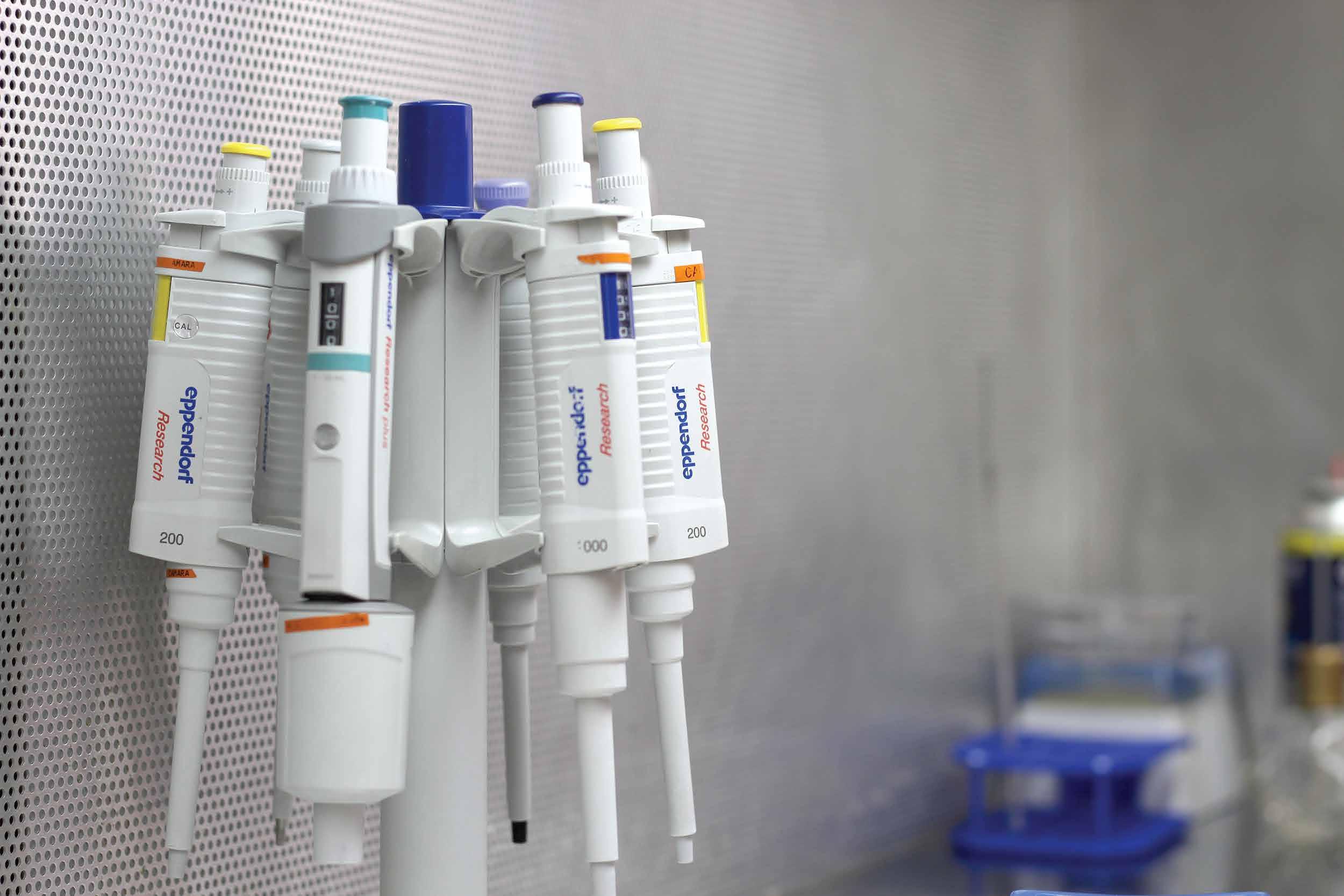
56
Summary of Projects
PUBLIC FUNDED PROJECTS Progress
Development of a food product from microalgae biomass of Arthrospira maxima with high nutritional value (FEES).
Contamination of Costa Rican corn by toxigenic Fusarium species (FEES).
Temperature tests in spray drying and respective quantification of pigments by spectrophotometry (chlorophyll, carotenes, and phycocyanin).
Research from the Center for Research in Grains and Seeds (CIGRAS-UCR) has found that most corn produced in Costa Rica contains high concentrations of mycotoxins, whose toxicity is associated with cancer in humans and animals. Therefore, the project directed by CIGRAS-UCR seeks to determine the factors that influence the contamination of maize in the field by toxigenic species of Fusarium spp. in Costa Rica. One of the factors to be studied is the microbial community of the soils where corn is grown, which is where CENIBiot is contributing to this project. This will contribute to better management of the crop in the field, reduce the contamination of the corn grain by mycotoxins, and therefore reduce the exposure of the Costa Rican population to these toxins.
Karyotype and genome size in Cas populations
In this project that concluded with the publication of a scientific manuscript, the first description of the cas genome was made, whose scientific name is Psidium friedrichsthalianum (O. Berg) Nied. The availability of this tool will allow researchers from all over the world to explore the potential of this fruit as a functional food, as well as a great diversity of associated molecular studies.
Evaluation of the efficacy of an experimental treatment for Chagas disease using purified fractions from the Hamelia genus plants collected in Sarapiquí and the Osa Peninsula.
Role of sorption in lymphocyte in-vitro proliferation.
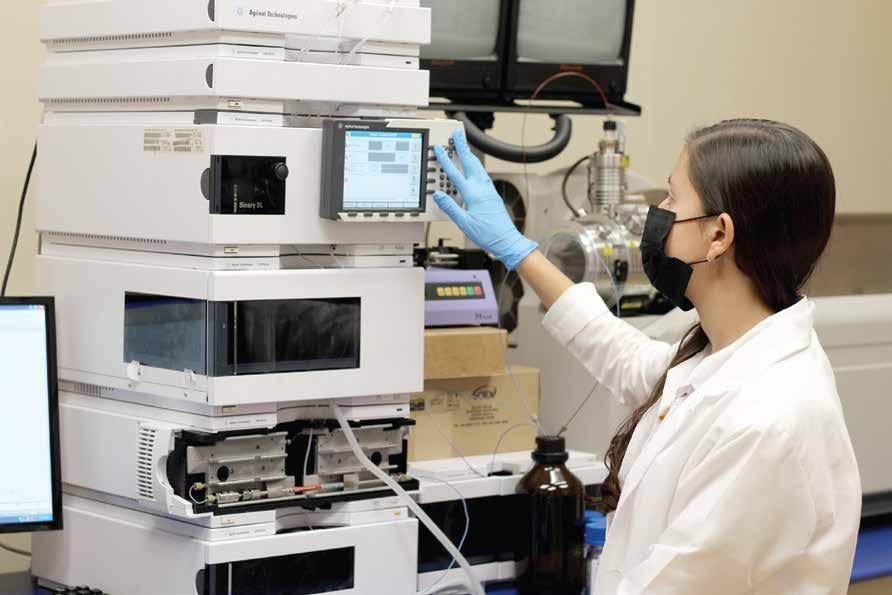
Search for new and selective antiparasitics against the intracellular form of Trypanosoma cruzi, for which there is no cure available to date.
Sorcin is a protein that regulates intracellular calcium flux in mammalian cells, which has been related to lymphocyte physiology, but whose function is still unknown. Describing part of this function is the goal of this project.
Public
1 2 3 4 5 57
Construction of a vector based on Tellurite genes for the genetic manipulation of multi-resistant bacteria.
Elaboration of a pSEVA construct with which replacing the antibiotic resistance genes with the tellurite resistance genes was possible, verifying the correct elaboration of the plasmid in an E. coli system, and with the purpose of continuing with tests in multi-resistant bacteria.
Melina's genetic footprint
Melina wood (Gmelina arborea) has several characteristics that make it suitable for the establishment of commercial plantations, including its easy propagation, fast growth, and that it has been classified as high-quality wood for its resistance and durability, with a variety of applications in the manufacture of furniture, laminated wood, particle board, and in the production of pulp and paper. In the forestry industry, highly productive trees generated from genetic improvement programs are selected, which are then propagated by cloning. In collaboration with INISEFOR of UNA and CENIBiot, a fast, reproducible, and reliable method was developed for the certification of clonal identity and quality control of clonally propagated Melina trees.
Biodegradation of fungicides with endophytic strains of Trichoderma
In a paper associated with this research, Trichoderma species isolated from living leaf tissues of wild Rubiacaeae (coffee family) plants were studied to determine their tolerance to fungicides and bio-removal potential. These findings suggest that the wild plant endosphere could be an attractive guild for finding new Trichoderma species with promising bioremediation capabilities. Furthermore, the results demonstrate that attention should be paid when combining certain types of agrochemicals with antagonistic fungi in Integrated Pest and Disease Management strategies or when transitioning to organic agriculture.
Mechanism of Cardiac Dysfunction induced by circulating histones
Domestication process of Coyol (Acrocomia aculeata) as a bioenergetic alternative in Costa Rica
It aims at describing the role of specific histones in cardiac dysfunction that arises during sepsis. So far, only the function of mixtures of these molecules is known.
The Coyol (Acrocomia aculeata) is a species of palm tree that is traditionally used to prepare the drink called “coyol wine”. However, its oleaginous fruit can be used to produce biodiesel, human consumption, pharmaceuticals, and cosmetics. The species has the potential to become a new commercial oilseed crop if properly managed and its germplasm improved. In a collaboration between the School of Biology at TEC and CENIBiot, in this project, the diversity and genetic structure of A. aculeata in Costa Rica were studied, with DNA markers in plants collected throughout the country. Essentially, it covered almost all the current geographic occurrences of this species in Costa Rica. The genetic diversity found was low with a structure of basically only three populations. The results of this project serve as a reference for future studies on the diversity of germplasm of this species in Mesoamerica, and also as a baseline for future conservation and management efforts of this species.
Preparation of protocols for handling equipment and training in analysis techniques-Bioprospecting.
The need to train laboratory personnel, students, and interns in equipment handling and protocols was detected, due to the great demand associated with CeNAT scholarships, theses, and other daily student attention processes. As a result, manuals were developed to reduce training time and the variability of results due to differences in procedures.
PUBLIC FUNDED PROJECTS
6 7 8 9 10 11 Progress Public 58
PUBLIC FUNDED PROJECTS
Extraction of lignin from different lignocellulosic biomasses to evaluate its use in the production of materials.
The project consists of the extraction of lignin from various lignocellulosic materials, which are currently waste from the country's agro-industrial sector, to later evaluate its use in the production of materials or chemicals. The materials include coconut husk, palm mesocarp fiber, coconut fiber, coconut husk-coir fiber, banana frond fiber, palm frond fiber, palm husk, coffee pulp, pineapple stubble, pineapple stubble fiber, and sugarcane bagasse. The Project did not continue.
Effects of endophytic fungi from plant isolates of the Rubiaceae family on the morphology and physiology of coffee plants.
Rooster's eye (Mycena citricolor) is a disease that affects coffee plantations, mainly in Central America. Currently, there are few alternatives to control the pathogen that are environmentally friendly and affordable. Therefore, in this collaborative project between UCR and CENIBiot, fungi were isolated from the plant endomycobiota of native plants that are from the same family as coffee. The results allowed an understanding of the potential use of little-studied species of endophytic fungi that are not only capable of reducing the impacts of phytopathogens but also of improving plant growth, thus helping in the transition to organic agriculture.
Effects of endophytic fungi on the health and resilience of coffee plantsTrichoderma
An initial approach to the bioprocess for obtaining lipoteichoic acid from Lactobacillus rhamnosus GG for future applications.
A collateral project related to the endophytic fungi and Rubiaceae plant from which efficacy tests of new endophytic fungi were carried out under controlled in vitro conditions, to later be used in field trials. The result is a potential product.
Flask fermentations with changes in growth temperature to evaluate if there is a difference in production, as well as tests of different extraction protocols to choose the most efficient yield.

12 13 14 15
Public 59
Progress
Research of the downstream neuronal path of Neuregulin-2. (VIE).
Neroregulin (NRG-1) is part of a molecular network and its associated receptor (ErB4) is part of a molecular network whose activity has been altered in diseases of the central nervous system such as schizophrenia. The goal of this project has been to study the molecular pathways that are activated as part of the intracellular signaling cascade that is triggered when this protein is stimulated.
Profiling and validation of the downstream molecular pathophysiology of the hyperstimulation of NRG1-ErB4 relevant to schizophrenia (VIE).
Neroregulin (NRG-1) is part of a molecular network and its associated receptor (ErB4) is part of a molecular network whose activity has been altered in diseases of the central nervous system such as schizophrenia. Through a model of neuroregulin overexpression in genetically modified mice, in this collaborative project, new activities were discovered for this protein, associated with the postsynaptic regulation of molecular signals in the hippocampus.
Characterization of the microbiota associated with the biodegradation of historical documents of Costa Rica VI-2019 2019.
Knowledge of the lignocellulolytic degradation capacity in historical documents allows for formulating strategies to combat biodeterioration. For this reason, the identification of fungi that have grown in historical documents of Costa Rica and their ability to degrade cellulose is necessary knowledge to work against biodeterioration and preserve documents of cultural and historical relevance.
Genomic and postgenomic analysis of the biosynthetic pathways of antibiotic production in Streptomyces sp M54. VI-4953-2019.
Microorganisms associated with solar panels and their potential to produce natural pigments: A pilot study of the University of Costa Rica.
Study of the physicochemical and microbiological defense mechanisms of the eggs of Costa Rican forest birds.
Search for antimicrobial-producing bacteria in the fur of sloths of the Choloepus and Bradypus genera from Costa Rica.
Characterizing the microbial communities that inhabit the Amblipigida Cave and evaluating their potential to produce antibiotics – SIPPRES
The Streptomyces sp M54 bacterium, isolated from the wasp Polybia plebeja, has an antimicrobial capacity expressed within the biosynthetic gene clusters it has, which have been previously characterized. However, some of these clusters have not been characterized and can potentially be antibiotic biosynthetic pathways.
Determination of the microbial communities that grow on the surface of solar panels, in addition to the analysis of the ability of these microorganisms to resist ultraviolet radiation to a greater extent compared to other organisms. In the same way, the production of pigments by some of the microorganisms that grow in these conditions was determined.
Identification of microorganisms on the surface of eggs of Costa Rican forest birds, as a study of the microbiological defense capacity through the production of antibiotics against pathogens that reduce the viability of the eggs.
Sloth fur is an environment rich in bacteria, insects, algae, and fungi, which coexist with each other. Within these interactions, the ability of some bacteria to help control the growth of pathogens through the production of antibiotics is being studied.
Caves are environments that are poor in organic matter, within which microorganisms grow and coexist competitively for resources. This competitive environment is favorable for finding antibiotic-producing bacteria.
WITH OTHER
PROJECT
FUNDS
16 17 18 19 20 21 22 23 Progress Public 60
PROJECT WITH OTHER FUNDS
Formulation of a peptide-based biofungicide extracted from Trichoderma asperellum and evaluation of its ecotoxicity and safety, FI-048B-19 (MICITT).
This project is the study of the purification and formulation of a biofungicide based on peptides extracted from the Trichoderma asperellum biocontrol fungi. Here, the Bioprocesses area at CENIBiot works on the bioprospecting of molecules of interest to satisfy the demand of different types of industries. These peptides are called peptaibols, which have the ability to inhibit the growth of various phytopathogenic fungi. The purpose of the project is to bring to the market a biofungicide that has been developed for several years, and for which we already have evidence of its biological effect.

Application of nanobiotechnology for the development of carrier-in a-carrier transport systems for nucleic acid transfection, FI-215B-17 (CONICIT).
Bioprospecting for new extremozymes in Costa Rican volcanic environments, FI-255B-17 (MICITT).
Biotechnological production of terpenes from endemic species of Costa Rica, for the control of Fusarium oxysporum f.sp. cubense, a causal agent of Panama disease in banana plantations (Musa spp.), FI-254B-17(MICITT).
Use of agro-industrial waste through the development of bioprocesses to produce common and fine chemical products (MICITT).
Development of mixed encapsulations of non-toxic lipids and polymers that in turn allow the transfection of both in vitro cellular lines and in vivo tissues. Extreme environments such as volcanoes, fumaroles, acid soils, etc. are a potential source of novel enzymes with applications in multiple industries.
This international inter-institutional project focused on the search for new enzymes from metagenomic analyzes of microbial communities in extreme environments.
From this project, novel enzymes with the ability to synthesize molecules from the terpene families were isolated, identified, produced, and optimized. These new molecules have activity against the causal agent of Panama disease and serve as a structural basis for the development of new treatments for this banana disease.
An international inter-institutional project that generated scientific review articles dedicated to the study of the possibilities of using residual biomass from agro-industry, for example, pineapple, and sugar cane. These scientific documents serve as the basis for planning harvesting activities using biotechnology within the framework of the national bioeconomy strategy.
24 25 26 27 28 Progress Public 61
Design of collagen-based medical devices for tissue regeneration, from the use of by-products from the aquaculture industry (GTR).
Manufacture of membranes as products from the mixture of collagen with viable natural polymers for the development of medical devices for tissue regeneration. The raw materials of this project are agro-industrial waste, and the project is part of the national circular economy strategy.
Development and transfer of a biotechnological process to produce microorganisms and the formulation of biopesticides for the control of pests and diseases of national interest - BIOTECH CR GRM.
Bioles as a source of inspiration for the generation of new native microbial biostimulants for Costa Rican agricultural innovation, FI-041B-19 (MICITT).
The project is in stage 2: separation operations, carrying out filtration tests, and solid formulation of the final product, as well as optimization of the inoculation of the fermentation in the bioreactor.
This project seeks to generate a collection of native Costa Rican microorganisms with commercial application in Costa Rican agricultural production systems and their potential export from complex bio-inputs called bioles. These types of products are part of the supply of biological inputs used in sustainable agricultural production systems that seek to either reduce or eliminate the use of agrochemicals (mainly pesticides and fertilizers). The microorganisms in the formulation of these products have been extracted from other latitudes, which added to the edapho-climatic conditions from which they were isolated, producing very diverse effects on crops. In addition, there are no quality controls on the products, which is why it represents a source of mistrust for some stakeholders in the Costa Rican agricultural sector. The systematic and validated study with genomic tools of bioles and microorganisms is generating the necessary knowledge for the development of an innovative product for the agricultural sector that will also contribute to reducing the use of agrochemicals. It is expected that in addition to the product being developed with microorganisms native to Costa Rica, a validated scientific base (know-how) will be generated to continue with the discovery and development of new products of the same nature.
Nanoencapsulation of Bacillus for the control of Radopholus similis (pathogenic nematodes of banana) - CORBANA.
The project is about optimizing and choosing the most promising Bacillus strain, in order to scale up and improve the production process of a potentially marketable biocontroller by encapsulating it from spray drying.
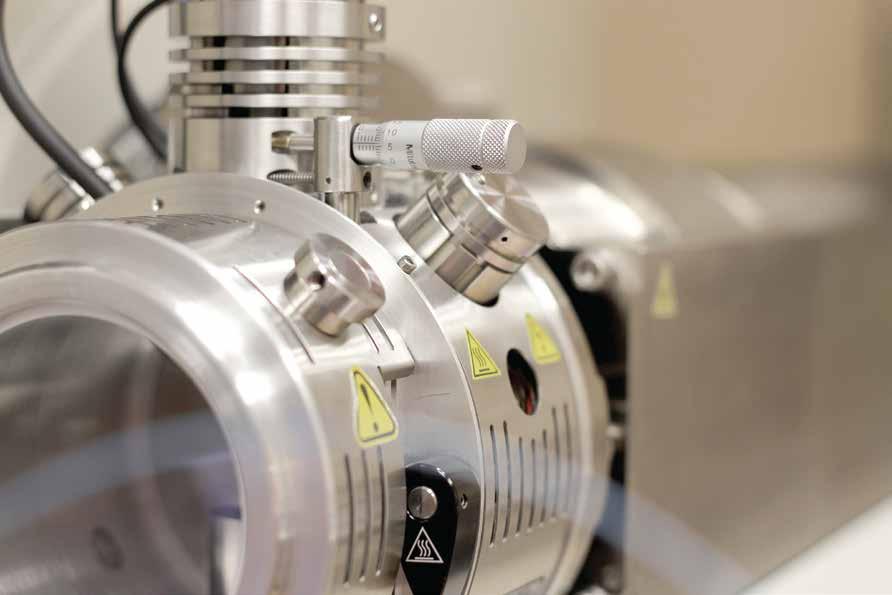
Production of peptaibols from Trichoderma sp with alternative reagents.
This project seeks to evaluate the performance of peptaibol biosynthesis when laboratory quality reagents are replaced with lower quality reagents, in order to reduce production costs with a view to scaling up.
Progress Public PROJECT WITH OTHER FUNDS 29 30 31 32 33
62
CNCA NATIONAL ADVANCED COMPUTING COLLABORATORY

CNCA
CNCA Annual Operating Plan

(CeNAT-CONARE) 2022 Scientific publicationsDissemination DISTRIBUTION OF GOALS INDICATORS Public Private Total 10 0 10 Knowledge transfer activities 41 0 41 Research projects 10 4 14 Agreements 2 0 2 7 0 7 Cluster operation Cluster usage 355 0 355 70.460 70.460 0 Attention to students 64
Introduction

The National Advanced Computing Collaboratory (CNCA) is a multidisciplinary space where scientific discovery and technological innovation are accelerated, using advanced computing infrastructure. This infrastructure includes not only specialized and updated hardware, but also a set of efficient applications and trained personnel to take advantage of all that technology. This allows CNCA to work on the core dimensions of the development of research projects, training, and service delivery.
The CNCA aims to provide two pillars of scientific development to the Costa Rican community. In addition to theory and experimentation, simulation and analysis of data constitute fundamental pieces in the exploration of the knowledge frontier. To achieve this aspiration, computer hardware and software tools are essential. The work of CNCA members then deals with the computer cluster and the applications installed in it. The CNCA must provide a computer infrastructure of excellence for the development of projects and services that allow the creation of high-impact solutions for society.
65
Development Goal
To encourage the use of advanced computing in research, using complex information to boost science and technology development and innovation in Costa Rica.

Mission Statement
We are a research laboratory that promotes the management of complex information, with professionals specialized in advanced computing who carry out studies with the highest scientific standards, innovating in technological development and articulating studies at a national and international levels.
Vision Statement
We aim to be a self-sustaining advanced computing laboratory with the highest technological infrastructure, impacting on both national and international innovation and development.

66
Organizational values and principles
The core values and principles of the CNCA's actions throughout its activities are presented below:
Values
Willingness to good human relationships.
Willingness to continuous learning.
Collaborative innovation at the laboratory work.
Machine learning
Bioinformatics
Modeling
Principles
Collaborative management in the projects that are undertaken.
Creativity in knowledge transfer.
Permanent communication within the work team.
Efficient use of resources.
Simulation

Operating Structure: Accelerating Innovation and Development
Data Science
67
Objectives
Using the critical areas as a basis, the strategic objectives have been developed to provide mechanisms to achieve the established goals:
To provide advanced computing infrastructure under constant improvement, update and use for scienti c research.

To e ectively communicate the results and activities of the collaboratory.
To create mechanisms to attract external funds.
To guarantee the professional growth of the members of the collaboratory.
To enhance the scienti c production of the collaboratory.
To strengthen the training o er of the collaboratory.
68
Strategic Nodes

Maintenance of the computational cluster with state-of-the-art equipment.
Development of the professional career for human resources.
Fundraising through the sale of services and external research funds.
E ective dissemination of results.
Substantial scienti c production and development of high impact research projects.
Appropriate training portfolio for di erent scienti c and engineering domains.

69
Knowledge transfers
Transfers taught: 41
10 Advanced Computing Seminars

5 Programming workshops on introduction to programming, scientific computing, and machine learning with Python language for different scientific domains.
6 Programming workshops on introduction to programming, statistical analysis, and data visualization with R language for different scientific domains.
2 Workshops on Bioinformatic processing of genomic and metagenomic data.
1 Workshop on "Adaptive Message Passing Interface"
1 Workshop on "Computational fluid dynamics"
Impact Indicators
Indexed papers by SCOPUS. 10
6 Workshops on the use of Kabré and Linux.
2 Programming schools in advanced computing and Big Data subjects. HPC School and Costa Rica Big Data School in face-to-face mode.
5 International presentations at academic conferences, meetings, seminars, and forums.
3 International presentations on high performance computing subjects at a national and international scientific domain.
Total of 1071 people benefited from knowledge transfers.
Publications
70
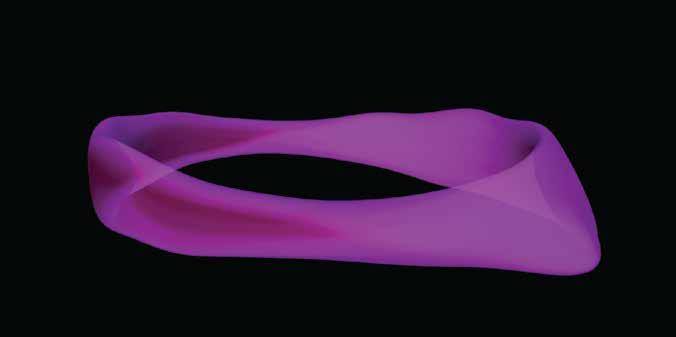
Public-funded projects 10 Private-funded Projects 4 Research Projects 1 6 2 1 14 computational science and parallel and distributed computing research 6 Scholarships 1 Intern Students 7 FEES-funded Project Internal projects TEC Projects CONARE-funded Project Computational Infrastructure 522 accounts with access to computing infrastructure services. 70,460 science hours in simulations and data processing. 355 days a year of operation of computer services that resulted in: 71
Linkages
The laboratory has achieved linkages with the following institutions and organizations:

MICITT-CONICIT
MINAE
MAG
Ministry of Health
Public Universities (UCR, TEC, UNA, UNED, UTN)
INA
Professional associations (CPIC)
MOPT
ICT Chamber
Lawrence Livermore National Laboratory
SCALAC
BSC
CSUCA Association of Professionals of
CGR
JUPEMA
INTA
CENIA (CHILE)
72
Agreements
2 national agreements to work in the field of advanced computing.
RedCONARE
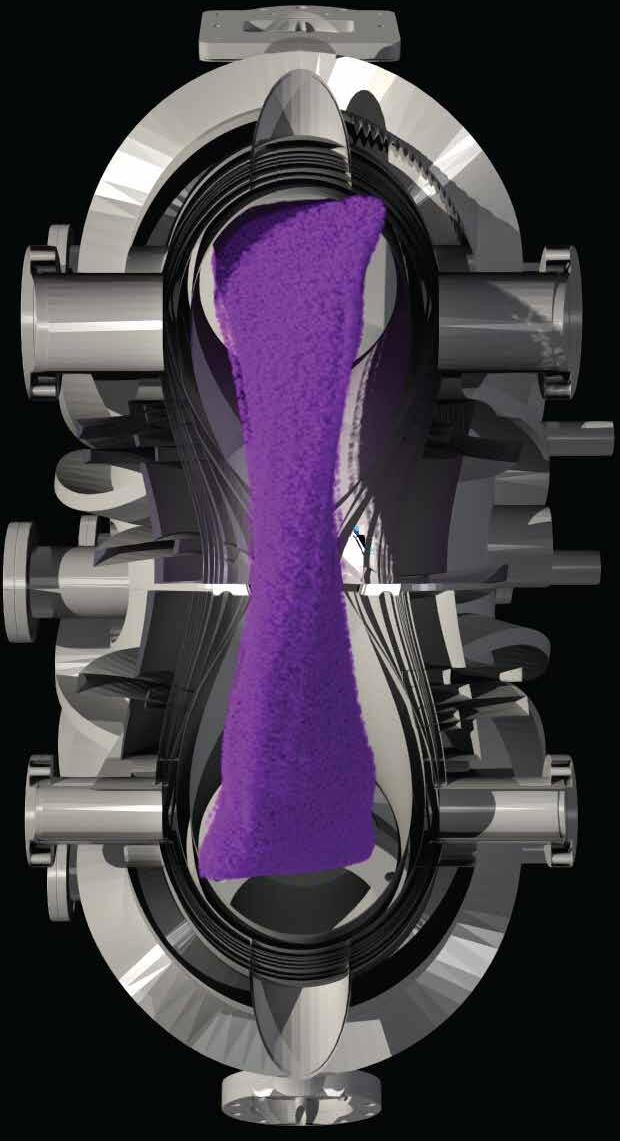
One of the services of RedCONARE and the ICT departments of the universities is Eduroam, which has the following indicators:
Network services are available to approximately 14533 students, staff, and teachers.
Access to Eduroam internationally in 106 countries that participate in the deployment of the connectivity network.
There are more than 2 billion authentications of the Eduroam network in international territories.
Eduroam network deployed in the headquarters and campuses of the five public universities. Research centers and the CONARE-CeNAT building.
73
CIMPA INTA
Summary of Projects

FEES-FUNDED PROJECT
Progress Project
Analysis of microbial plasmidoma in contaminated water and its possible effects on health and the environment.
Plasmids are mobile genetic elements that allow microorganisms to adapt to various types of habitats, but little is known about the impact of pollution on their diversity in aquatic ecosystems. The goal of this project is to characterize the diversity and typology of the set of plasmids (plasmidoma) in the water column, sediment, and polystyrene microplastics exposed at different points of the Virilla River basin, where approximately half of the Costa Rican population discharges its sewage and other pollutants. To do this, metagenomic analysis, data science, and artificial intelligence will be used. The diversity of plasmid families, accessory genes, the plasmid-host relationship, potential transfer mechanisms, and variations in the contamination gradient will be characterized. The consortium brings together specialists in microbial ecology, clinical microbiology, bioinformatic analysis, and risk analysis by contaminants. It is proposed to generate novel scientific information on the ecology of plasmids in an aquatic ecosystem, but at the same time, to research the potential side effects of anthropogenic contamination on the transmissibility of plasmids with genes relevant to human health and aquatic communities.
1 74
high-performance computing techniques. challenges for their execution in supercomputing environments. First, they show irregularities in the charge distribution of the required computations. Second, the simulations are run in environments with different computational architectures. This project is carried out in collaboration with scientists from the Max Planck Computing and Data Facility (MPCDF) in Germany.
TEC PROJECTS
Construction of a computational tool for the analysis of public health strategies for dengue in Costa Rica
This project explored the variables that are usually associated with dengue epidemics in our country. Dozens of variables were analyzed, coming from open data repositories. A correlation analysis of these variables was made, and it was found that two of them present a strong relationship with the reported cases. From there, different data visualizations and the extension of a base model were elaborated to include the new variables. This project was carried out in collaboration with scientists from the Center for Research in Pure and Applied Mathematics (CIMPA) of the UCR.
Development and application of a computational tool for the detection and automatic location of earthquakes in Costa Rica through deep learning techniques and Big Data
A workflow based on deep learning tools was built for the analysis of large amounts of seismological data. In collaboration with scientists from UNA's Volcanological and Seismological Observatory of Costa Rica (OVSICORI), neural network models were implemented that have been successful in detecting seismic events from global data to be applied in the country's seismic record. It was found that these models have a high potential to generate new information about seismic events and to better explain seismological phenomena in specific regions.

3 4
Progress Project
75
Progress Project
Progress Project
Cas genome (Psidium friedrichsthalium) assembly and annotation for the search of polyphenols of biotechnological interest
Cas (Psidium friedrichsthalianum) is a tropical tree species of the Myrtaceae family and is considered an autochthonous crop in Costa Rica with unexploited characteristics as a functional food. This species has not been fully domesticated and can be found in home gardens, paddocks, small groups, and, more recently, in small and medium plantations. In this study, we sought to achieve the first draft of Cas genome assembly using hybrid assembly and its structural annotation of genetic models. The results of this study provide an overview of the first draft of the Cas genome assembly and its bioprospecting potential. This new genomic resource represents the basis for exploring the genetic potential of this crop with functional food characteristics.
Machine Learning applied to bioacoustic recognition of tropical birds
This project consists of applying deep learning models to detect and classify different species of tropical birds in the country. For this, there are audio files from repositories such as the UNED BioSonidos - Collection of Nature Sounds, which must be explored and processed for analysis.

It is sought, therefore, that the research serves as an input to assess the state of biodiversity conservation and to detect possible changes in the natural environment.
Programmatic analysis of GPU performance data
In this project, a tool was built to collect performance data on program executions on computer architectures that include graphics processing cards (GPUs). This data is then processed programmatically so that it can be analyzed repeatedly as the user of the system formulates the questions. These questions are asked by programming in a high-level language, and this allows scrutiny of data derived from initial analyses.
Industry Project 4.0
The project that bears the name “Revol-U-tionizing a look at university profiles on the way to industry 4.0”, is a collaboration between the Advanced Computing Collaboratory and the CONARE National Observatory of Professionals. The main objective is to determine the probability of automation of university degrees according to professional profiles through computational tools. This is achieved with the support of the computer infrastructure and the data analysis experience that CNCA professionals have.
During this stage of the project, a database was built to consolidate the skills and competencies of the majors of the state universities, to then extract these characteristics from the documents provided by the universities for each career. From there, it is possible to calculate the present value of each of the skills and competencies to finally carry out the calculation of the probability of automation of each element to be reflected in a general way for each race.
INTERNAL PROJECTS
5 6 7 8 76
INTERNAL PROJECTS
Progress Project
The project consists of the development of a visual learning system that can carry out a semantic segmentation of cellular structures known as microvilli by detecting and quantifying the associated geometric patterns in microscopic images. Also, computer vision techniques, image processing, and machine learning are being used. This is with the purpose of analytically identifying the microvilli that may be related to deficiencies in living organisms, which would allow eventual diseases to be detected at the cellular level, recognizing their implications, and thus determining how to attack the diseases.
Currently, having a high-performance computing infrastructure that can be used by researchers and academics, allows for greater advances in different projects that require it, thus saving time and resources for the institutions that make use of it. The main goal of this project is to optimize and refine the current services provided by the Kabré computing platform, as well as to add others that allow more efficient use of it, so that users who use it notice a significant improvement, thus leading to much more extensive use of it.
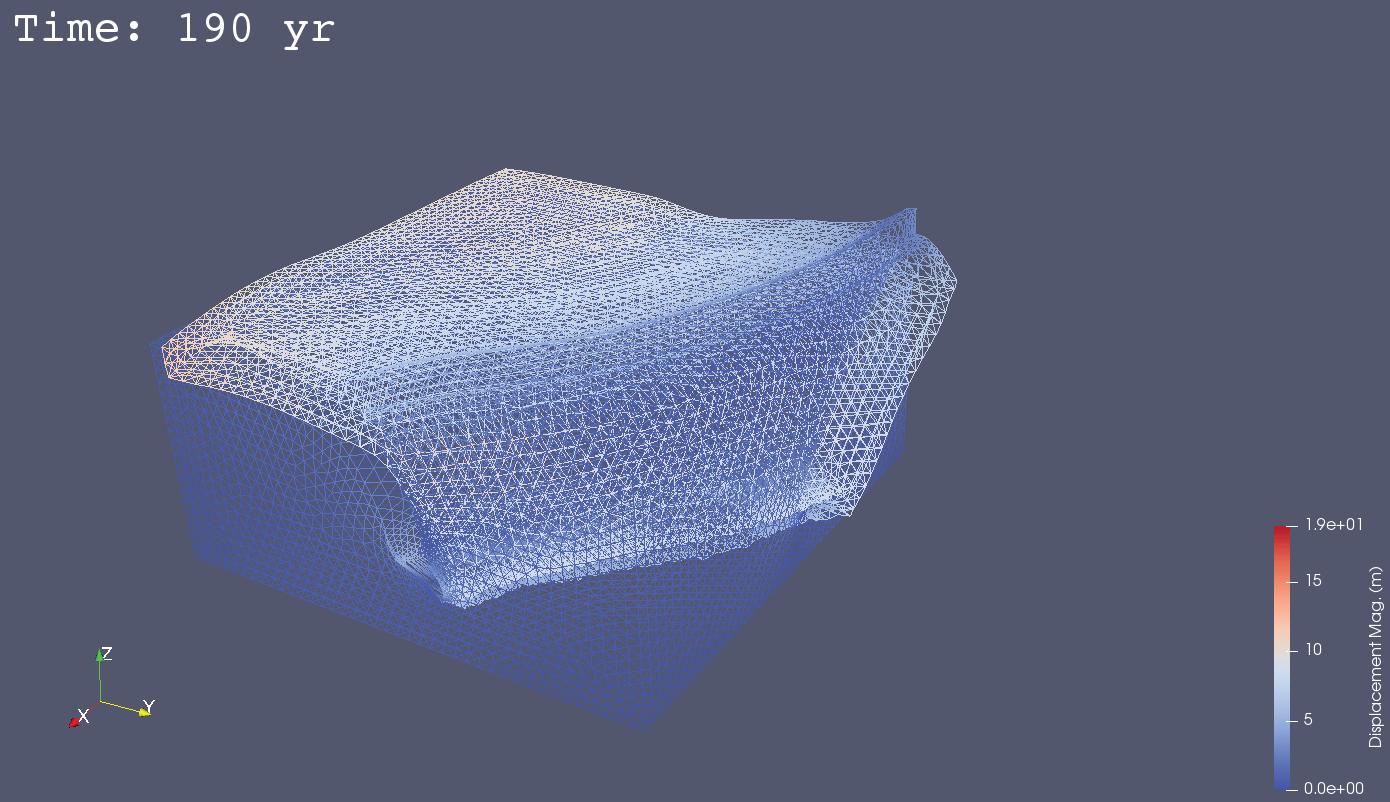
9 10
Cellular image processing and analysis
Improvement of the Kabré computing platform
77
11
Progress Project
This network was funded by the International Development Research Centre (IDRC) of Canada, through a call for scientific networks from CSUCA and SICA. The project had the participation of more than 40 members, from more than 12 countries in the Latin American region. The network forged a community of researchers, professionals, and specialists in different areas of epidemiological data management. The theme involves experts from areas such as computer science, epidemiology, medicine, statistics, mathematics, and others. Seminars, courses, panels, and discussion spaces were organized.
Urban
RISC2:
NatGEO (Development of three technological tools for marine ecology and its application on the Antillean manatee in Costa Rica)
This project seeks to analyze and understand vehicular mobility patterns from the traces of the Waze platform database. In cooperation with The State of the Nation Program (PEN), a platform was built to automatically download Waze data in real-time and a workflow to clean that database, leaving a format that is clear and efficient for its post-processing.
This project is funded by the European Commission with the aim of strengthening the cooperation bridges between Europe and Latin America on advanced computing issues. It seeks to develop training in high-performance computing technologies and methodologies, approaches with local governments for the development of public policy on relevant issues, scientific and technical exchange activities, and collaborations for the development of joint proposals for research projects.
This project is about the development and implementation of an algorithm that can detect either the presence or absence of manatees in audio recordings, by analyzing the vocalizations of these mammals. It uses neural networks and subsequently counts the number of individuals present, with techniques for grouping the acoustic attributes of the identified tunes. This project aims to increase the ecological and ecosystem knowledge of these marine mammals, thus determining points of interest of manatees, their navigation patterns, and their populations on the Caribbean coast of our country to eventually elaborate strategies and actions in favor of manatee conservation.

PRIVATE-FUNDED PROJECTS 12 13 14
Central American Network for Epidemiological Data Management
vehicular mobility with Waze.
A network for supporting the coordination of Computing research between Europe and Latin America
78
PRIAS LABORATORY

PRIAS
PRIAS Annual Operating Plan
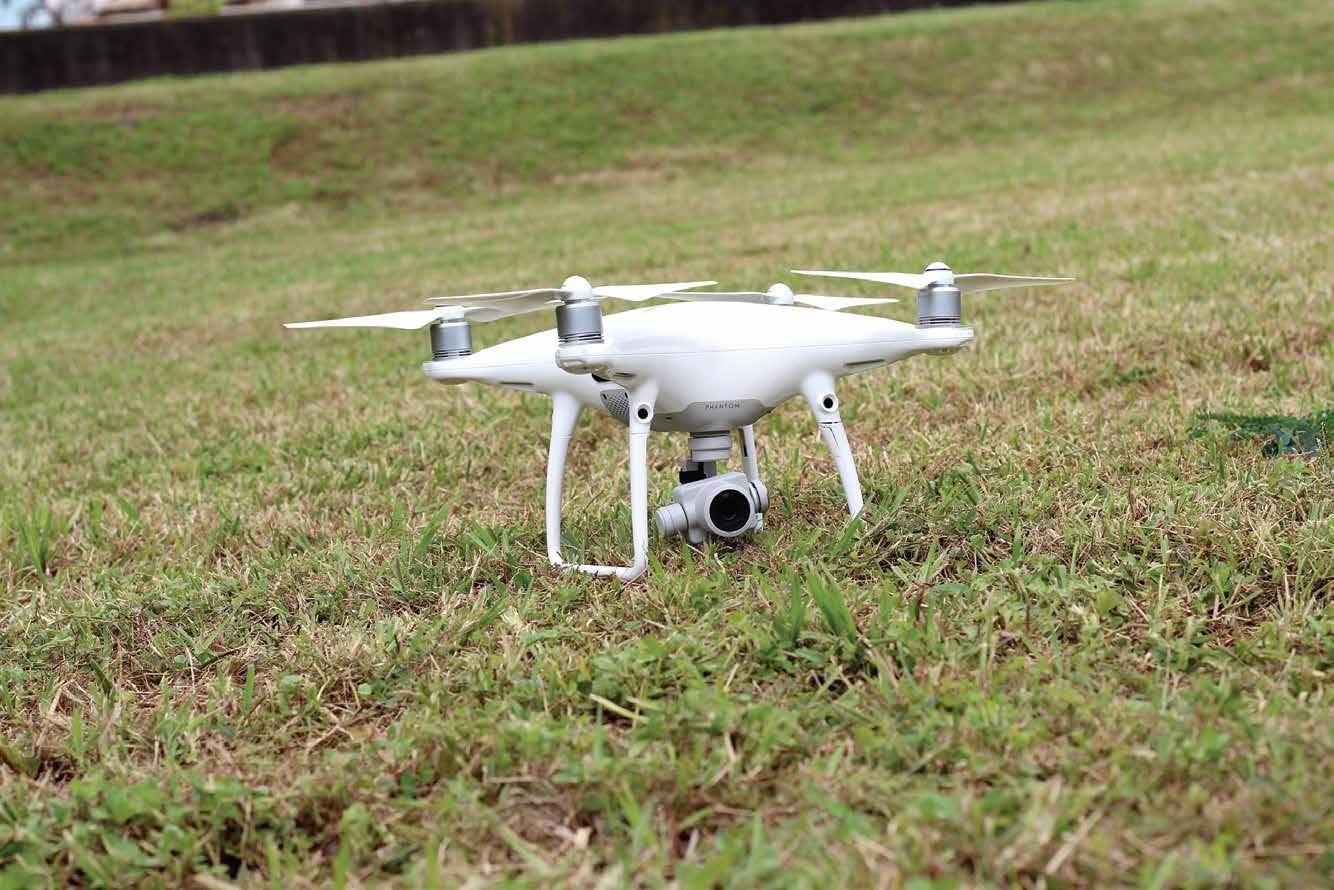
Scientific publicationsDissemination DISTRIBUTION OF GOALS INDICATORS Public Private Total 2 18 20 10 1 11 7 4 11 14 2 16 1 0 1 Knowledge transfer activities Research projects Agreements
(CeNAT-CONARE) 2022 Attention to students 80
Introduction
PRIAS is comprised of a team of professionals from different areas of science. Its laboratory maintains a close relation with institutions of the public and private academic sectors, both nationally and internationally, for the promotion of scientific research and transfer of knowledge. This is achieved through the acquisition, treatment, storage, analysis, representation, and dissemination of information in areas of Photogrammetry, Remote Sensing, Geographic Information Systems, Global Positioning System, Spatial Data Infrastructure, Geodesy, and Computer Science, which constitute the discipline of Geomatics.
Attached as a Laboratory to the Centro Nacional de Alta Tecnología (CeNAT), PRIAS is a program of the Consejo Nacional de Rectores (CONARE). It conducts the promotion and development of scientific research activities in various fields.
The activities carried out during the year 2022 showed achievements and important progress made in the seven major areas of Geomatics mentioned above and with applications to Earth Observations, as well as the linkage with the academic-public-private sector.
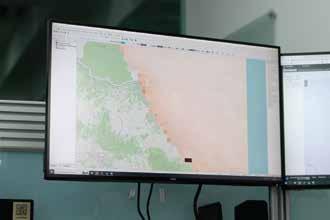

81
Development Goal

To develop geospatial research to contribute to gain knowledge of the Costa Rican territory and the achievement of the Sustainable Development Goals, thus enabling a contribution in decision-making, through specialized scientific-technical assistance projects that empower improvement in the academic, socioeconomic, and environmental areas in the region.
We are a geospatial research laboratory made up of a specialized team of professionals who work with the highest scientific standards in earth observation, articulated with higher education in Costa Rica and international cooperation, within the framework of innovation with the public, private, and social sectors.
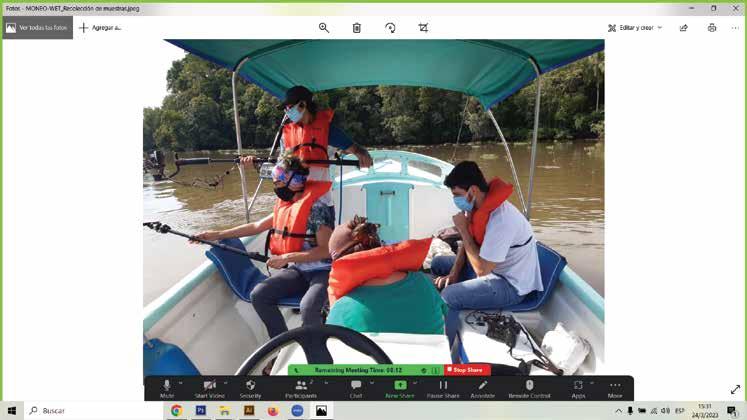
Vision Statement
We aim to be a self-sustaining scientific research laboratory with high impact on decision-making both nationally and internationally to strengthen geospatial innovation, by transferring technical and scientific knowledge at the academic, socioeconomic, and environmental levels.
82
Operational Structure: Spatial Data Infrastructure
Earth Observations
Geospatial Innovation
Remote sensing
Values
Empathy in collaborative work. Willingness to multidisciplinary learning.
Creativity to face improvements. Commitment to the goals set in each project.
Principles
Efficient use of technological infrastructure.
Interdisciplinary collaborative work. Knowledge transfer adapted to populations.
Willingness for constant improvement of the projects that are undertaken.
Strategic Axes
Geographic Information Systems
Remote sensing

Photogrammetry
Global Positioning System
Geodesy
Computational Science
Spatial Data Infrastructure
83
Objectives
To position the image of the laboratory through the establishment of strategic alliances that allow for services and scienti c-technological exchange.

To attract additional resources for the development of research and innovation at PRIAS Laboratory.
To improve the internal processes of the PRIAS Laboratory on geospatial data management.
To increase the operational capacities at the PRIAS Laboratory, for the maintenance of a culture of continuous improvement.
84
Geographic Information Systems
Remote sensing
Photogrammetry

Global Positioning System
Geodesy
Computational Science
Spatial Data Infrastructure
Strategic Nodes
85
Impact Indicators
Publications
Indexed 1 No indexed 1
Specialized 18
TOTAL 20
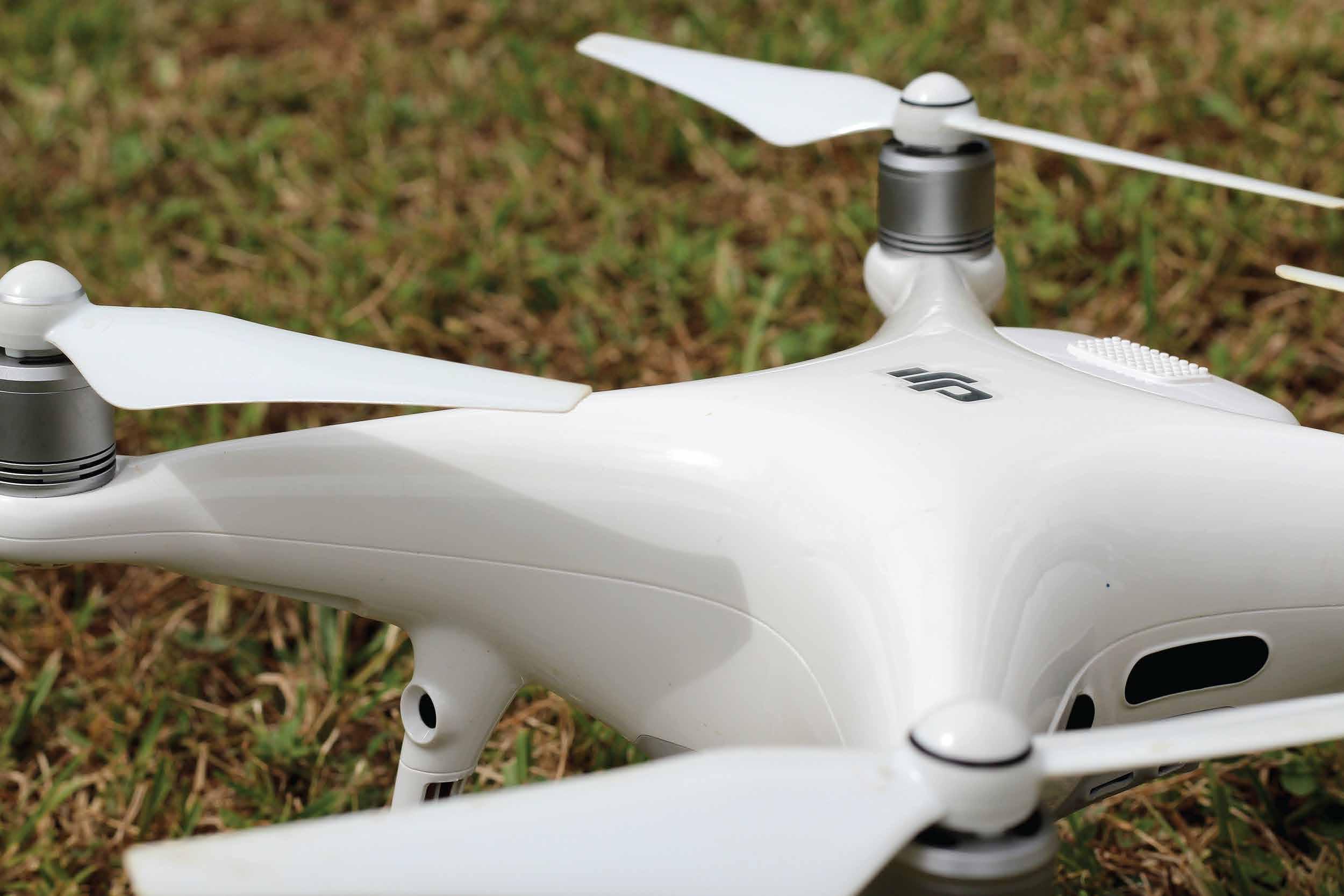
86
5
Knowledge transfers
Workshops
Lecture on Productive Chains. Workshop - Instrumentation for understanding the light reflectance in trees of the Mesoamerican tropics.
Specialized workshop - "Introduction to the use of the Google Earth Engine platform" (UNED students).
Specialized workshop - "Introduction to the use of the Google Earth Engine platform" (UCR students).
Completion workshop of the MONEO-WET project.
6
Participations
Presentation - "Use of technological tools for decision-making on restoration and ecosystem conservation subjects."
Lecture - "Using the UN Biodiversity Lab to Monitor the Pulse of the Planet".
Presentation - “Application of earth observations as a management tool for productive landscapes and tree cover in Costa Rica”.
Lecture - “Copernicus User Uptake workshop series on managing natural resources”.
Ibero-American Night of Researchers. Presentation at the international topography congress - “MOCUPP as a technological tool in the Monitoring of productive landscapes in Costa Rica”.

Total People benefited 250 11 87
Projects under negotiation: 11
Candidacy of the laboratory in the FAO Awards 2022, in the Partnership category (https://www.fao.org/fao-awards/partnership/ about/es), with the Change in Use of Productive Landscape Monitoring (MOCUPP) project.
Classification and updating of life zones as adaptive technological tools for decision-making boosting, with a focus on climate change adaptation in the Central American and Caribbean region (Trilateral Cooperation Instrument Brazil, European Union, Germany (Regional Fund)). Funded by GIZ.
Commitment in the "Design of Cases", to Financial Agents of Banco Popular.
Holdridge Life Zones Update, CCT.
CoopeAgri.
Development of a grass crop classification model based on spectral variables using satellite and aerial images. Funded by CAF.
DISCOVERY “Designing a model to predict manatee habitat using remote sensing techniques combined with monitoring of manatee presence in Costa Rica”.
Pan American Woods.
CONARE-DFG research projects (module 2): Generation of synthetic training data for improvement of marine wildlife detection in remote sensing images.

Rolex Awards, “Design of a marine spatial zoning system for the Golfo Dulce, in Costa Rica”.
WAITT FOUNDATION “Marine Mammals from space: obtaining the spectral signatures of the Antillean Manatee and the humpback whale as a basis for developing a remote monitoring methodology using satellite images”.
Research Projects Public : 7 Internal PEN Operational PRIAS CeNAT 4 2 1 1 Private: 4 Other funds CONICIT funds 3 Total 11
88

Attention to Students Scholarships 11 TOTAL 16 Interns 1 Final Graduation Works 2 Assistant Students 2 89
Linkages
International universities or institutes
United States Agency for International Development (USAID).
Central American Aeronautics and Space Association (ACAE).
Inter-American Development Bank (IDB).
Boston University.
German Aerospace Center (DLR)
Copernicus Reference Center of the University of Chile.
European Commission.
Community of Latin American and Caribbean States (CELAC).
Global Environment Facility (GEF).
Georgia University.
Global Fishing Watch.
Government of Ecuador.
Google Earth Engine.
Gordon and Betty Moore Foundation.
National Aeronautics and Space Administration (NASA).
National Geographic Society.
Natural Capital Project.

United Nations (UN).
Food and Agriculture Organization of the United Nations (FAO).
Organization for Economic Cooperation and Development (OECD).
United Nations Development Program (UNDP).
Secretariat for Central American Economic Integration (SIECA).
National Academic Sector
Professional and Vocational Technical High Schools.
Costa Rica Institute of Technology.
University of Costa Rica.
State Distance Education University. National University of Costa Rica. National Technical University.
Secretariat for the Group on Earth Observations (GEO).
United States Forest Service.
United States Geological Survey (USGS). Silvacarbon.
Central American Integration System (SICA). Regional Visualization and Monitoring System (SERVIR).
German Society for International Cooperation (GIZ).
System for Earth Observations, Data Access, Processing & Analysis for Land Monitoring (SEPAL).
UNDP Biodiversity Lab.
International Union for Conservation of Nature (IUCN).
Fairbanks University.
University of Mayland.
Stanford University. University of British Columbia. Waitt Foundation.
6
37 90
National Universities or Institutes
Aqueduct and Sewer Institute (AyA).
Central Bank of Costa Rica (BCCR). Banco Popular.
National Chamber of Palm Producers (CANAPALMA).
National Chamber of Pineapple Producers and Exporters (CANAPEP).
Tropical Agricultural Research and Higher Education Center (CATIE).
Center for Research and Training in Public Administration (CICAP).
Agronomical Research Center (CIA)
National Center for Geoenvironmental Information (CENIGA).
National Commission for Risk Prevention and Attention to Emergencies (CNE).
National Commission for Biodiversity Management (CONAGEBIO).
National Power and Light Company (CNFL).
Consejo Nacional de Rectores (CONARE).
National Council for Scientific and Technological Research (CONICIT).
Comptroller General of the Republic (CGR).
Regional Agricultural Cooperative of Milk Producers (COOPELECHE).
Livestock Corporation (CORFOGA).
Water Directorate.
Climate Change Directorate (DCC).
Environmental Quality Management Directorate (DIGECA).
General Directorate of Civil Aviation (DGAC).
National Forest Financing Fund (FONAFIFO).
Costa Rican Institute of Electricity (ICE).
Costa Rican Institute of Fisheries and Aquaculture (INCOPESCA).
Costa Rican Coffee Institute (ICAFE).
National Geographic Institute (IGN).
National Geographic Institute (IGN).
Inter-American Institute for Cooperation on Agriculture (IICA).
National Meteorological Institute of Costa Rica (IMN).
National Learning Institute (INA).
Costa Rica National Institute of Statistics and Census (INEC).
National Institute of Agricultural Technology (INTA).
Ministry of Agriculture and Livestock (MAG).
Ministry of Environment and Energy (MINAE).
Ministry of Science, Technology, and Telecommunications (MICITT).
Ministry of Foreign Trade (COMEX).
Ministry of Economy, Industry, and Commerce of Costa Rica (MEIC).
Ministry of the Presidency.
Ministry of Housing and Human Settlements (MIVAH).
Municipality of Garabito.
Municipality of San José.
Volcanological and Seismological Observatory of Costa Rica (OVSICORI).
State of the Nation Program (PEN)
SIRGAS Network (Geocentric Reference System for South America). Seismological Network.
National Registry of Costa Rica.
Sectoral Planning Secretariat of Environment, Energy, Ocean, and Territorial Planning (SEPLASA).
REDD Secretariat (Reducing Emissions from Deforestation and Forest Degradation). State Phytosanitary Service.
National System of Territorial Information (SNIT).
National Monitoring System for Land Cover and Use and Ecosystems (SIMOCUTE).
Administrative Environmental Court (TAA).
CENFOTEC University (Training Center in Information and Communication Technologies).
Latin American University of Science and Technology (ULACIT).
Vice Ministry of Water and Oceans.
55 91
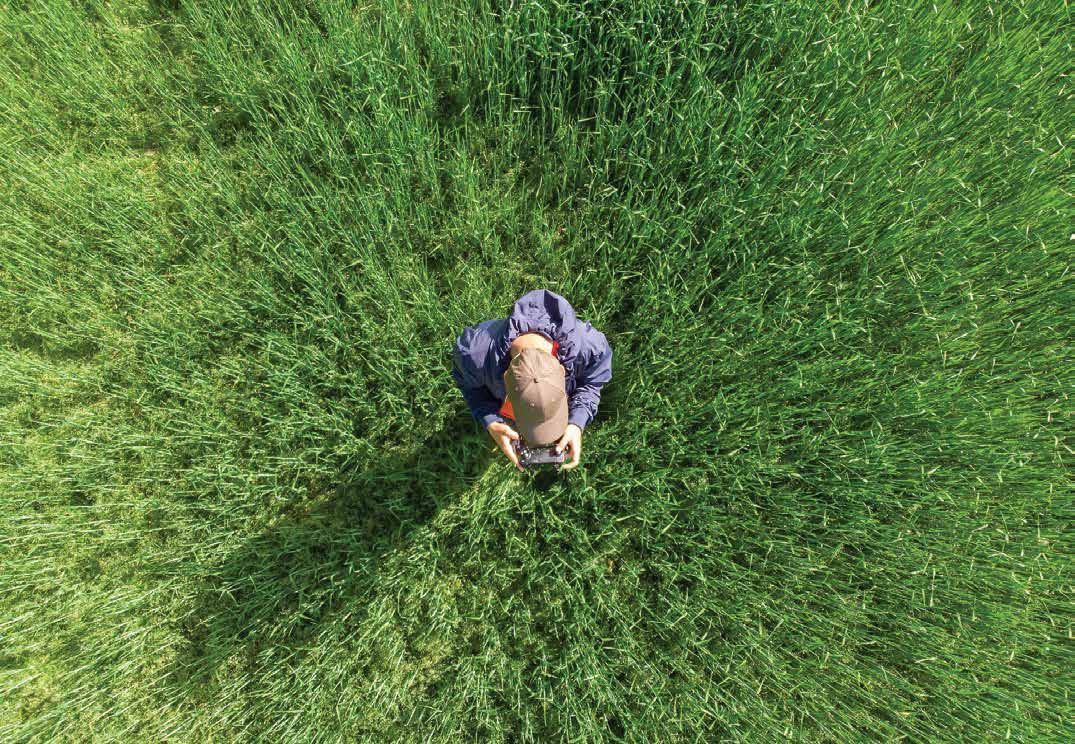
International Companies Earth Blox. EO Data Science. 7 National companies Aeronautical Education Academy (AENSA). Geotecnologías S.A. 8 Agreements International 1 Letter of Understanding CeNAT - DLR. 92
Summary of Projects
PUBLIC FUNDS
Internal Projects
Progress Project
Internal project for implementation of distributed storage in GeoCenter
The purpose of the project is to take advantage of the GeoCenter resources to implement a distributed system of container orchestration technologies within the PRIAS data center.
The aim of the project is the implementation of a distributed system for the automation of deployment, scaling, and management of containerized applications within the PRIAS data center.
Internal Spectral Signatures Project
The Spectral Signature Library project aims to develop a tool to enable the cataloging, managing, and sharing of spectral signature data collected in different internal and external research projects. Furthermore, it seeks to support research conducted in the country by supporting student interns, CeNAT-PRIAS fellows, or assistants. In addition, it collaborates in the generation of hyperspectral data information for institutions within the triple helix. This project is carried out in measuring crops of major socioeconomic relevance in several regions of the country, in different phases of crop development, and in developing research projects through collaborations with institutions or scholarship holders in spectral signature data research to enable the generation of data to feed the library.
Internal Implementation of Spatial Data Infrastructure PRIAS Project

The Spatial Data Infrastructure Implementation project aims to develop a spatial data infrastructure web implementation based on the optimization of the use of the GeoCenter to offer an array of services. This project seeks to implement an inventory system for laboratory assets, as well as to host and monitor the different GeoCenter services. It is also used to document the GeoCenter process and management guides in the PRIAS knowledge base.
Unmanned Aircraft for Research (UAV) Internal Project
The Unmanned Aircraft for Research (UAV) project aims to generate data for research through the use of UAVs and photogrammetry. This project seeks to support research conducted in the country by supporting student interns, the CeNAT-CONARE scholarship program, assistants, and PRIAS laboratory projects. In addition to collaborating in the generation of photogrammetric data information for institutions within the triple helix, the project also seeks to increase the generation and analysis capacities of photogrammetric data and aerial images.
1 2 3 4 93
PRIAS-CENAT OPERATIONAL PROJECT
The purpose of the local productive structures project is "to build the spatial representation in the form of geographic information layers that allow reproducing the historical analysis of the Protected Wilderness Areas from 1955 to the present, to link it with other socio-environmental variables". For the project, the decrees or laws that created these territories are taken as a reference, in order to create a database that includes this first-hand information for the delimitation of these geographical spaces.

In addition, as of 2022, SINAC provided a SEMEC database containing different metrics that were analyzed and segregated by Conservation Areas, which has served to establish a unique reference framework for the country that is endorsed by the National System of Conservation Areas (SINAC).
This project aims to construct the spatial representation in the form of geographic information layers to enable the reproduction of the Territorial Administrative Division of Costa Rica for the periods 1905, 1950, 1963, 1973, 1984, and 2014.
Since 2018, a series of publications have been made in the National Territorial Information System (SNIT), using information from the agricultural censuses of the years 1905, 1963, 1973, 1984, and 2014. In the year 2019, the layers for the years 1867, 1888, and 1927 were included. And in the years 2021 and 2022, with supplementary information, agricultural and livestock farming products such as Beekeeping, Rice, Bananas, Cocoa, Coffee, Cane, Pigs, Beans, Cattle, Corn, Potato, and Pineapple were extracted. This information has been useful not only to understand how the territorial distribution of Costa Rica was made up for the years described but also in the agricultural crops that were cultivated.
Operational PRIAS
5
The development of this project is linked to the fulfillment and development of the different indicators of the laboratory.
JOINT PROJECTS WITH THE STATE OF THE NATION PROGRAM (PEN)
Local productive structures: productive and labor chains and territorial value chains in Costa Rica (PEN).
Cantonal Historical Geospatial Representation of Costa Rica period 1905-2014 (pen), a Project with State of the Nation Program (PEN)
6 7
Progress Project
94
Progress Project
CONICIT-FUNDED PROJECTS
Progress Project
Applicability of Sentinel-2, DESIS, and Landsat 8 satellite imagery data for water quality studies, on water bodies related to crop coverage surroundings of the National Térraba-Sierpe Wetland (MONEO-WET).
The MONEO-WET project is a joint research work between the PRIAS laboratory and the German Aerospace Agency. It was carried out in the Térraba-Sierpe National Wetland, where, through spectral signatures, satellite images, laboratory samples, and bio-optical equations, various indicator components of water quality were quantified in the wetland, including total suspended matter, dissolved organic matter, and chlorophyll.
The project sought to adjust the parameters of the bio-optical equations with information from the tropical water bodies in the wetlands, in order to develop a methodology to generate distribution maps of the water quality variables, and in this way, to promote the development of an environmental monitoring system for water bodies.

8
95
Conserving Biodiversity through Sustainable Management of Productive Landscapes in Costa Rica - MOCUPP
Monitoring of Land Use Change within Production Landscapes (MOCUPP) is a management tool that accurately records changes in land use and identifies deforestation processes associated with the country's agricultural dynamics. It is the first component of the "Conserving biodiversity through sustainable management in production landscapes in Costa Rica Project (Productive Landscapes Project)", which was led by the Government of Costa Rica and funded with resources from the Global Environment Facility (GEF).
PRIAS developed the productive landscape layers of pineapple, pastures, palm, and tree cover landscape associated with them, thus providing freely accessible information to the country for compliance with environmental goals and decision-making.
Digital system for monitoring illegal logging in the Golfo Dulce Forestry Reserve and a study area on the Pacific side of La Amistad National Pilot Project
The Pilot project for the Digital Monitoring System for Illegal Logging, Golfo Dulce Forest Reserve, and AMISTOSA Biological Corridor is a joint research work between the PRIAS laboratory and the Food and Agriculture Organization of the United Nations that was carried out in the southern area of the country. During the research work, the study areas were analyzed through the BFAST algorithm, which is capable of detecting the logging of forest cover through time series of satellite images. With this information, the sites where felling was detected were visited in the field and the tree-cutting trends of the site were analyzed in relation to the distance to the road network and the slope of the land. The project sought to develop a methodology to be implemented within a Digital Illegal Logging Monitoring System, which would allow governments to better manage resources in combating illegal logging.
Development of three technological tools for marine ecology and their application on the Antillean manatee in Costa Rica Project
The project entitled "Development of Three Technological Tools for Ecology Applied to the Antillean Manatee in Costa Rica", whose main objective was focused on the development of a mobile application on Android and iOS systems (MAR-ECO), is downloadable for free from Google Play Store and Apple Store. It is linked to a web platform that receives the records generated by the App (https://mareco.cenat.ac.cr/), and to the development of an Automatic Manatee Count Algorithm (ACAM). From September 2021 to May 2022, data on manatee sightings were collected using the App and the platform, as well as audio recordings in manatee habitats, using underwater recorders. Audios are currently being processed with ACAM. Work is underway to adapt the format of a finished manuscript into an indexed journal and to produce a second manuscript.

PRIVATE FUNDS
9 10 11 Progress Project 96
Environmental Management Area
Gestión
Ambiental


(CeNAT-CONARE) 2022 Scientific publicationsDissemination DISTRIBUTION OF GOALS INDICATORS Public Private Total 2 0 2 15 5 20 2 3 5 10 3 13 Knowledge transfer activities Research projects Attention to students 1 0 1 Agreements 98
Environmental Management Area Annual Operating Plan
Introduction
The Environmental Management Area links and articulates environmental, climatic and agromatic actions among the universities linked to CONARE, state institutions and the business sector. Topics include advisory and search for sustainable alternatives in productive processes, natural resources, best practices, academic and specialized training activities, research and applications of new environmentally friendly technology. This area is supported by Environmental Management representatives from UCR, TEC, UNA, UNED and UTN which make up the Academic Advisory Committee.
Its main goals include support, coordination and projection in Environmental Management at universities; development of environmental projects and interdisciplinary activities with the other divisions at CeNAT; management and conservation of natural resources, climate and food safety and support in improving the country's environmental policies.

99
Development Goal
To disseminate and empower society based on the Sustainable Development Goals, in the economic, social and environmental fields on climate change, productive chains, and added value of products, by developing technical assistance processes that territorially impact innovation projects, technology and entrepreneurship for the productive development of Costa Rica.
Mission Statement
We are a research area with national and international linkages, which supports the public, private and civil society sectors in technical assistance for decision-making in the face of risks of weather events and in productive development, through a team of specialized professionals who carry out studies with the highest scientific standards, within the framework of innovation and development of higher education in Costa Rica.
Vision Statement
We aim to be a self-sustaining research area with high economic and social impacts at the national and international levels, which contributes to knowledge generation on climate change, production chains, and product added value, being a leader in strengthening competitive development and technical assistance from the intersectoral articulation.

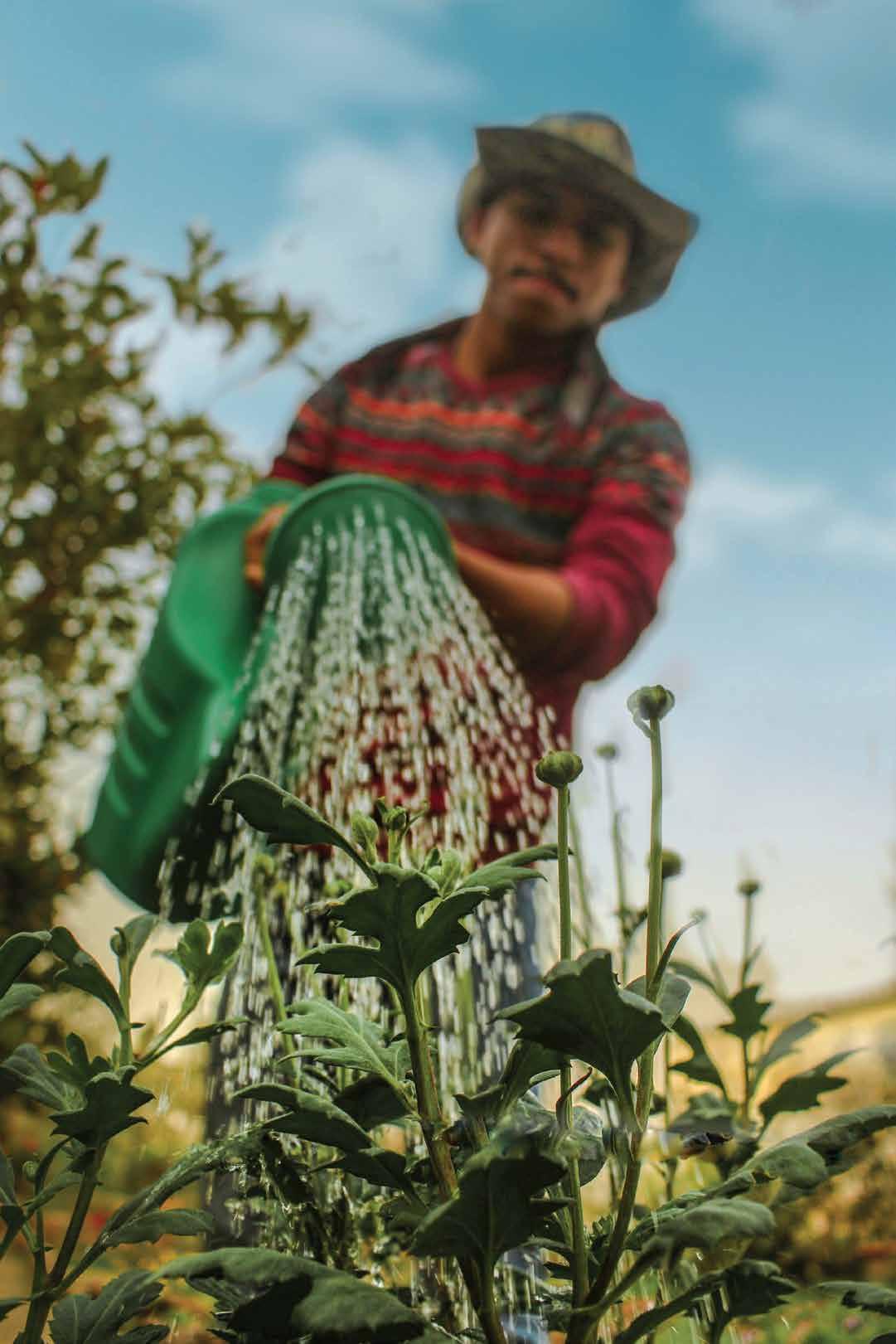
100
Values
Human team care.
Support to food industry and productive support in continuous improvement.
Collaborative management in the projects that are undertaken.
Socialization of scientific information to society.
Principles
Efficient use of time.
Accountable administrative management of research projects.
Willingness for constant improvement of the projects that are undertaken.

Knowledge and skills empowerment.
Technical assistance
Operational Structure:
Innovation and development
101
Climate change Agromatics
Development Objective of the Environmental Management Area
To manage e ective links with di erent stakeholders of civil society, both nationally and internationally.
To implement technology tools for both access and dissemination of information
. To increase knowledge in communities on environmental management matters.
To strive to the nancial sustainability of Environmental Management.

102
Strategic Nodes
Development of computer platforms and information access tools for decision makers, producers and communities, on population, spatial, environmental, climate and agrifood matters.

Development of joint projects to support communities and environmental impact studies with national and international organizations.
Promotion of knowledge and added value of products through agromatic strategies linked to national, regional and global initiatives, such as the SAN-CRLAC plans, Slow Food, denominations of origin, Mother Earth fairs and related activities.
103
Programs of the Environmental Management Area
Area Direction
The Coordination of the area supports and aligns the strategic actions of the di erent programs that make up the area. In addition, it collaborates in managing the projects developed by PRIAS Laboratory.

In addition, it promotes business innovation actions and projects with European and American linkage projects, focusing on SMEs and high-tech ventures. This is done in partnership with the Ministry of Science, Innovation, Technology and Telecommunications (MICITT) and the Ministry of Economy, Industry and Commerce (MEIC).
In addition -following instructions by CeNAT's General Directorate-, the Environmental Mannagement Area Director coordinates the annual CeNAT– CONARE Scholarship Program, focusing on undergraduate and postgraduate students from public universities, so that they can carry out their theses or research projects at CeNAT laboratories and/or programs.
Finally -also under the advice of CeNAT's General Directorate-, we provide support to the logistic development of inter-laboratory projects and events (congresses, seminars, and others) of other CeNAT units.
104
Climate Observatory

The Climate Observatory Program of the Environmental Management Area responds to the need to strengthen the capacity to adapt to the variability and climate change that extreme variations in weather and climate generate on the productivity of the agricultural sector.
It is a Program dedicated to researching past and current situations, as well as climate perspectives with the purpose of social bene t facing climatic adversities.
The Observatory continuously and innovatively provides services to the agricultural sector in research and training, with personalized assistance from a technological platform on issues related to adaptation and resilience to variability and climate change to agricultural communities, in order to sustain productivity and increase the yield of crops and livestock; thus, helping in decision-making and planning of activities.
Thanks to the agreement signed between CeNAT and the National Meteorological Institute (IMN/MINAE), it was possible to serve several thousand producers and decision makers in a constant and e cient manner, not only from Costa Rica, but also from the entire Central American Region, contributing weather forecasts and reports on variability and climate change, using three key toolsPIACT's web page, 34 WhatsApp and Telegram chats, and a Facebook page.
As will be detailed later, these tools and CeNAT/CONAREIMN/MINAE joint work allow, at di erent levels of interest and understanding, timely and adequate tactical and strategic decision-making, both for matters related to prevention and mitigation of atmospheric events, and for Central American agricultural production.
105
Agromatics
The Agromatics program is dedicated to working with the support of alliances and high technologies (with universities, institutions, ministries, companies, regulatory bodies, and CeNAT's own laboratories), in publicizing local resources and products.
Both products and their gene expression are typi ed to detect genes for adaptation to the environment and resistance to diseases and pests, which are linked to quality and hardness, according to the variability of the existing species. Typi cation is done through the knowledge of the organoleptic and culinary quality of local products, many of which are little known.
In addition, morpho-agronomic, physicochemical, organoleptic, and biochemical characterizations are carried out to allow knowing and evaluating both nutritional and anti-nutritional contents of products and, through high technologies, the technical speci cations that may indicate that a product deserves a distinctive sign of quality are endorsed. The aim is to determine the origins and uses of the di erent products and the good use of agro-industrial by-products. These comprehensive studies make it possible to address natural disasters, climate variability and change, deforestation, and loss of harvests that cause higher prices of products and food insecurity.
Through the alliance with Slow Food, activities are developed to promote quality, clean products (innocuous and with clean technologies that minimize damage to human, animal, and environmental health), and fair pricing, by reducing intermediation chains in a way that not only producers and their families win, but also co-producers, who are conscious consumers and understand the problems of producers and their families and consider the great e ort they make to provide more sustainable and healthy products.
2022 AOP Strategic Actions
The strategic Environmental Management actions developed during the year 2022 focused on the aforementioned programs and meet the needs and goals proposed in the 2016-2020 Environmental Management Strategic Plan. In addition, it included the delegations and assignments established by the General Directorate of CeNAT.

106
Impact Indicators
Publications
Specialized 2
Knowledge transfers
TOTAL 20
8 Lectures
Lecture about Mother Earth
Lecture on the importance of conserving water resources

Lecture - "Identification, conservation, and valuation of local and cultural products, as a territorial promotion strategy through a GIAHS / Important Systems of World Agriculture), with an orientation towards tourism". Patricia Sánchez. “Fossil fuels” Cinema Forum
Lecture - "Wastewater"
Lecture - "Clean energy"
Lecture "Sustainable Purchases"
Round table - Environmental compensation
Workshops: 2
Workshop on composting preparation and process
Climate Crisis Activism workshop
107
Courses 10
Ecogastronomy and Slow Food PIAM/UCR - I Semester.
Ecogastronomy and Slow Food PIAM/UCRII Semester.
Training taught to the new Board of Directors of ASOPROA on status, progress, and results within the framework of the joint project between CeNAT-ASOPROA-PINN-MICITT16/03/2022. Training within the framework of the CeNAT-ASOPROA-PINN-MICITT joint project of the PINN-ASOPROA project. 1/26/2022. Training taught on Differentiation Strategies for Rural Development to Uganda-Slow Food: Training taught by Patricia Sánchez from Agromatics, on food safety and Slow Food subjects. 04/25/2022.

Business course for HP-Aliarse / Agromatics-UNICORI, conducted by Patricia Sánchez from Agromatics, a virtual training for entrepreneurs.
Traditional products and cheese tortilla making: a workshop taught by Patricia Sánchez from Agromatics, to North American students from the Veritas University.
Presentation "The GIAHS, as a heritage valuation strategy for the development of Tucurrique", taught at the XXXIII Latin American Congress of Sociology, ALAS Mexico 2022- Patricia Sánchez Lecture at the Ibero-American Night Talk at Turkey event on food systems.
108
People reached
Lectures and Trainings: 2,500 people
PIACT Interactive Platform: 2,000 users
Facebook page: 45,000 people reached monthly on average.
8,000 Technical assistances to producers in variability and climate change
WhatsApp/Telegram groups: 21 WhatsApp groups and 13 Telegram groups with an impact on 8,000 users from Costa Rica and 3,000 from the rest of Central America reached daily, at least once a day (4 times a day during the tropical storm season).
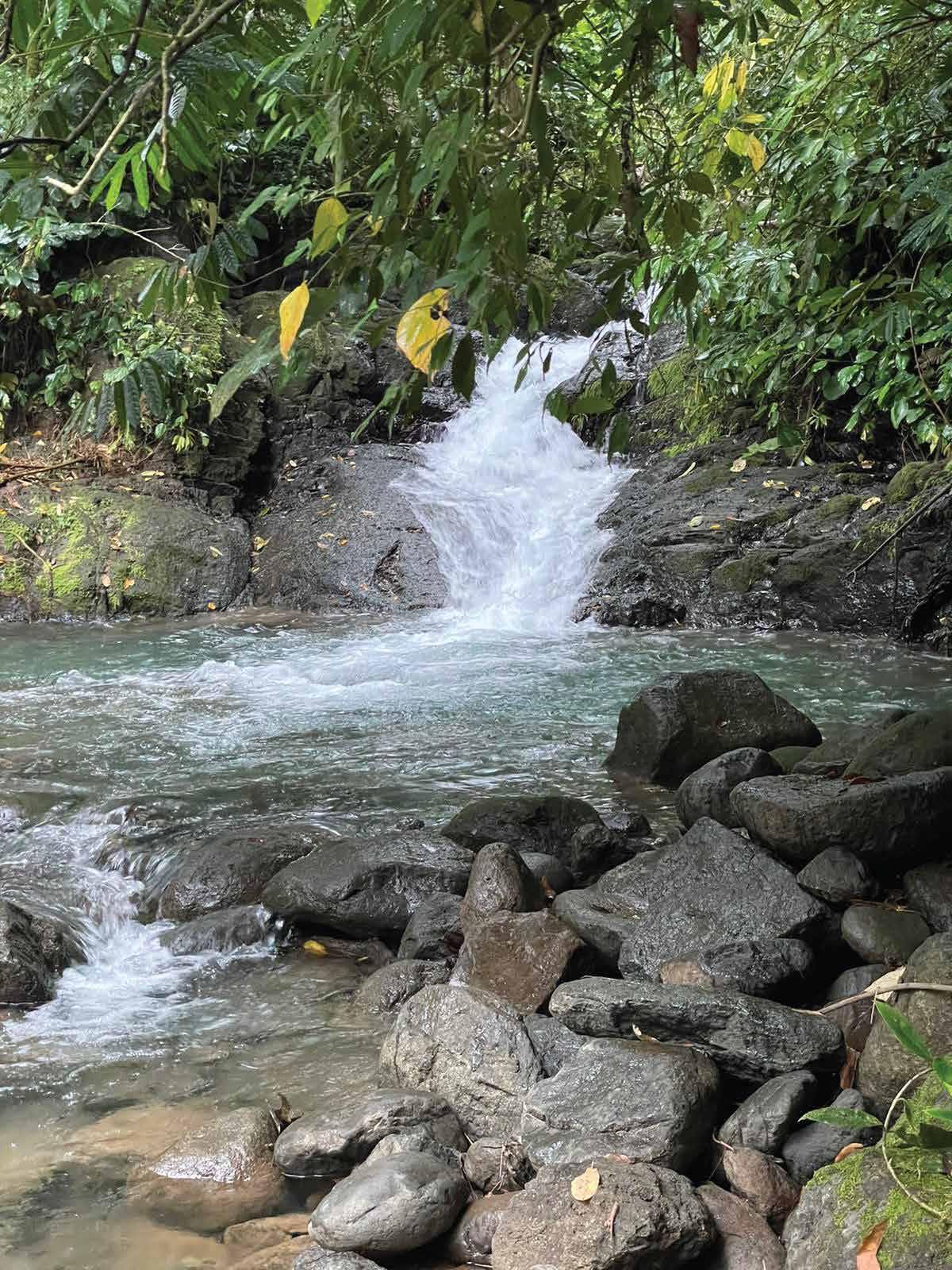
109
Research Projects
Public 2
Operational Environmental Management Project Antarctica project
Private 3
TOTAL 5
PINN-ASOPROA Project: "Creation of the Comprehensive Quality Unit of the Turrialba Cheese Designation of Origin" PINN-MICITT. Earth Market Project. UPS Environmental Management Project.
Projects/Proposals Under Negotiation
Desamparados Landfill Project

Collaboration in joint proposals between Convivios Slow Food (Italy-Limón-San José-Mexico)
Collaboration in project proposal "Study of Nutritional Factors that affect the quality of Turrialba cheese with Denomination of Origin in Costa Rica".
Sale of Services
Sale of Services:
Project Manager in promotion and development of CeNAT-FunCeNAT-CONICIT Culture of innovation. Allan Campos. Project Manager in Atlas of Innovation. Allan Campos.
110
Attention to Students
TOTAL 13
Linkages
National Academic Sector
Linkages with 5 public universities, through research projects and/or collaboration.
International Universities or Institutes
Scientific and Technological Research Council. TUBITAK-Turkey
Toros University - Turkey
Mondragon University, Spain.

International Companies
ISEF Science Fair event in conjunction with the European Union
UNA University in Nicaragua
Organization of American States (OAS)
National Association of Cattle Breeders (ANAGAN)
Walmart Central America
TRIFINIO Plan: organization of members of the borders of Honduras, Guatemala and El Salvador.
CeNAT-CONARE Scholarships
CeNAT-CONARE Fellow students High School student vocational practice
Student with vocational practice Assistant Hours
Assistant students
3
1
9
111
National Companies
Ministry of Agriculture and Livestock
Repretel Channel 6
Columbia Radio Station
La Extra Newspaper
Industrial Sugar Cane Chamber (LAICA)
National Institute of Innovation and Transfer in Agricultural Technology (INTA)
CACPROSA
Farmer House (CASAGRI)
Livestock Corporation (CORFOGA)
Radio Santa Clara
MICITT-CONICIT
Ministry of Economy, Industry, and Commerce of Costa Rica (MEIC)
Costa Rican Institute of Tourism (ICT)
Ministry of Environment and Energy, Costa Rica (MINAE)

Ministry of the Presidency
National Learning Institute (INA)
Ministry of Justice
Banco Popular de Desarrollo Comunal (BPDC)
ASOPROA
Chamber of Industries of Costa Rica
National Bank of Costa Rica (BN)
Embassy of the Arab Emirates, Costa Rica
Board of Pensions and Retirements of National Teachers (JUPEMA)
National Meteorological Institute (IMN)
Agreements
National 1 IMN-CeNAT Framework Collaboration Agreement
112
Summary of Projects
Project
OPERATIONAL ENVIRONMENTAL MANAGEMENT Progress
The Environmental Management Area provides technological support and accurate, pertinent and timely information to more than 9,000 producers throughout Costa Rica and Central America. Subjects relate to climate variability and change, food security, Agromatics and the Slow Food global trend, for proper decision-making. It also supports research and development processes on the economic and nutritional added value of national producers, by advising and training producer associations.
Finally, Environmental Management promotes scientific vocations and provides support to student fellows, interns and other modalities to encourage the new generations.

1 113
Project
UPS ENVIRONMENTAL MANAGEMENT Progress
This project provides operational sustainability to various projects and programs, including the Interactive Platform for Tropical Change (PIACT), 21 WhatsApp groups and 13 Telegram groups, as well as the website of the Climate Observatory. Furthermore, it allows hiring personnel and students who support projects of various kinds, in support of triple helix stakeholders, such as government entities, producers, and national and international consortiums, all related to sustainable development, clean energy and the environment.

Project
EARTH MARKET Progress
It conducts training and promotional activities for producers and farmers, in Tucurrique, Turrialba, and the Caribbean area, among other places in the country. It also develops the activity called "Mercado de la Tierra", which encourages the participation of chefs, artisans, and students, among other people, with the added value of local food and food security. Finally, it supports and participates in the Integrated Program for the Elderly (PIAM).
3
4 114
Project
"CREATION OF AN INTEGRAL QUALITY UNIT OF THE TURRIALBA CHEESE DESIGNATION OF ORIGIN", PINN- ASOPROA-MICITT PROJECTS
Progress
This is a project funded by the PINN-BID Fund, to facilitate the development of an Integral Quality Unit (UCI) for the benefit of the Association of Agricultural Producers of Santa Cruz de Turrialba (ASOPROA SC), so that cheese producers in the Turrialba area can verify, firstly, the added value of their product, which has the Designation of Origin seal. In addition, it will become a self-sustaining instrument to validate the quality of the products offered by the producers in the area.

5 115
INSTITUTIONAL RESULTS

SUPPORT IN KNOWLEDGE TRANSFER
In addition to its focus on research development, for LANOTEC is also essential to maximize work in extension and teaching, since we are concerned with developing and enhancing the promotion of scientific vocations from an early age, seeking a rapprochement with educational centers to involve children in the process from the first school cycle.

Part of the commitment in this area is evident in the participation of student delegations at different Science and Chemistry Olympiads, starting the process at the national level to select the representatives to participate at the events at the international level.
At the national level, we were involved in the organization of these activities:
Costa Rican Chemistry Olympiad.
V Costa Rican Science Olympiad.
VII Camp for the Promotion of Scientific Vocations, especially Chemistry.
In 2022, the following activities were carried out at the international level:
XV Central American and XIII Caribbean Chemistry Olympiad.
XXVI Iberoamerican Chemistry Olympiad.
54° International Chemistry Olympiad.
19th International Junior Science
Because of the pandemic that is being faced worldwide, the organization of the International Chemistry Olympiad decided to carry it out online, using the Zoom and OlyExam platforms. This year, a step has been taken to return to face-to-face and the first face-to-face Olympics was the International Youth Science Olympiad.
117
XV Iberoamerican Chemistry Olympiad
The Olympiad was held in a mixed way, with the first exam taken virtually and the final one in person. In addition, category A students took a laboratory exam aimed at those who obtained the best grades in the final exam.
During this process, tests must be prepared and reviewed; there is participation at activities and contribution to logistics.
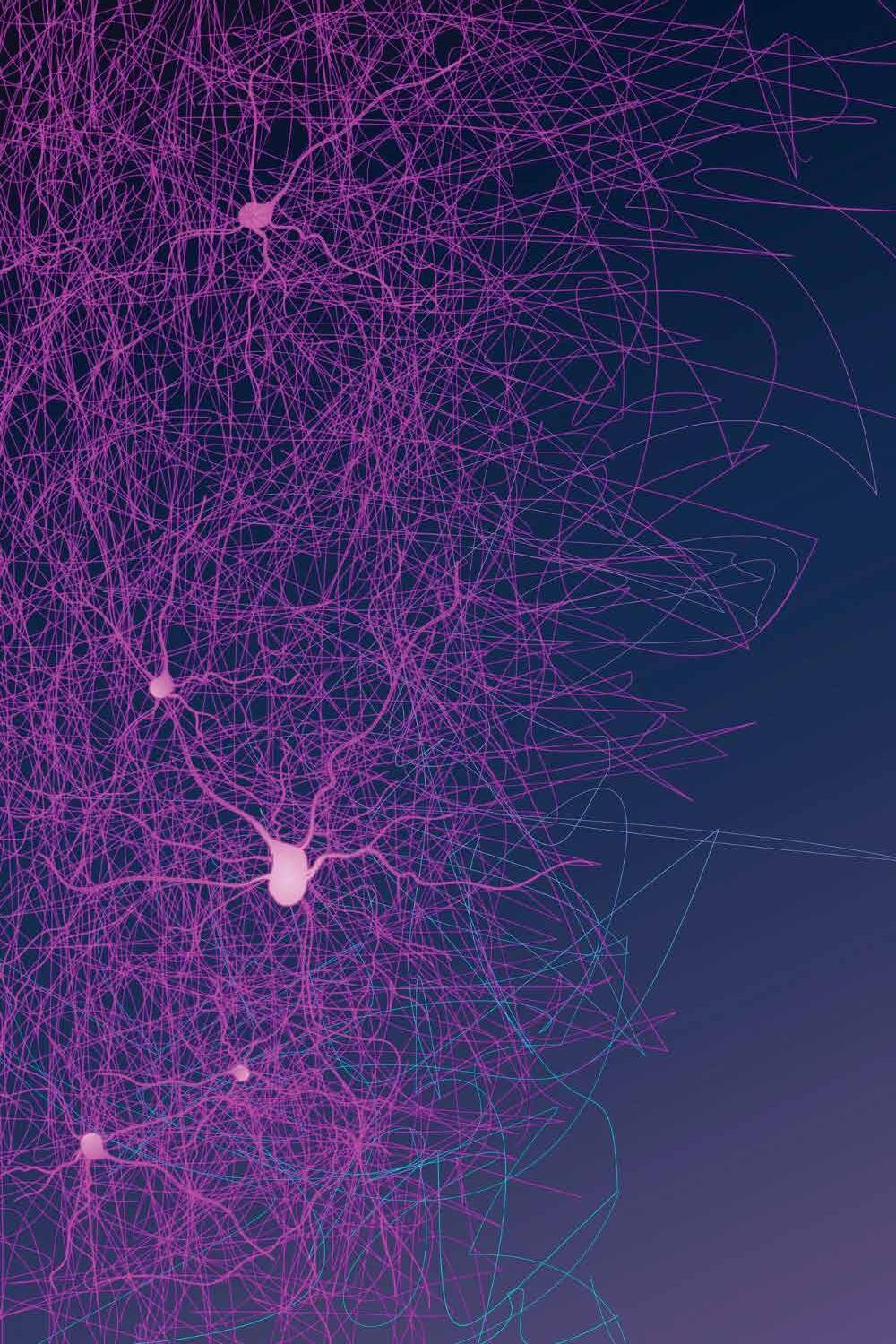
In addition, preselected students are trained to prepare for international competitions. During this process, several "super finals" are made to select those who will participate in the international Olympiad.
For the 2022 Costa Rican Chemistry Olympiad, the distribution of participants was the following:
301 369
Women Men
TOTAL 670 Alajuela 133 Students Guanacaste 46 Students Heredia 153 Students Limón 53 Students Puntarenas 80 Students San José 117 Students Cartago 88 Students 118
V Costa Rican Science Olympiad


The Olympiad was held in a mixed way, with the first exam taken virtually and the final one in person. In addition, a laboratory internship was carried out with the students who obtained the best grades in the final exam. In this internship, students carried out laboratory practice and after that, they visited some laboratories where they learn about what the laboratory does and what its scope is.
During this process, the exams that have contents from the three areas: biology, physics and chemistry are prepared and reviewed, in addition to participating in the activities and managing the logistics of the entire contest.























On the other hand, an annual training course is carried out for pre-selected students to prepare them for the international competition. During this process, a "super final" is held to select those who will participate in the international Olympiad.
Below is the distribution of the participants in the Costa Rican Chemistry Olympiad:

















Women Men
TOTAL 307 Alajuela 93 Students Guanacaste 1 Students Heredia 35 Students Limón 39 Students Puntarenas 41 Students San José 66 Students Cartago 3 Students 119
140 167
VII Camp for the Promotion of Scientific Vocations, mainly Chemistry
This camp was carried out with the finalist students from the Costa Rican Science and Chemistry Olympiad. After conducting an analysis of the candidates, a group of students from all over the country were selected.
During the three days, there were lectures, laboratories, experiments, and recreational activities focused on chemistry, physics, and biology, in addition to working on critical thinking and problem solving.
In 2022, the participants in the camp were

18
34
16
120
Women Men 18 16 TOTAL 34 Olympiad Students
XV Central American and XIII Caribbean Chemistry Olympiad

The Olympiad was held virtually, using the Zoom, Google Drive, and OlyExam platforms. The protocol acts were carried out via Zoom.
The meetings for discussion of evidence, translation, and decision were held on the Streaming platform. This test was performed at the CeNAT Computer Laboratory. The students spent 5 hours in a CeNAT computer lab. This time there was no practical test.
The event was organized by Cuba and was held virtually from November 14 to 19, 2022. The delegation included:
Andrea Rivera Álvarez, Head of Delegation
Mario Villalobos Forbes, Mentor
Matías Portillo Fuentes, Student
Oscar Rojas Rojas, Student
Tomas Garay García, Student
Wendy Villalobos González, Supervisor
Yansy Vargas Solís, Supervisor
Achievements
Tomas Garay García
Bronze MEDAL
Matías José Portillo Fuentes
Bronze MEDAL
Oscar Francisco
Rojas Rojas
Special Mention MEDAL
121
XXVI Iberoamerican Chemistry Olympiad

The Olympiad was held virtually, using the Zoom, Google Drive, and OlyExam platforms. In addition to the protocol activities, they were broadcast on Youtube.
The meetings for discussion of evidence, translation, and decision were held on the streaming platform. The laboratory test was done through explanatory videos uploaded to Google Drive and the exam document was downloaded and printed through the OlyExam platform. This test was performed at the CeNAT Computer Laboratory.
The theory test was performed in the same way by the OlyExam platform, and the students had five hours to complete it in one of CeNAT's meeting rooms.
The Olympiad was organized by Mexico and was held from October 22 to 29, 2022. The Costa Rican delegation was made up of:
Randall Syedd León, Head of Delegation
Ricardo Ulate Molina, Mentor.
Tiany Jimena Araya Vega, Student.
Queshia Mariam Porras Rivera, Student.
Daniel Alberto Sáenz Obando, Student.
Mario Villalobos Forbes, Supervisor
Andrea Rivera Alvarez, Supervisor
Achievements
122
Daniel Alberto Sáenz Obando Bronze MEDAL
54° International Chemistry Olympiad

The Olympiad was held virtually, using the Zoom and OlyExam platforms, and the protocol activities were carried out from the activity page.
The meetings for discussion of evidence, translation, and decision were held on the streaming platform. The written test was performed on the OlyExam platform, and the students had five hours to complete it.
The activity was organized in China, from July 08-18, 2022. The Costa Rican delegation was made up of:
José Roberto Vega Baudrit, Head of Delegation
Wendy Villalobos González, Mentor Professor
Daniel Saenz Obando, Student
Oscar Rojas Rojas, Student
Queshia Porras Rivera, Student
Andrea Rivera Alvarez, Supervisor
Mario Villalobos Forbes, Supervisor
Achievements: no medals or prizes were awarded; however, the commitment, participation, and growth of the students at an academic level during the development of the Olympiad is highlighted.
123
19° International Chemistry Olympiad
This Olympiad was organized to be held in person. The discussions, translations, and judgments were made by the tutors of the delegation. During these periods, the questions of each test are approved among all the participating countries; then they are translated, and later the grades obtained by the students are discussed.
Each student has three exams to solve: a single selection exam, a written exam, and a laboratory exam. Each exam lasts 4 hours. During these tests, students have questions from the 3 areas: chemistry, physics, and biology.

made up of:
Kenneth Castillo Rodríguez, Biology Leader
Andrea Rivera Álvarez, Physics Leader
Ricardo Ulate Molina, Chemistry Leader
Mateo Sancho Dive, Student
Miranda Herrera Venegas, Student
Maria Paula Corrales Villegas, Student
Dario Rivera Espinoza, Observer
Miranda Herrera Venegas
Achievements
MEDAL
Bronze
124
INNOVATION

Entrepreneurship:
Support to Companies in Applied Scientific Research
LABORATORY LANOTEC

126
Company
Philips Morris
Coopervision Manufacturing Costa Rica
FIFCO
H2020 - EU - University of Belgrade, Serbia
Hologic Surginal Products Costa Rica S.R.L.
Proquinal
FIFCO - ISEF
Lisan Laboratories

Nitinol Devices and Components CR S.R.L.
BAC Credomatic
University of Medical Sciences (UCIMED)
Sumedco de Costa Rica
CR Process Impact S.R.L.
ASOPROA Santa Cruz
LANOTEC and Environmental Management
Research
Evaluation of the impact of cigarette smoke vs THS on indoor air quality.
Analysis and characterization of materials
Plastic bottle characterization analysis
Automated functional screening of IgGs for diagnostics of neurodegenerative diseases (AUTOIgG).
Material characterization analysis.
Evaluation of the antimicrobial activity of four vinyl fabrics produced by the company.
Eureka - ISEF Workshop
Promotion of scientific vocations and participation at fairs at the high-school level.
Development of an analytical method.
Material characterization analysis.
BAC credit cards.
Material characterization analysis.
Material characterization analysis
Material characterization analysis
PINN: Generation of agro-industrial capacities and creation of a comprehensive unit (physical-chemical, organoleptic, and microbiological characterization) to improve the production process of Turrialba cheese with Designation of Origin. 127
LABORATORY CENIBiot
Thrive Natural Care
Preparation, quantification, characterization, and method development for extracts of plant origin materials.
Nippon Paper Papylia Co., Ltd.
Coopetarrazú
In-vitro plant setting.
Preparation, quantification, characterization, and method development for extracts of plant origin materials.
Biotech C.R. S.A.
Bio CR
Molecular identification (DNA barcoding) of living organisms.
Development and validation of quantification and identification methods by HPLC and mass spectrometry techniques.
Corbana S.A.
Corporación de Desarrollo Agrícola del Monte S.A.
CoopeAgri R.L. Speratum
Treinta y cinco fábricas de cervezas S.A.
Stein Laboratories
Molecular identification (DNA barcoding) of living organisms
Molecular identification (DNA barcoding) of living organisms.
Quantification of total polyphenols.
Implementation Unit.
Production of Microorganisms Bacteria, yeasts, and fungi.
Development and validation of quantification and identification methods by HPLC and mass spectrometry techniques.

128
Research Company
Research Company
LISAN
Numu Brewing Sur Química S.A.
CoopeCUNA
Quantification of vitamins.
Production of Microorganisms Bacteria, yeasts, and fungi.
Amino-acid profiling.
Development, quality control, and knowledge transfer for oil production processes at an industrial scale.
Mammoth Biosciences
Description of microbial metagenomes in extreme environments.
Optimization of production protocols of organic biological amendment for agricultural use.
 Granja Avícola Santa Marta
Source: Information provided by CeNAT's laboratories for 2022.
Granja Avícola Santa Marta
Source: Information provided by CeNAT's laboratories for 2022.
129
Apoyo a organismos o instituciones de investigación científica aplicada
LABORATORY PRIAS
Research Company

130
Comptroller General of the Republic (CGR)
Technical support to develop the urban sprawl mapping for Costa Rica in secondary cities. Work is being done on the methodological definition for data analysis and use of images of urban sprawl growth, for expense estimating purposes by the government in the investment of public works for cantons in the national territory.
UNDP, MINAE, British Columbia University, TEC, and other users of available information
ELSA: Mapping nature for people and the planet: Identification and prioritization of essential areas for life, where nature-based solutions can be implemented to meet management, protection, and conservation needs for sustainable development.
CONARE-PEN
Project, “Cantonal Historical Geospatial Representation of Costa Rica for the 1905-2014 period: Constructing the spatial representation in the form of geographic information layers that enable reproduction of the Territorial Administrative Division of Costa Rica for the periods 1905, 1950, 1963, 1973, 1984 and 2014”.
Project, “Local productive structures: productive, labor, and territorial value chains in Costa Rica”.

Regional Science and Technology Advisory Group (RSTAG), TAA
Within the framework of the Sustainable Development Forum for Latin America and the Caribbean, the Regional Science and Technology Advisory Group (R-STAG) held a meeting. The event was jointly organized by the National Risk Prevention Commission and Attention to Emergency (CNE) and the Centro Nacional de Alta Tecnología through the PRIAS Laboratory.
Work was done on the ResilienceTech22 communication campaign to support the organization of the RSTAG meeting. Additionally, a search for mentors for the event was supported. In addition, researcher Heileen Aguilar and Infrastructure Analyst Stephanie actively participated as contestants.
Costa Rican Space Agency
Participation in the definition of strategic lines of the Costa Rican Space Agency.
131
Research Company
Researchers from the PRIAS Laboratory Heileen Aguilar, Ezequiel Fallas, and Marilyn Manrow participated as experts by providing an induction training within the Course "Restoration, Ecological Succession and Ecosystems" of the Master's Degree in Land Management and Climate Change, articulating with higher education in Costa Rica and international cooperation the strengthening of geospatial innovation, through the transfer of technical and scientific knowledge at an academic, socioeconomic, and environmental levels.
PRIAS Laboratory researcher, Francini Corrales Garro, participated at the "Women transforming the world” talk, a space in which women from the technology sector and in leadership positions shared their experiences and vision of actions to eliminate the gender gap and promote the inclusion of women in STEM positions.
PRIAS Laboratory researcher, Jennifer Fernández Garro, participated as a speaker at the "I Regional Meeting on Innovation, Entrepreneurship, and Knowledge Transfer", held in Guatemala. It was organized by the University of San Carlos in Guatemala (USAC) and the Central American Higher University Council (CSUCA).
Within the framework of the Ecosystem Services Modeling project, the paper called: “Modeling multiple ecosystem services and beneficiaries of riparian reforestation in Costa Rica”, by the Stanford University of the United States and with the support of different collaborators such as the PRIAS Laboratory, the Ministry of Environment and Energy through the National Center for Geoenvironmental Information, Banco Central de Costa Rica, Costa Rican Electricity Institute, Tropical Agricultural Research and Higher Education Center, Yale University, Princeton University, as well as the companies Salo Sciences and SPRING.
 National School of Civil Protection of the United Mexican States
Recluta Talent Hunter Consulting Firm
CSUCA, USAC
Stanford University
National School of Civil Protection of the United Mexican States
Recluta Talent Hunter Consulting Firm
CSUCA, USAC
Stanford University
132
Research Company
LABORATORY CNCA
Research Company
Ministry of Science, Technology, and Telecommunications (MICITT)
Ministry of Agriculture and Livestock (MAG)
Public Universities (UCR, TEC, UNA, UNED, UTN)
Chamber of Information Technologies (CAMTIC)
Advanced Computing System for Latin America and the Caribbean (SCALAC)
Central American Higher University Council (CSUCA)
Collaboration for the development of artificial intelligence in the country.
Support research institutes in the development of activities.
Advanced computing platform for the development of research and training projects.

Collaboration in the artificial intelligence chapter.
Support in the organization of the company structure.
Advanced computing platform for the development of research and training projects. 133
Environmental Management
AREA
Research Company
Restaurateurs, chefs, and cooks, PIAM/UCR
5,300 Producers using the platform in CR and Central America
5,300 Agricultural producers
ASOPROA - Santa Cruz

Ecogastronomy and Slow Food Course.
Management of PIACT and Mercado de la Tierra Facebook pages.
Central American Climate Chat update.
PINN Project. Creation of the Comprehensive Quality Unit for Turrialba cheese with Denominations of Origin.
FUNDECOOPERACIÓN
Support to adaptation of the agricultural sector through the dissemination of meteorological information - Phase II.
CONICIT/Costa Rican Promoter of Innovation and Research Organization of American States (OAS)
Innovation Commission - Chamber of Industries of Costa Rica
Scientific / Technological Department-Embassy of the People's Republic of China in Costa Rica
Collaboration with Slow Food, Uganda
INSPIRA: Promotion and development culture of innovation.
Update of the Innovation Atlas of Costa Rica.
PIACT-Trifinio Plan.
Creation of the FESTO-CICR-CeNAT/CONARE Learning Factory.
Development of a prototype mobile laboratory for the deployment of the CR-2023 Antarctic Mission.
Collaboration to contribute on issues related to added value of products and with differentiation for quality.
Source: Information provided by CeNAT's laboratories for 2022.
134
Socialization of Sciences

For Centro Nacional de Alta Tecnología, the socialization of the scientific knowledge that is carried out through subsystems - scientific education, communication, and dissemination of the institutional work of CeNAT - is highly relevant.
CeNAT works for society. In view of this, communication is a bridge with the population to disseminate scientific knowledge and the findings made by laboratories and the area.
For CeNAT it is important to 'demystify' science that is perceived as something complex and far from the common citizen and daily life, to highlight and recognize its existence in everyday life.
The communication work that is carried out attracts the attention of the press. Also, queries from the population are answered on CeNAT's social networks.

136
Work of CeNAT on Media
Currently, the presence in social networks is fundamental within the dissemination strategy, as a permanent communication channel, which has the advantage of the immediacy of the information shared to the audiences of the institution. CeNAT has a YouTube channel, a Soundcloud profile, a Facebook page and a website, which represent the institutional channels that provide information to the different audience segments.
On social networks, CeNAT provides content with informative and educational value, which contributes to promoting scientific vocations. It is intended to provide service information with topics that are of interest to them.
Within the digital ecosystem, our Facebook page is constantly growing in followers and the audience is stratified by 53.80% women and 46.20% men. The posts that are made are announcements of virtual courses or workshops, news of the institutional work, CeNAT-CONARE scholarship programs, knowledge transfer activities, research projects and digital media campaigns that are developed on different topics.

CeNAT's Social Networks Written press 15 Radio Television 10 Digital media 26 11
62 137
In 2022, two campaigns were implemented CeNAT-CONARE Scholarships and Research Projects of the divisions

138
SOCIAL MEDIA

139
15,076
Number of followers
509,239 people
Annual reach of posts
Alcance del CeNAT a través de Facebook

42,437 people
Average monthly reach of posts
49
Number of countries that follow the page
Source: Information from the year 2022.
*The number of followers has been generated organically, without resorting to paid social media advertising. As of December 31, 2022
140
Countries that follow CeNAT's activities socialized on Facebook
Costa Rica
Mexico
Peru
Ecuador
U.S
Guatemala
Colombia
Spain
Nicaragua
El Salvador
Honduras
Argentina

Germany
Bolivia
France
Brazil
Chile
Canada
Panama
UK
Venezuela
Paraguay
Italy
Netherlands
Portugal
Switzerland
Uruguay
Dominican Republic
Puerto Rico
Denmark
Sweden
South Korea
Austria
Russia
Belgium
Japan
Israel
Turkey
Egypt
Australia
Czech Republic
Philippines
Cuba
Vietnam
Iraq
Norway
New Zealand
Syria
Nigeria
141
Source: Information from the year 2022.
Below, the main data of information on reach, achievements and impacts evidenced by each of the Laboratories of CeNAT in the year 2022 are presented.
Officials, collaborators and scholarships. Period 2022-2021

Centro
Alta Tecnología
Officers Collaborating students Scholarships Total ORIGIN Source: Information on the year 2022 provided by the Laboratories and Area of CeNAT. YEAR 2022 78 145 41 264 YEAR 2021 66 149 42 257 YEAR
264 YEAR
142
Fundación
de
at CeNAT
2022
2021 257
Officials, collaborators and scholarships 2022
2022 Indicators, according to CeNAT Laboratories and Areas

Source: Information on the year 2022 provided by the Laboratories and Area of CeNAT.
Officers 78 145 41 Scholarships Collaborating students 160 140 120 100 80 60 40 20 0
Source: Information on the year 2022 provided by the Laboratories and Area of CeNAT. C eNAT Public and private indicators 2022 Indicator CNCA PRIAS AGA LANOTEC CENIBiot Total Publications 10 20 2 38 15 85 Knowledge transfer 41 11 20 30 13 115 Projects 14 11 5 25 33 88 Cluster Performance Days 355 - - - - 355 Cluster usage hours 70460 - - - - 70460 Agreements 2 1 1 2 3 9 Student support 7 16 13 66 85 187 143

10 41 14 355 2 7 20 11 11 0 1 16 2 20 5 0 1 13 38 30 25 0 2 66 15 13 33 0 3 85 0 50 100 150 200 250 300 350 400 Publications Knowledge transfer Projects Cluster Performance Days Agreements Students support CNCA PRIAS AGA LANOTEC CENIBiot Source: Information on the year 2022 provided by the Laboratories and Area of CeNAT. Public and private indicators 2022 144
Strategic Sectors of Society Linked with

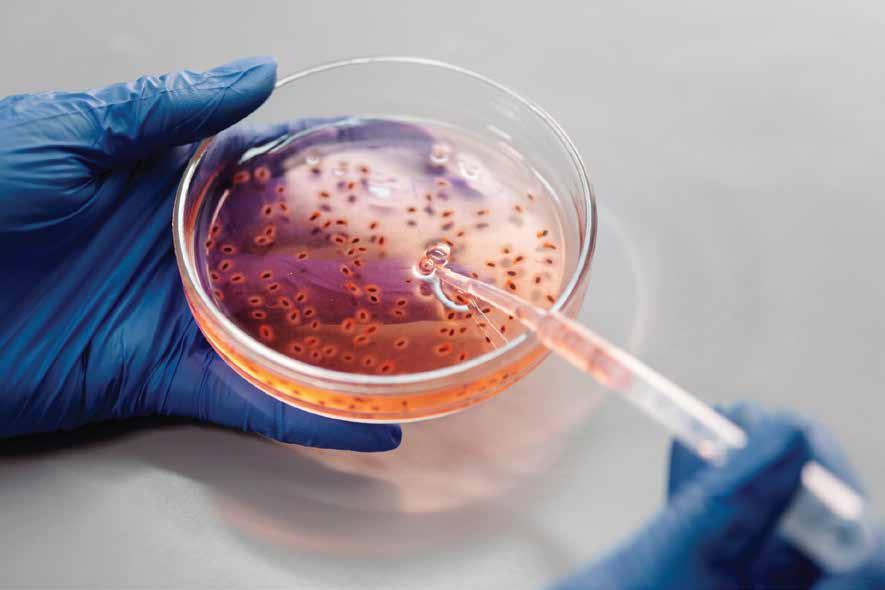
CeNAT Identification of sectors CeNAT has relation with as of November 2022 Education 2018 Social 2018 Health 2018 Energy 2018 Agriculture 2018 Local-Municipalities 2018 Aerospace 2018 Tourism 2018 Environmental 2018 Food 2018 Technology 2018 National Security 2018 Medical Physics 2018 Biodiversity 2018 Drug development 2018 Biorefinery/Bioeconomy 2018 Medical Devices 2018 Aeronautics 2018 Accreditation 2019 Art and Culture 2019 Sports 2019 Textile 2019 Transportation 2020 Marine-fishing Ministry of Treasury 2021 Regulation 2021 2021 Forest 2021 Innovation 2021 Banking and finances 2022
145
Source: Information for the year 2022 provided by the Laboratories and Areas of CeNAT.
Institutions that maintain a link with CeNAT by 2022
Centro Nacional de Alta Tecnología
CeNAT
Hacienda
MICITCONICITT
Ministry of Health
Min. of the Presidency
MEIC
MINAE Civil Aviation
CCSS
Min. of Public Security
Ministry of Justice
Professional Guilds
ECALACOMET MAG
INA CONAVI
MOPT
MEP
LANAMNE
INEC
BCCR
ICE
Public Universities
Procomer
CINDE CNFL
Banco Popular COMEX
Estado de la Nación
Recope
Institutions linked to CeNAT in the year 2022
Inst. Nat. Innovation and Technology Transfer. Agriculture
Comptroller General of the Republic (CGR)
146
Ministry of Housing and Human Settlements (MIVAH)

Source: Information for the year 2022 provided by the Laboratories and Areas of CeNAT. Institutions linked with CeNAT in 2022 CeNAT MEIC MINAE MAG ICE Aviación Civil ECA-LACOMET INEC CCSS Ministerio de Jus�cia MEP MOPT Cámara TIC MICITTCONICIT CSUCA SENASA Banco Popular RECOPE Estado de la Nación Incorporated in 2020 Incorporated in 2019 Incorporated in 2018 Incorporated in 2021 Incorporated in 2022 Inst. Nat. Innova�on and Technology Transfer. Agriculture Ministry of Housing and Human Se�lements (MIVAH) CNFL Hacienda Procomer CNDE Comptroller General of the Republic (CGR) Meteorological Ins�tute Ministry of Health Public universi�es Professional associa�ons Associa�on of Agronomists COMEX 147

Source: Information for the year 2022 provided by the Laboratories and Areas of CeNAT. Institutions, organizations, and companies linked to CeNAT in the year 2022 MEIC MINAE MAG ICE INA ECA-LACOMET INEC BCCR CCSS MEP MOPT Cámara TIC MICITTCONICIT CSUCA SENASA Colegio de Agróno mos Banco Popular CNFL COMEX CINDE Procomer Hacienda ICAFE CANAPEP CANAPALMA Armada USA CORFOGA SCALAC UCIMED Meryland University NASA Servir NAT GEO JUPEMA Bri�sh Columbia University Incorporated in 2020 Incorporated in 2019 Incorporated in 2018 Incorporated in 2021 Incorporated in 2022 CeNAT Meteorological Institute Public universities Ministry of Health Civil Aviation Chamber of Tourism Chamber of Industries Association of Professionals of CGR ICT professional associations Ministry of Justice Inst. Nat. Innovation and Technology Transfer. Agriculture Ministry of Housing and Human Settlements (MIVAH) Comptroller General of the Republic (CGR) 148
Institutions that held and initiated linkages with CeNAT in 2022

Germany Argentina Australia Belize Bolivia Brazil Bulgaria Canada Chile China Colombia Cuba Ecuador El Salvador Slovenia Spain U.S France Guatemala Honduras England Israel Italy Japan Mexico Nicaragua Panama Paraguay Peru Portugal Czech Republic Republic of Korea Serbia South Africa Switzerland Turkey Uruguay Uganda Venezuela COUNTRIES Source: Analysis of the information provided by the directors of CeNAT's laboratories and programs, updated to November 2022. LANOTEC CENIBIOT Environmental Management CNCA PRIAS X X X X X X X X X X X X X X X X X X X X X X X X X X X X X X X X X X X X X X X X X X X X X X X X X X X X X X X X X X X X X X X X X X X X X X X X X X X X X X X X X X X X X X X 149
World map of the scope of CeNAT in 2022
Source: Analysis of the information provided by the directors of CeNAT's laboratories and programs, updated to November 2022.

150
Articulating entity
Articulating entity
Strategic solutions
Interuniversity cooperation
Interuniversity cooperation
Scientific designs
Scientific designs
Strategic solutions
Scientific services

2022 2019
Source: Information for the year 2022 provided by the Laboratories and Areas of CeNAT. Centro Nacional de Alta Tecnología CeNAT Scientific Publication Social Outreach Strategic Alliances Strategic Alliances Cooperation collaboration Cooperation collaboration
efficiency
efficiency
Perception of what the institutions have done with CeNAT in relation to the years 2019 and 2022
Management
Management
Scientific services
Work quality 151
Expectations of CeNAT institutions in the next 5 years
CeNAT at the forefront of research

CeNAT as an ally to meet institutional objectives
CeNAT supports country goals
CeNAT supports reliability of the data (2)
CeNAT in the development of joint projects (4)
CeNAT in scientific training
CeNAT in institutional relation strengthening
CeNAT as an innovative institution
CeNAT conducting joint research
CeNAT is closer to the academy
CeNAT as organizer of scientific events
CeNAT in participation in international projects (2)
CeNAT in joint publications
CeNAT in solutions to global problems
CeNAT socializes the use of information
CeNAT as support to the productive sector
CeNAT in municipal collaboration
CeNAT as support in purchasing services
CeNAT as Prototyping support
CeNAT in community projection
CeNAT in institutional projection
CeNAT in scientific publications
CeNAT in scientifically-correct relationship
CeNAT in PINN-funded services
CeNAT with permanent relationship (2)
CeNAT in upscaling of technology transfer (3)
CeNAT in research projects (3)
CeNAT does not compete for research funds (3)
CeNAT as strategic partnerships (4)
CeNAT in effective collaborations (7)
Source: Information for the year 2022 provided by the Laboratories and Areas of CeNAT.
152
Centro Nacional de Alta Tecnología
CeNAT 2019 2022
INDICATORS OF INSTITUTIONAL WORK
Impact Reached in 2022 at CeNAT

509,239 Average reach of Facebook posts

15,076 Facebook Followers
49 Nationalities of Facebook followers
42,437
Number of countries that follow the page
154
3 Registered patents
7 Registration processes
2 Researchers in the United States Invention Registration

155
85 Scientific Publications
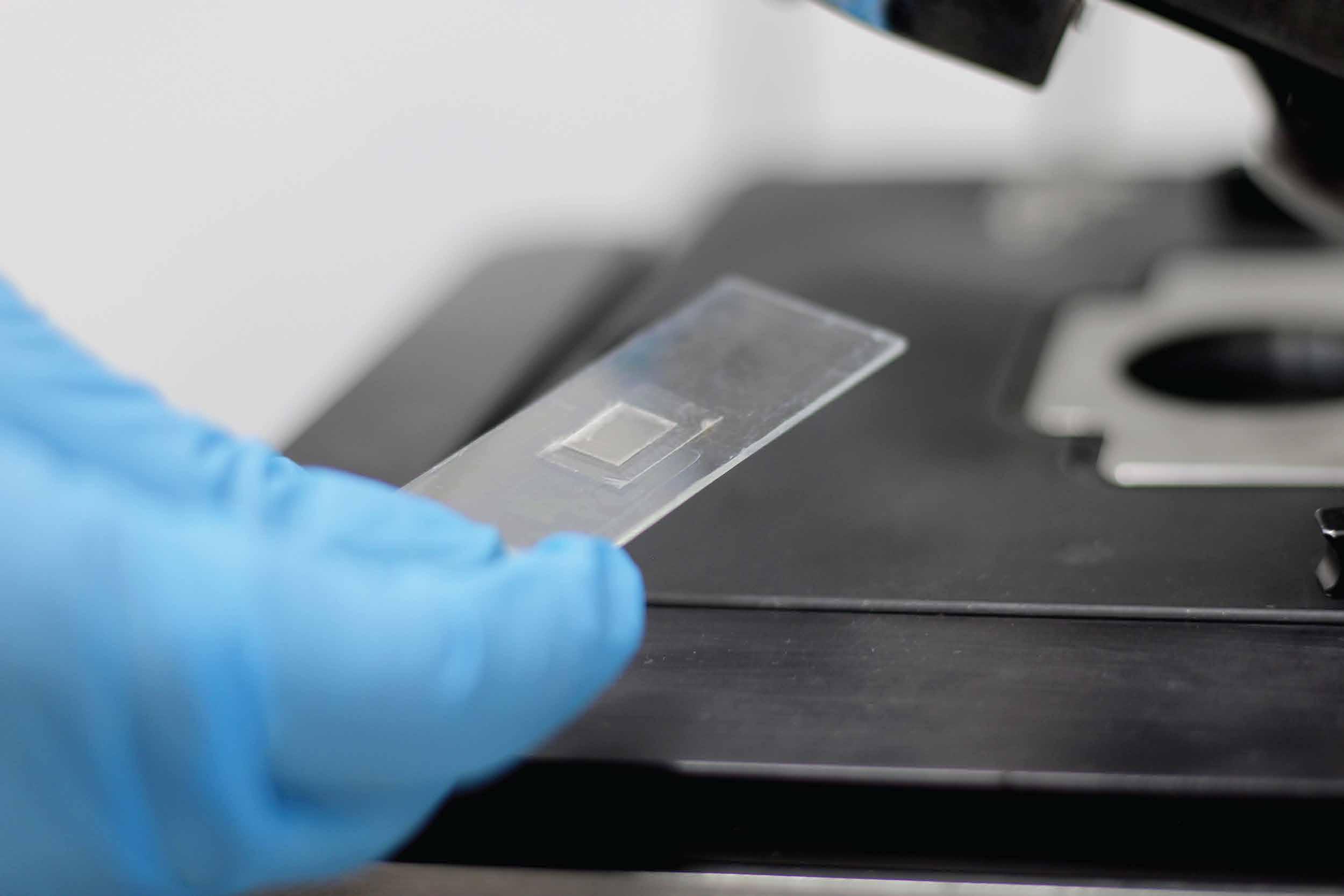
88 Projects developed within the triple-helix framework: Academic, Government, and Private Sectors.
187 Student interns in academic development projects
41 Scholarships
156
115 Knowledge transfers

14,864 People benefited by knowledge transfer from the laboratories
7 Chemistry Olympics supported by CeNAT
157
355 People using simulation cluster
522 Accounts with access to computing infrastructure services
70,460 Usage hours in simulations and data processing

158
144,161 Students and professors from public universities with access to the Edu-Roam network
106 Participating countries in the Eduroam network
2 trillions Logins to the Eduroam network in international territories
5 Eduroam deployed in the headquarters and campuses of the 5 Public Universities
14,533 Network services available to students, officials and
39 Support for applied science research companies
32 Support for applied science research organizations or institutions
Source: Information for the year 2022 provided by the Laboratories and Areas of CeNAT.

159
FunCeNAT and Financial Results

FunCeNAT and Financial Results

The Centro Alta Tecnología Foundation (CeNAT Foundation - FunCeNAT) was created by Act No. 7806, of May 25, 1998, with the purpose of managing the resources and attention of the institutional goals of the Centro Nacional de Alta Tecnología (CeNAT).
Article 3.- The State and its institutions are hereby authorized to transfer resources to the Centro Nacional de Alta Tecnología, whose administration and management will be handled by the Fundación Centro Alta Tecnología.
FunCeNAT is under continuous supervision by the Comptroller General of the Republic concerning the proper management and administration of the resources received under Act 7386. In the same way, it is audited continuously by CONARE Audit Department, in addition to third-party annual audits.
Furthermore, the Foundation has a Board, comprised of representatives of the State Institutions of University
Higher Education (IESUE), the local city government (Municipality), and of the Government of the Republic. The Board has appointed an Executive Director in charge of FunCeNAT.
It is worth mentioning that at the time of creating CeNAT, within the legal context, the chancellors of CONARE member universities also created the Centro de Alta Tecnología Foundation (FunCeNAT). This foundation addresses the special characteristics of CENAT in aspects related to its structure and the legal regime provided. Law No. 7806 of May 25, 1998, expressly recognized FunCeNAT as the entity that would hold the legal duty to administer the resources required for the execution of the projects developed through CeNAT.
The Foundation acts as a service platform that meets the needs of CeNAT, as well as the public and private projects it manages. For this reason, FunCeNAT actively collaborates in the work of the areas, laboratories, programs, and projects, providing support in administrative management in an efficient and transparent way, in sound financial management, in the organizational development at national and internationals, as well as legal support in the actions that the Laboratories, Programs, and Projects undertake. Through its work, it strengthens the link with CONARE, in addition to supporting communication and inter-sectoral articulation.
161
Science and Engineering of Materials
It always aligns all its activities with the guidelines issued by CONARE, its Board of Directors, the Comptroller General of the Republic, and the audit department of CONARE, as well as the External Audit, so that its activities and actions comply with all the applicable laws and regulations.
FunCeNAT is the foundation that provides ongoing support to CeNAT laboratories and programs based on four organizational development pillars, namely:
Administrative Management Legal Management
CeNAT
General Director of CeNAT
Human Talent Management Financial Management and Fundraising.
Biotechnology
Advanced Computing
Environmental Management
The operational structure below shows how CeNAT works.
Science, Culture and Society
FunCeNAT
Board of Directors
FunCeNAT
Executive Management
FunCeNAT
Administrative Management

Financial Management and Fundraising
Organizational Development Management
Legal Management
LANOTEC CENIBiot CNCA PRIAS Agromática Observatorio Climático
162
FunCeNAT and Financial Results


164

165
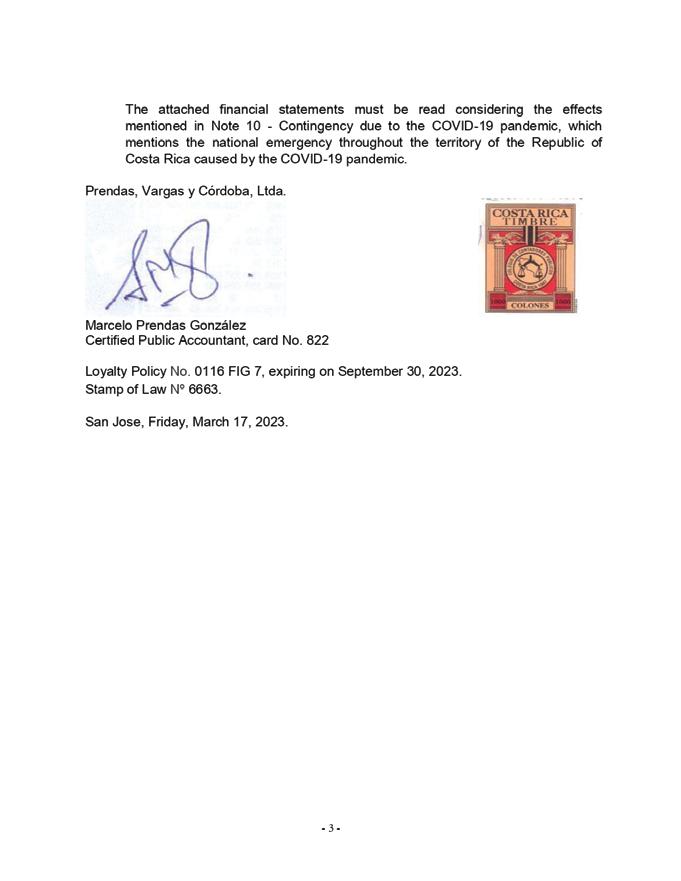
166
FUNDACIÓN CENTRO DE ALTA TECNOLOGÍA (Nonprofit Organization)

BALANCE SHEET
As of Saturday, December 31, 2022 and 2021 (Amounts shown in Colones)
payable and accumulated expenses Restricted funds projects - public funds Restricted funds projects - private funds
ASSETS 2022 2021 Current Assets: Cash
Transitory
Accounts
Total
Current Current
Accounts
Total
NET
Accumulated
Total current assets TOTAL
¢15,272,053 998,415,280 56,318,720 1,070,006,053 1,150,593,337 1,376,346 ¢2,221,975,736 ¢39,692,996 1,361,793,396 634,485,777 2,035,972,169 186,003,567 186,003,567 ¢2,221,975,736 ¢83,708,044 1,374,681,285 81,347,862 1,539,737,191 1,262,064,288 1,927,800 ¢2,803,729,279 ¢63,650,571 1,750,419,058 753,191,011 2,567,260,640 236,468,639 236,468,639 ¢2,803,729,279 167
and cash equivalents
investments
receivable
current assets Long-term investments Furniture and equipment, net amounts TOTAL ASSETS LIABILITIES
liabilities:
Liabilities
ASSETS
surplus
LIABILITIES AND NET ASSETS
FUNDACIÓN CENTRO DE ALTA TECNOLOGÍA (Nonprofit Organization)
COMPREHENSIVE INCOME STATEMENT AND ACCUMULATED SURPLUS FOR THE TWELVE-MONTH PERIOD ENDED Saturday, December 31, 2022 AND 2021 (Amounts shown in Colones)
SURPLUS (LOSS) FOR THE PERIOD ACCUMULATED SURPLUS AT THE BEGINNING ACCUMULATED SURPLUS AT THE END

2022 2021
Fund
Project
Total
EXPENSES:
REVENUE:
Revenue
Management Revenue Other Revenue
Revenue
Remunerations Services Materials and Supplies Depreciation expenses
Benefits Training and protocol Other minor expenses Total Expenses
¢67,407,535 35,377,076 12,393,924 115,178,535 145,794,149 6,209,203 209,525 551,454 11,006,551 1,519,228 353,497 165,643,607 (50,465,072) 236,468,639 ¢186,003,567 ¢104,423,217 55,960,077 8,303,258 168,686,552 127,714,838 6,067,299 596,055 854,300 5,241,105 1,241,154 309,032 142,023,783 26,662,769 209,805,870 ¢236,468,639 168
FUNDACIÓN CENTRO DE ALTA TECNOLOGÍA (Nonprofit Organization)
CASH FLOW STATEMENT FOR THE TWELVE-MONTH PERIOD ENDED DECEMBER 31, 2022 AND 2021 (Amounts shown in Colones)
Surpluses for the period
Adjustments to reconcile period surplus to net cash used in operating activities:
Depreciation expense
Cash received from operations
Changes in assets and liabilities that provide (or use) cash:
Accounts receivable
Restricted private funds
Restricted public funds
Accounts payable
Net cash received from operating activities
INVESTMENT ACTIVITIES:
Increase in long-term investments
Net cash paid (used) in investing activities
FUNDING ACTIVITIES:
Net cash paid (used) in investing activities
INCREASE (DECREASE) IN CASH AND TEMPORARY INVESTMENTS

CASH AND TEMPORARY INVESTMENTS, BEGINNING OF YEAR
CASH AND TEMPORARY INVESTMENTS, END OF YEAR
OPERATING ACTIVITIES 2022 2021 ¢(50,465,072) 551,454 (49,913,618) 25,029,142 (118,705,234) (388,625,662) (23,957,575) (556,172,947) 111,470,951 111,470,951(444,701,996) 1,458,389,329 ¢1,013,687,333 ¢26,662,769 854,300 27,517,069 (38,296,161) 38,096,996 249,864,941 (123,191,840) 153,991,005 51,302,228 51,302,228205,293,233 1,253,096,096 ¢1,458,389,329
169
Institutional Leadership

Consejo Nacional de Rectores
Francisco González Alvarado, MBA. Chancellor, National University
Rodrigo Arias Camacho, MBA. Chancellor, State University for Distance Education
Dr. Emmanuel González Alvarado, Chancellor, National Technical University
Dr. Gustavo Gutiérrez Espeleta, Chancellor, University of Costa Rica
Luis Paulino Méndez Badilla, Eng., Chancellor, Costa Rica Institute of Technology
Scientific Council
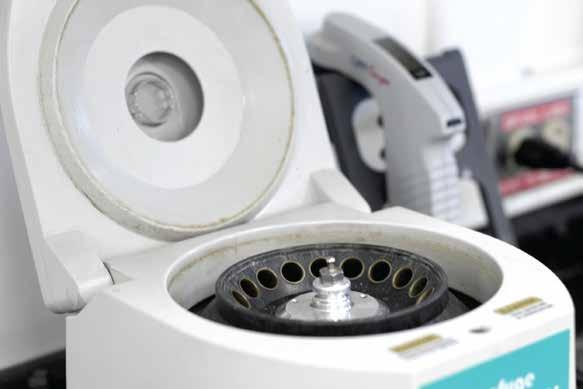
Dr. María Laura Arias Echandi, Vice Chancellor for Research, University of Costa Rica
Jorge Chaves Arce, M.Sc., Vice-Chancellor of Research, Costa Rica Institute of Technology
Dr. Jorge Herrera Murillo, Vice Chancellor of Research, National University
Rosibel Viquez Abarca, PhD., Vice-Chancellor of Research, State University for Distance Education
Guillermo Hurtado Cam, Eng., Vice Chancellor of Research and Transfer, National Technical University
Dr. Floria Roa Gutiérrez, Vice-Chancellor for Research and Extension, Costa Rica Institute of Technology
171
Strategic Partners
University of Costa Rica
Costa Rica Institute of Technology
National University
Universidad Estatal a Distancia (State Distance Education University)

Universidad Técnica Nacional (National Technical University)
CONICIT
MICITT
Laboratory Directors
Dr. José Vega Baudrit, Director, National Nanotechnology Laboratory
Dr. Randall Loaiza Montoya, Director, CENIBiot Laboratory
Dr. Esteban Meneses Rojas, Director, National Collaboratory of Advanced Computing
Allan Campos Gallo, MBA Director, Environmental Management Area
Cornelia Miller Granados, MBA PRIAS Laboratory Director
Directorate of CeNAT
Eduardo Sibaja Arias, MBA Eng., Director, CeNAT
Karol Palma Odio, Direction Administrative Assistant

172
CeNAT
Rubén Padilla Hernández
Sugey Rivera Obando
Andreina Leal Sánchez
CeNATEnvironmental management
Kimberly Sanchez Calderón
LANOTEC
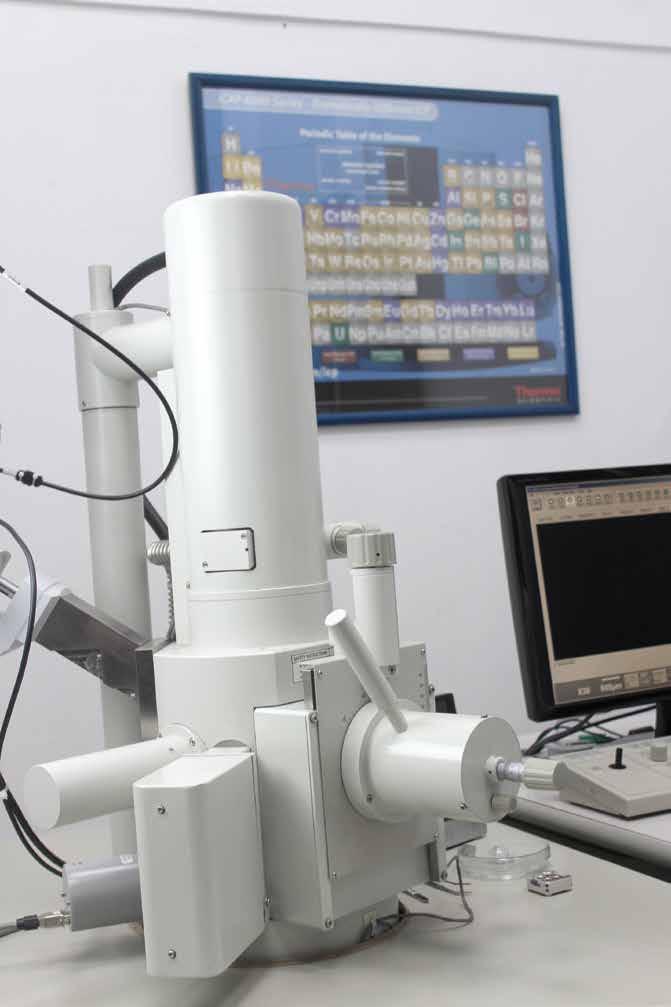
Andrea Araya Sibaja
Diego Batista Menezes
Gabriela Montes de Oca Vásquez
Ignacio Dorge Durán
Juan Miguel Zúñiga Umaña
Melissa Camacho Elizondo
Rebeca Corrales Brenes
Rebeca Rodríguez Fonseca
Reinaldo Pereira Reyes
Rodrigo Mora Bolaños
Sergio Paniagua Barrantes
Yendry Corrales Ureña
Officers
173
CNCA
Melissa Hernández Sánchez
Edward Soto Castro
Mariela Abdalah Hernández
Jean Carlo Umaña Jiménez
Fabricio Quirós Corella

Raquel Miranda Pérez
Maripaz Montero Vargas
Red CONARE
Carlos Gamboa Venegas
174
PRIAS
Heileen Aguilar Arias
Marilyn Ortega Rivera
Christian Vargas Bolaños
David Romero Badilla
PRIAS-MOCUPP
Armando Antonio Vargas Céspedes
Jennifer Fernández Garro
Sofía Acuña López
Ezequiel Fallas Montero
Sofía Hernández Hernández
Marilyn Manrow Villalobos
Esteban Montenegro Hernández
Yorleny Calvo Elizondo
María Fernanda Obando Picado
Yerlin Vargas Solano
Ketcha Hernández Vargas
Francini Corrales Garro
Private Projects
Kenneth Obando Rodríguez
Gabriel Salas Gutiérrez
Maria Camila Aguilar Gomez

Milagro Jiménez Rodríguez
Stephanie Leitón Ramírez
Iván Dimitri Ávila Pérez
175
CENIBiot
Max Chavarría Vargas
Emanuel Araya Valverde
Pamela Alfaro Vargas
Jose Pablo López Gómez
Jonathan Parra Villalobos
Vanessa Maria Rivera Mora
Rachel Ardón Rivera
Erika Barrantes Murillo
Silvia Elena Fernández Fernández
Melissa González Sanabria
Valeria Leandro Arce
Cristofer Orozco Ortiz
Natalin Picado Canales
Douglas Alberto Venegas González
Daniela Wicki Emmenegger
Yosimar González Fernández
Daniel Andrés Alvarado Villalobos

Jorge Alberto Araya Mattey
Wendoly Arias Salazar
Monica Baizan Rojas
Camila Charpentier Alfaro
Melissa Maria Chaves Phillips
Melanie Góchez Villalobos
Jessica Montero Zamora
Aníbal Mora Villalobos
Rodrigo Muñoz Arrieta
Mónica Rojas Gómez
Manuel Felipe Vasquez Castro
Mónica Zamora Rodríguez
176
Program Coordinators
Food Safety And Slow Food
Agromatics,
Managing Board of Fundación Centro de Alta Tecnología
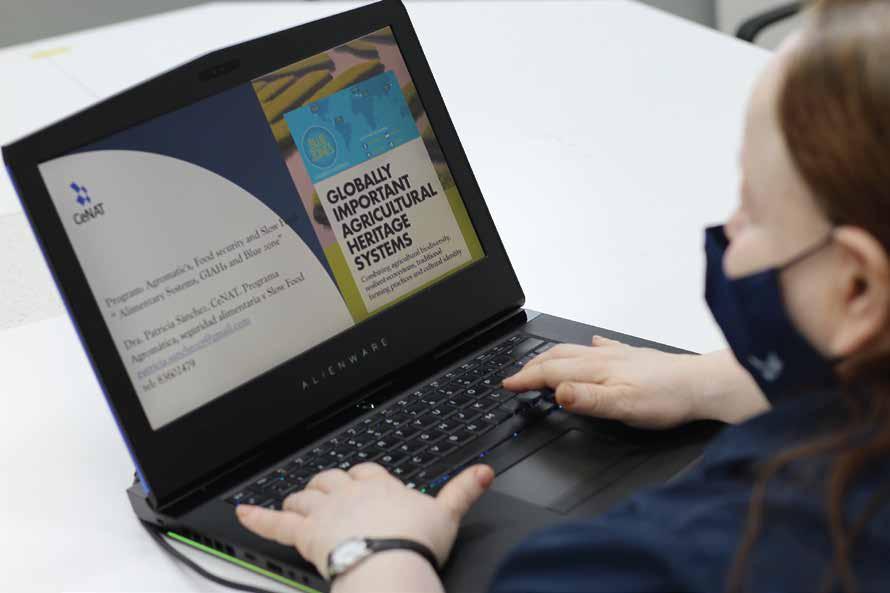
President Secretary Treasurer
Board Member 1
Board Member 2
First Comptroller
Second Comptroller
Second Comptroller
CeNAT Director
OPES-CONARE- Legal Advisor
Francisco González Alvarado, MBA
Rodrigo Arias Camacho, MBA
Dr. Emmanuel González Alvarado
Dr. Marielos Aldi Villalobos
Dr. Rose Marie Ruiz Bravo
Dr. Gustavo Gutiérrez Espeleta
Luis Paulino Méndez Badilla, Eng.
Jorge Chaves Arce, Eng.
Eduardo Sibaja Arias, MBA
Ms. Gastón Baudrit Ruiz
Dr. Patricia Sánchez Trejos
177
Administrative Management of FunCenat

Cynthia Cordero Solís, MBA
Mauricio Segura Chacón
Jeannette Vargas Arce
Yakelyn Bejarano López
Margarita Quan Zepeda
María Fernanda Hernández
Jiménez
Carolina Morales Cerdas
178
FunCeNAT
SCHOLARSHIPS
Scholars and Collaborators

CENIBiot
Adrian Villalobos Cano
Ana Víctoria Elizondo Masis
Antony Andrey Torres Solano
Daniela Vásquez Vásquez
David Redondo Acuña
María Valeria Rojas Chinchilla
Rodrigo Muñoz Arrieta
Sheila Jiménez Mesén
Costa Rica Institute of Technology (TEC)
National University of Costa Rica (UNA)
University of Costa Rica (UCR)
University of Costa Rica (UCR)
Costa Rica Institute of Technology (TEC)
National University of Costa Rica (UNA)
University of Costa Rica (UCR)
University of Costa Rica (UCR)
179
CNCA
Johansell Villalobos Cubillo
Luis Pedro Morales Rodríguez
Kenneth López Pérez
Javier Rodríguez Yañez
Eduardo Aguilar Bejarano
Carlos Pasquier Jaramillo
GESTIÓN AMBIENTAL
Costa Rica Institute of Technology (TEC)
Costa Rica Institute of Technology (TEC)
University of Costa Rica (UCR)
University of Costa Rica (UCR)
University of Costa Rica (UCR)
University of Costa Rica (UCR)
Ingrid Molina Mora
University of Costa Rica (UCR)
Rubén Sánchez Alvarado
National University for Distance Education (UNED)
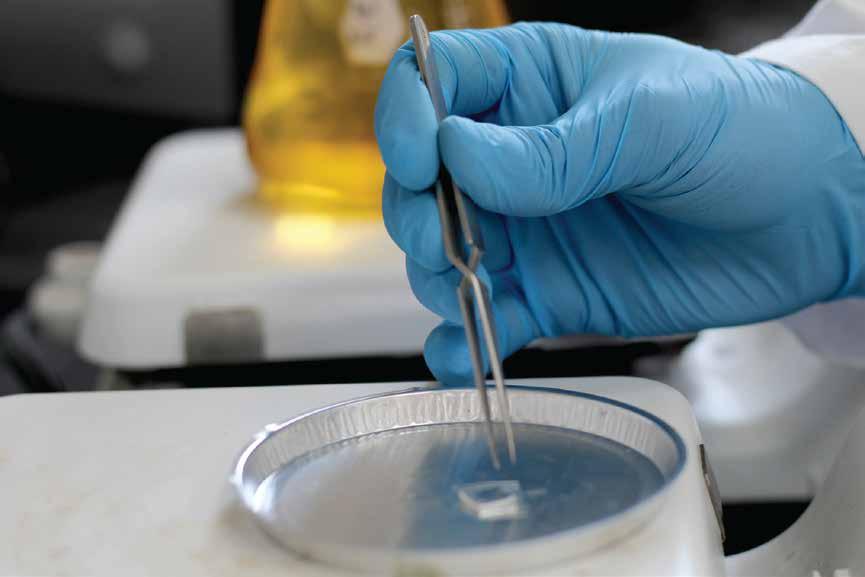
Karina Ramírez Monge
University of Costa Rica (UCR)
Andrea Rivera Álvarez
University of Costa Rica (UCR)
Fiorella Calderón Jiménez
Costa Rica Institute of Technology (TEC)
180
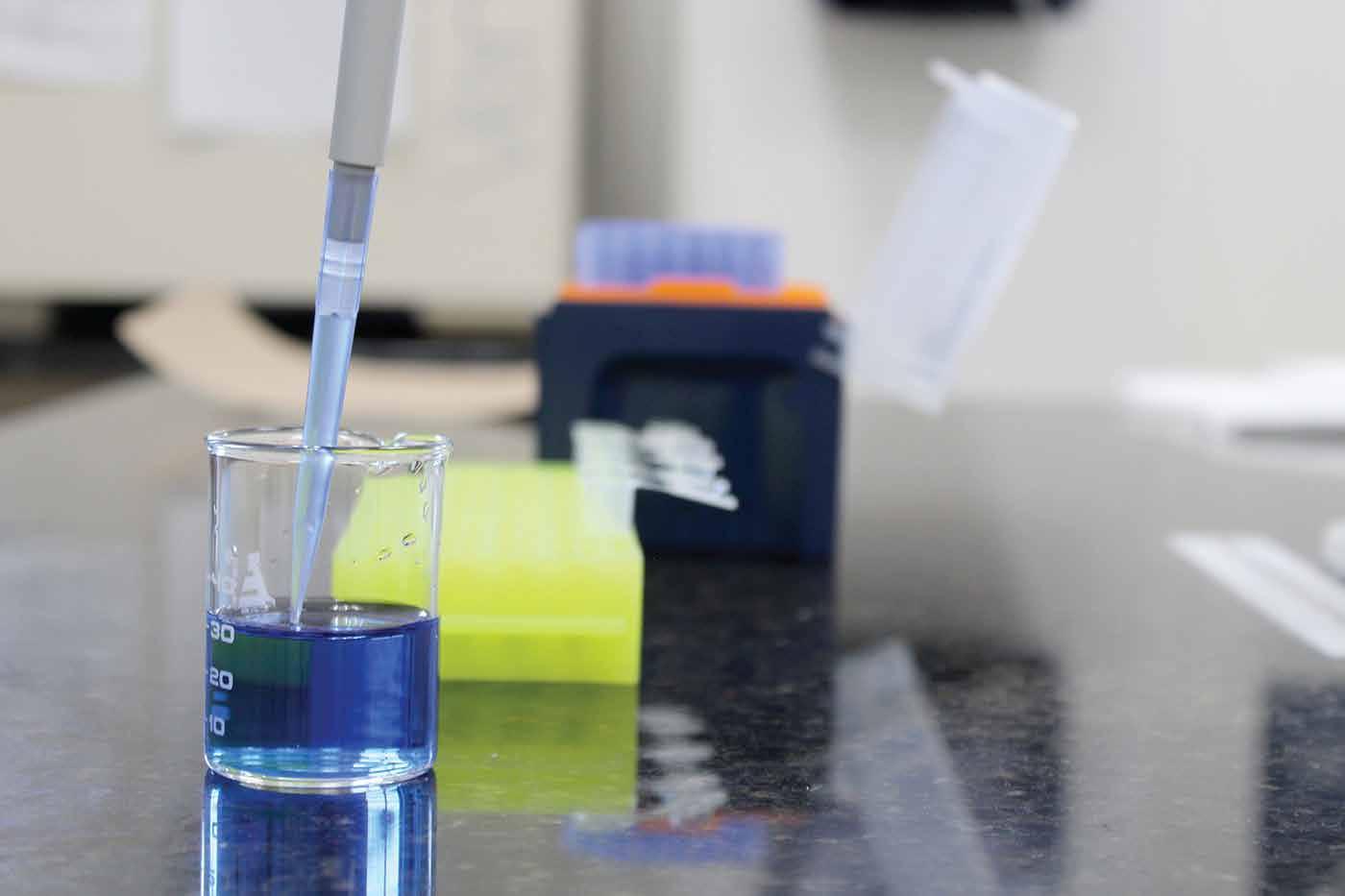
181
TEAM MEMBERS
CENIBiot
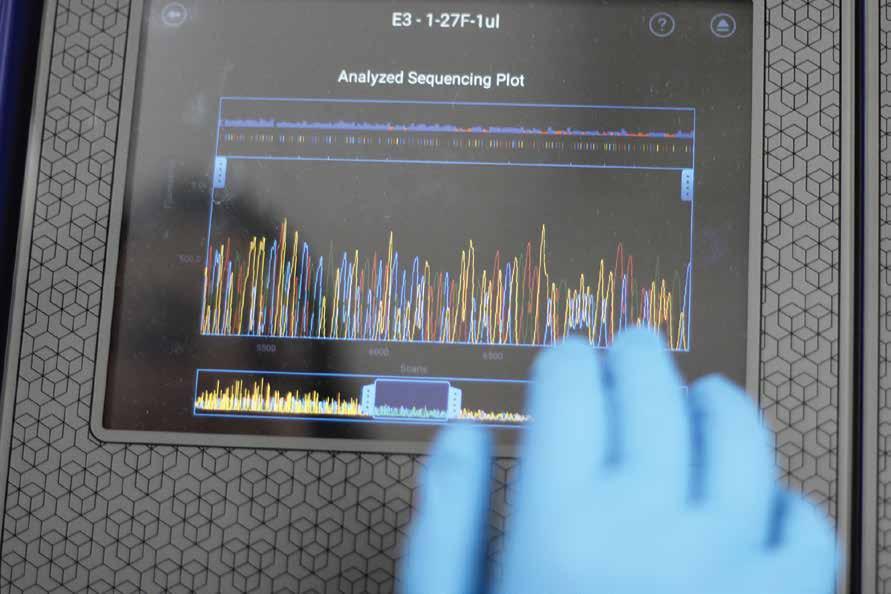
Alejandra Guadalupe Deras
Santos
Alexander Monge Zuñiga
Alonso Segura Valverde
Ana Elena Retana López
Ana María Araya Zuñiga
Andrés Alonso Montoya Ruiz
Angelica Sibaja Salazar
Ariadna Gutiérrez Fajardo
Arianna Gabrielle Campos
Carpio
Ariel Arroyo Chavez
Carolina Fuentes Mora
Carolina Herrera González
Cristopher Arguello Rivera
Danae Villafuerte Mena
David Andrés Vega Zumbado
Dayana Porras Hidalgo
Denis Castro Bustos
Diana Marcela Bravo
Estupiñan
Diego Rojas Gatens
Diogenez López Barrantes
Efraín Escudero Leiva
Erika Barrantes Murillo
Erika Chavarría Borbón
Fiorella Gazo Bryan
Genesís Agüero Noguera
Gloriana Ramos Azofeifa
Hazel Alvarado Pérez
Isaac Hidalgo Quirós
Isaac Vargas Solórzano
Jaka Vrevc Zlajpah
Jason Cambronero Duran
Jazmín Calderón Quirós
Jeferson Camacho Valverde
Johanna Sophie Rehfeld
Johel Delgado Flores
Jorge Araya Mattey
José Pablo Rojas Molina
Juan Ignacio Garro Rodríguez
Julián Picado Morales
Juliana Mora Martínez
Karla Montero Castro
Karolay Solís Esquivel
Katherine Valverde Madrigal
Kevin Hernández Ledezma
Kryssia Castro Campos
Layla Nassar Miguez
Luis Diego Hidalgo Badilla
María Alejandra Valejo Salas
María José Torres Hidalgo
María Lineth Rojas Salazar
María López Gómez
Mariana Montero Rodríguez
Mariana Campos Hernández
Mariana Elizondo Blanco
Mariana González Delgado
Mario Andrés Porras Valverde
Marjorie Miranda Angulo
Miguel Ángel Vega Fernández
Natalia Luna Sánchez
Natalin Picado Canales
Nataly Victoria Monge López
Neyshmi Barboza León
Pamela Sevilla Cortés
Rachel Ardón Rivera
Reymon Enrique Rojas Marín
Ricardo Hernández Moncada
Saúl Sandoval Hernández
Silvia Fernández Fernández
Stefany Jiménez Villalobos
Tomaz Zupan
Valeria Leandro Arce
Valeria Rojas Chinchilla
Valery Bolaños González
Victoria Rodríguez Peña
182
MANAGEMENT
Andrea Rivera Álvarez
Daniel Serrano Delgado
Fiorella Calderón Jiménez
Daniela Arias González
Victor Carvajal Vega
Jazmín Calderón Quirós
Victor Carvajal Vega
Jazmín Calderón Quirós
Daniela Arias González
Charys López Borbón
Martha Montero Vindas
Wenfry Grijalba Villegas
PRIAS


Gabriela Chaves Brenes
Manuel Calderón Rodríguez
Mariana Jiménez Venegas
César Castro Azofeifa
Jimena Araya Castillo
183
LANOTEC
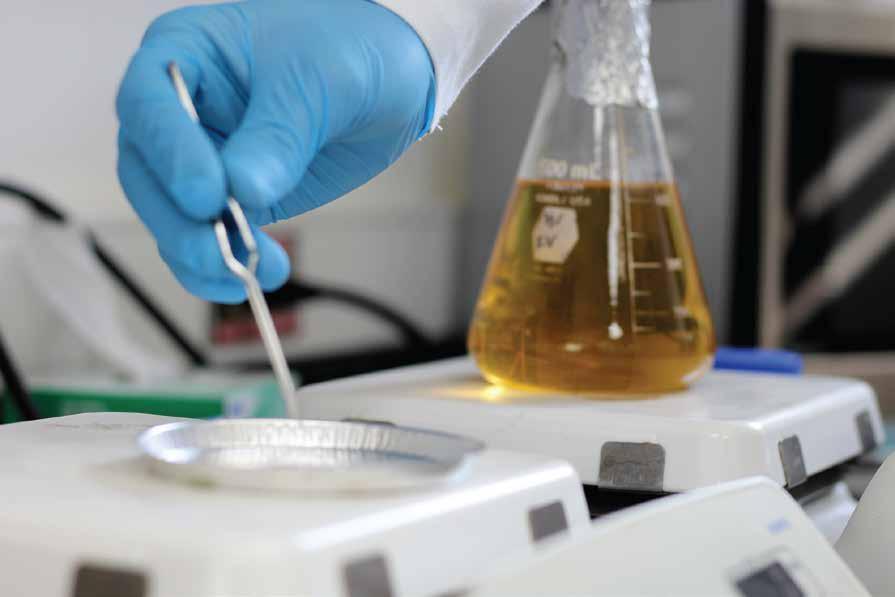
Beatriz Vega C
Daniela Ortiz Ceciliano
Sofia Gómez Solano
Viviana Orozco Fernández
Andrea Rivera Álvarez
Sara Cordero Fuentes
James Suarez Campos
Katherine Hernández
Xiomara Marchena Quirós
Jorge Blen Esposito
Merlin Bolaños Espinoza
José Cuadra Hernández
Elías Gairaud Benavides
Karen Salazar Barrantes
Ernesto Villegas Villegas
Kristchel Alondra Aguilar
Delgado
Kollen Alvarado Rodríguez
José Pablo Chávez Pérez
Jorge Francisco Blen Esposito
Merlin Bolaños Espinoza
José Ignacio Cuadra
Hernández
Elías Francisco Gairaud
Benavidez
Estéfano Montalvan Mena
Beatriz Amanda Ulate Caballero
Cristopher Arguello Rivera
Cynthia Castro Becerra
Isabel Carvajal Johnson
Fran Jule Cornelia Fiori
Kevin Chinchilla Mora
Nicole De Los Ángeles Vílchez
Mejías
Noelia Cortés Granada
Royer Méndez Ramírez
María Fernanda Abarca
María Paula Valverde Mora
Camilo Zapata Segura
Ricardo Quesada Grosso
Sergio Solano Calderón
Jafeth Méndez Gómez
Luis Montes de Oca Vásquez
María Guadalupe Lomeli
Ramírez
Magdalena Gónzalez Pérez
Julián Sánchez Castro
Jéssika Torres Segura
Juan Carballo González
Michelle Gutiérrez Campos
Beatriz Vega Barquero
Luis Diego Alvarado Corrella
Jimena Arias Ulloa
Krissia Wilhelm Romero
Iván Solís Sandí
Kevin Segura Rodríguez
Paulina Fernández Méndez
Josué Cordero Guerrero
184


1.3 km. norte de la Embajada de los Estados Unidos. Pavas, San José, Costa Rica (506) 2519-5835 | Fax: (506) 2232-0423 cenat@cenat.ac.cr www.cenat.ac.cr /centro.nacional.de.alta.tecnologia Transforming Knowledge into Development 2022



















































































































































































 Granja Avícola Santa Marta
Source: Information provided by CeNAT's laboratories for 2022.
Granja Avícola Santa Marta
Source: Information provided by CeNAT's laboratories for 2022.


 National School of Civil Protection of the United Mexican States
Recluta Talent Hunter Consulting Firm
CSUCA, USAC
Stanford University
National School of Civil Protection of the United Mexican States
Recluta Talent Hunter Consulting Firm
CSUCA, USAC
Stanford University






















































